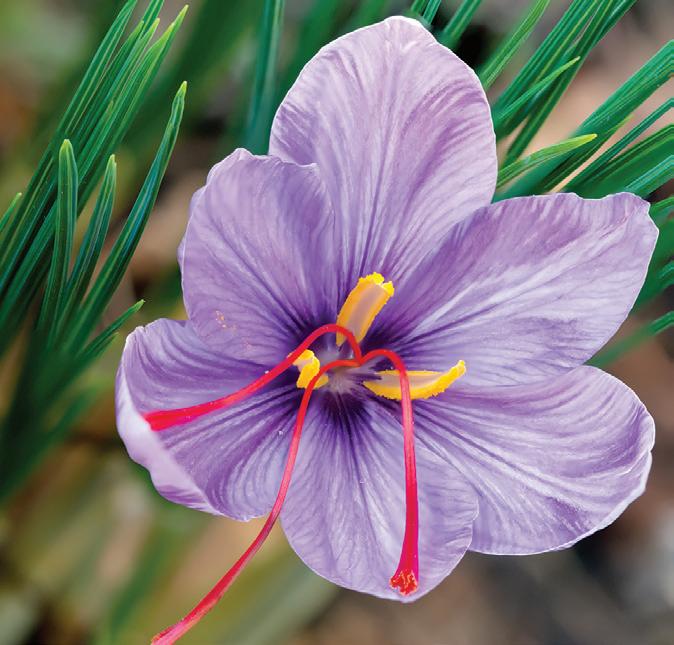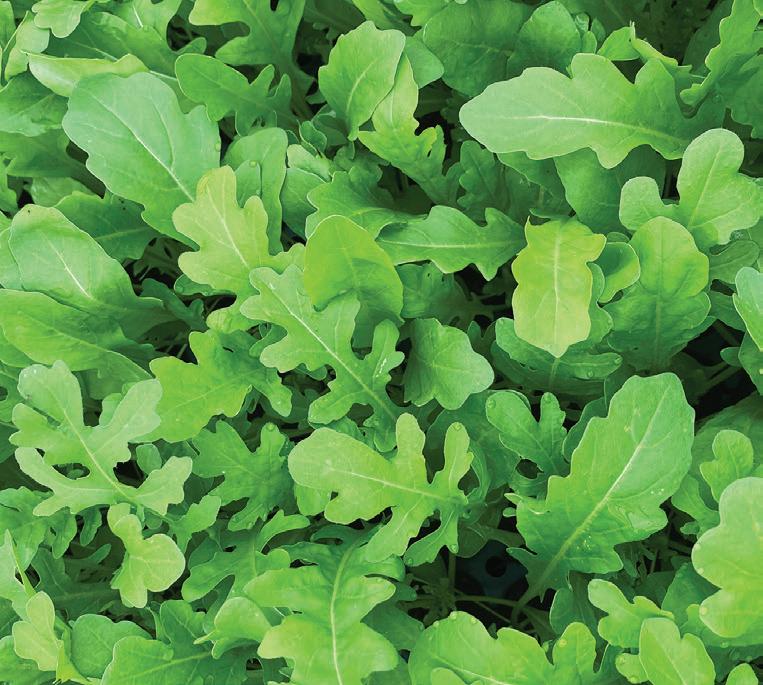

ESSENTIAL SEEDS, PLANTS & SUPPLIES FOR FALL & WINTER GARDENING




ESSENTIAL SEEDS, PLANTS & SUPPLIES FOR FALL & WINTER GARDENING




Ficus carica This recently introduced dwarf fig tree is truly phenomenal! Renowned for its robust flavor, the medium-sized brown figs feature sweet, pink-reddish flesh. Ideal for patio and container gardening, it requires minimal upkeep and pruning, typically reaching heights between 20 and 28 inches. Fignomenal begins yielding abundant fruit 2 to 3 years after planting, providing two harvests annually, and can bear fruit throughout the year when brought indoors during winter. While it adapts well to various soil types, it thrives in well-draining, fertile soil with a pH between 5.0 and 6.5. Whether enjoyed fresh or dried, the fruit makes an excellent addition to charcuterie boards, offers a unique dessert option, and will enhance your various other culinary creations! Hardy in zones 7–10.
XF133C FIGNOMENAL FIG
1 plant
$24.95 Ships September

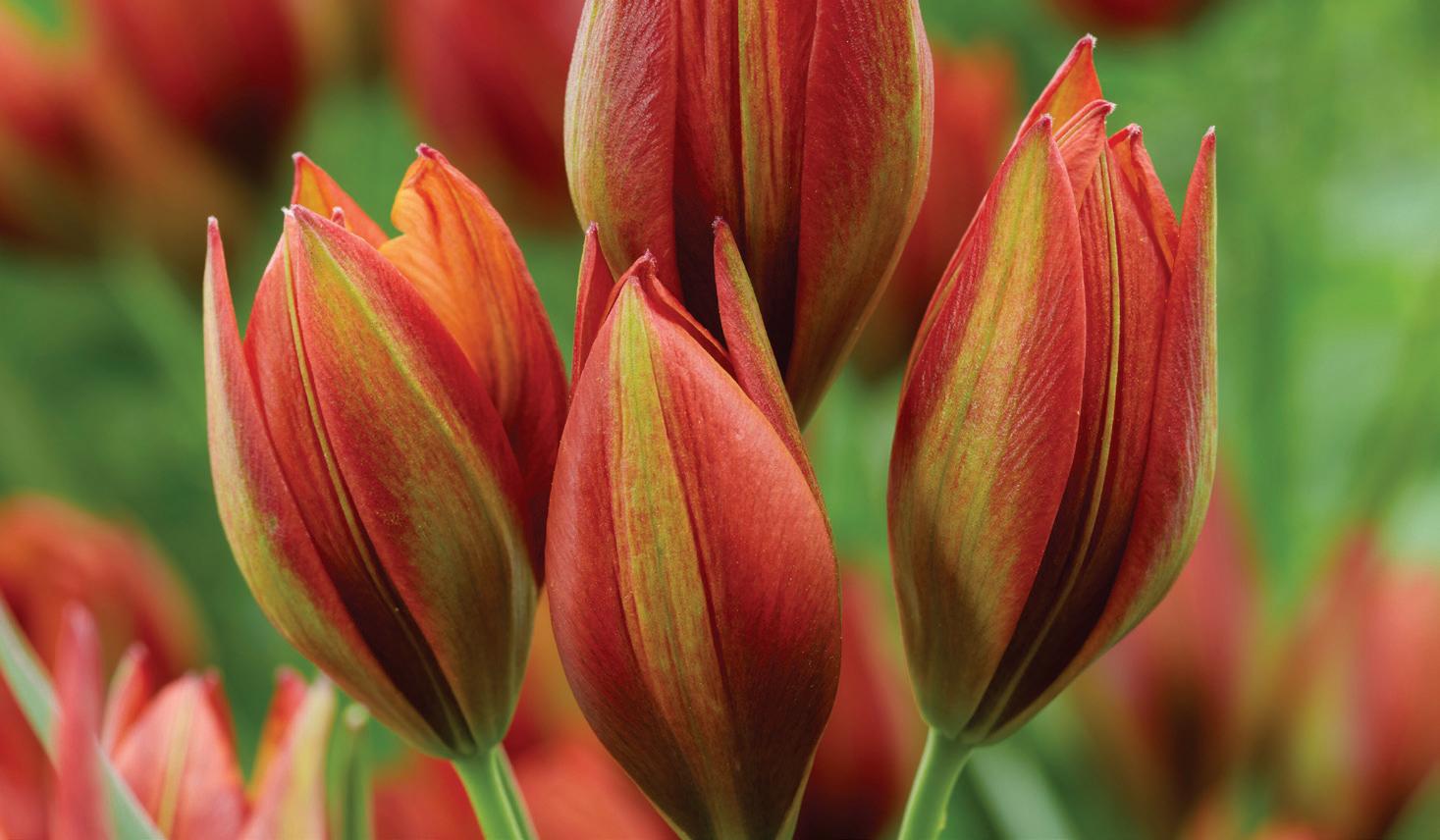
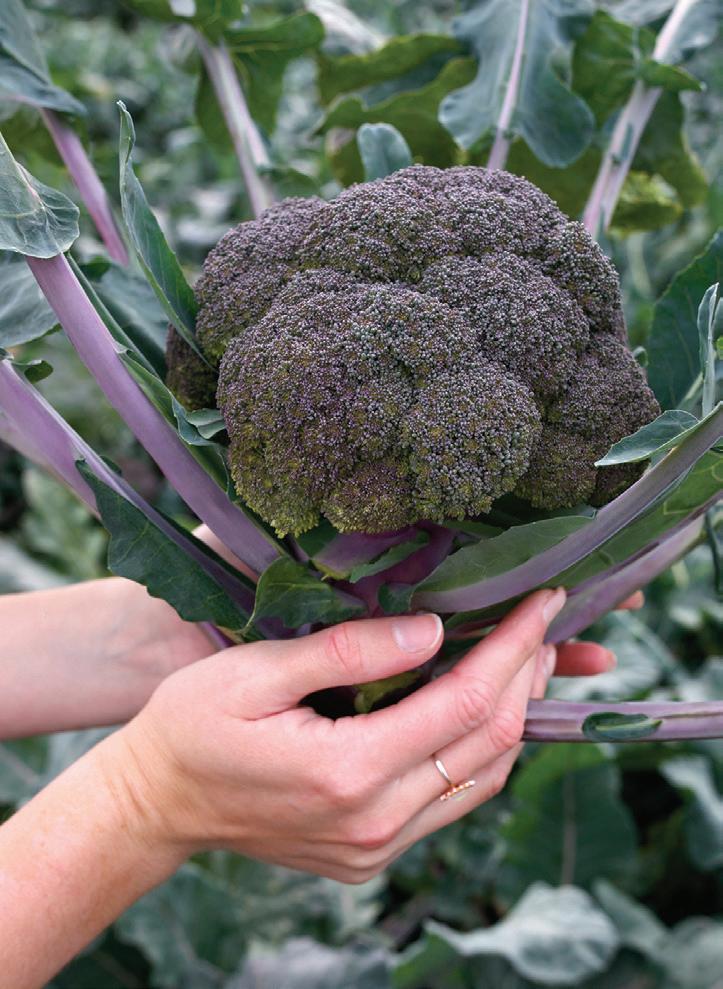

Fig trees ship in September in 4 inch pots. Order early for best availability. Detailed planting instructions are included with each order, and may be obtained on our website. Available only within the contiguous US.


At Territorial our products are backed by our full guarantee. We want you, our customers, to be 100% satisfied with the seed, plants and supplies that you purchase from us. If anything you buy from Territorial proves to be unsatisfactory, we will either replace the item or refund the purchase price, whichever you prefer.
LIMITATION OF REMEDY: The liability of Territorial Seed Company for any loss or damage arising out of the purchase or use of its seeds or other products including loss or damage resulting from negligence or strict liability in tort, shall be limited to replacement of the item or the return of the purchase price. As is customary in the seed trade, in no case shall Territorial be liable for more than the purchase price of the seed or product. Territorial has based the prices of its seed and products on this limited warranty and liability, and these prices would be much higher if further liability coverage was required. By ordering such seeds and products, the purchaser acknowledges this limited warranty. Our

and
are guaranteed for an entire year from the date of purchase.
© 2024 Territorial Seed Company, PO Box 158, Cottage Grove, Oregon 97424-0061. Prices and shipping rates subject to change without


All-America Selections winner
Container-friendly variety
Heirloom variety
NEW New to Territorial Seed
Organic availability
Pelleted availability


Reintroduction of a TSC favorite
Seed Tape availability
Taste-test favorites
Territorial Select Maintenance Breeding Program
(A) Annual (B) Biennial (P) Perennial (TP) Tender Perennial (F1) Hybrid variety
(OP) Open-pollinated variety


Full Sun
Partial Shade
Full Shade
Great for Cutting & Crafting
Culinary
Tea Has Extra Shipping Weight
As charter signers, we pledge that we do not knowingly buy or sell genetically engineered seeds or plants. We wish to support agricultural progress that leads to healthier soils, genetically diverse agricultural ecosystems, and ultimately people and communities. All of our seed is untreated.

There are several ways to approach fall and winter gardening, and certain vegetables will perform better when planted and harvested within the appropriate time frame. If possible, plant certain crops to harvest in fall, winter, and spring to guarantee yourself a continuous supply of produce throughout the cold months. Consult our Winter Gardening Chart (page 5) and individual crop culture information to determine which crops will work best for your needs.
l For fall harvest: schedule your plantings so that tender crops mature by your first frost date
l Other cool-season vegetables can last into winter but should generally be harvested and stored inside or in a root cellar before temperatures reach freezing point
l For winter harvest: in areas with milder winters, crops can be grown to maturity before growth is effectively halted by decreasing day length and cold temperatures
l For spring/overwintering harvest: time your crops so that they are established but not mature at the onset of winter; successfully overwintered crops will produce early in spring
l Crops that overwinter well include leafy greens, some root vegetables, peas, onions, garlic, and sprouting crops like broccoli

l Choose a site that has the greatest amount of sun exposure; areas that are sunny in the summer are often not throughout the winter
l Soil should be well drained to handle winter precipitation—raised beds are best for this
l Overwintering crops should be spaced wider than spring or fall planted crops; this increases air flow, discourages pests, and allows the soil to dry out
l Growth slows throughout the fall and nearly stops when day length is less than 10 hours; for those crops that you want to harvest throughout the winter, plan to have them near or at maturity by this time
l The challenge to successfully growing winter crops is getting them established in the right time frame, often in summer when the weather is hot and dry —starting seedlings indoors, as well as using shade cloth and overhead watering will help keep seedlings cool during establishment
l Delaying planting a few days in the summer can translate to delayed fall or winter harvest by weeks
l For the most part, days to maturity (DTM) listed in this catalog are for spring planting; to adjust DTM for fall/winter harvest, take stated DTM and add 2‒3 weeks to account for slower growth due to shortening days
l Direct-seeded crops should be watered lightly and frequently to encourage even germination and to prevent the soil from crusting
l Please keep in mind that planting and harvest dates are for the Maritime Northwest; check local resources for adjusted planting times for your area
l Because nutrient uptake slows during the winter, avoid fertilizing too heavily in the fall
l Foliar feeds are a good way to feed plants in the fall
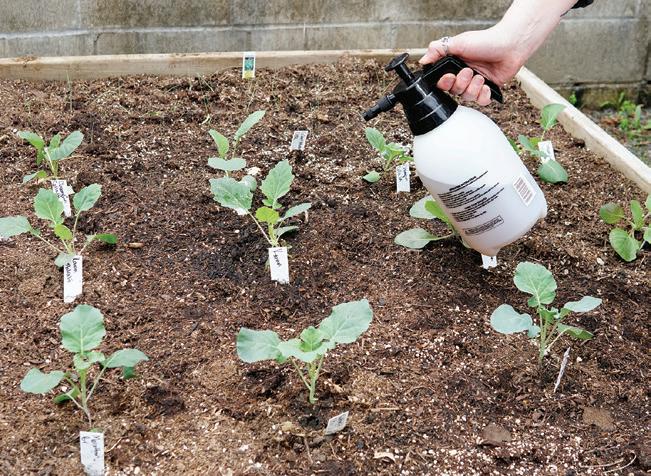



l Tender crops can be fall harvested up until the cold weather kills them off
l When making successive sowings of fall crops, start seeds at a shorter interval to account for slower growth
l Only plant winter-hardy or overwintering varieties for winter or spring harvest
l Sprouting vegetables such as broccoli, cabbage, and cauliflower may be overwintered at an immature stage and will produce the next spring
l Overwintered greens such as kale and collards will produce delicious flower stalks in the spring
l Most root vegetables can overwinter in the ground; plan on harvesting them all by spring, as they will bolt when the weather warms up and the days get longer

l Using season extension techniques can prolong harvest of tender crops into the winter, overwinter otherwise not hardy crops, and allow for earlier planting in the spring
l When used properly in combination, season extension can add up to a month on either end of the growing season
l Raised beds elevate plants above the ground, warming the soil and improving access to light
l Reemay and frost blankets cover plants, trapping in solar warmth, and protecting against frost damage; see product listings (page 52) for their insulation capabilities
l Low tunnels are waist-high frames fashioned from PVC or electrical conduit, and covered with Reemay or greenhouse plastic that cover a row or two
l Cloches are small bell-shaped vessels that create a mini-greenhouse around individual plants



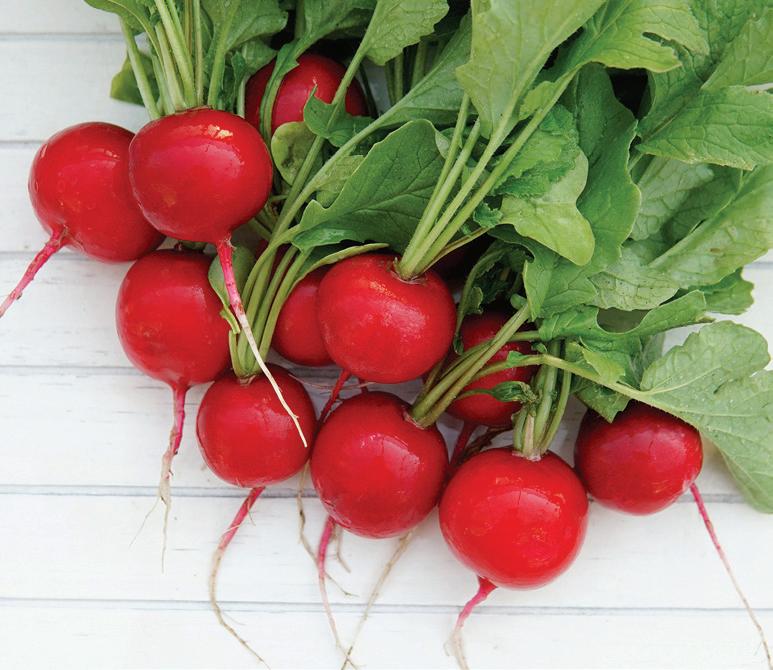
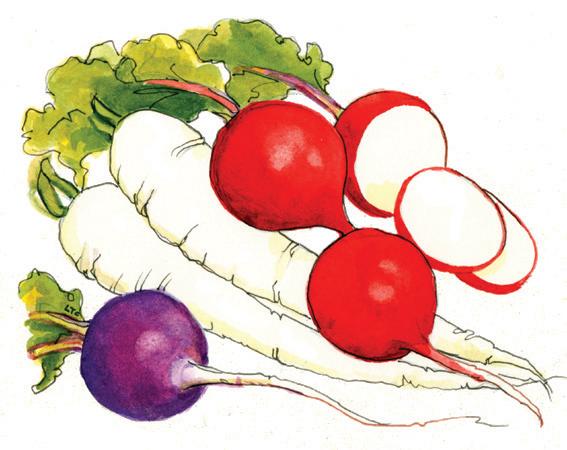

Kale
Peas -
Spinach
Swiss Chard
Turnips
Sow seeds during this time period. See cultural information in the catalog.
Transplant: These seedlings benefit from transplanting. Move at six weeks to a permanent well-limed location.
Covering or cloching these varieties will lengthen the harvest period.


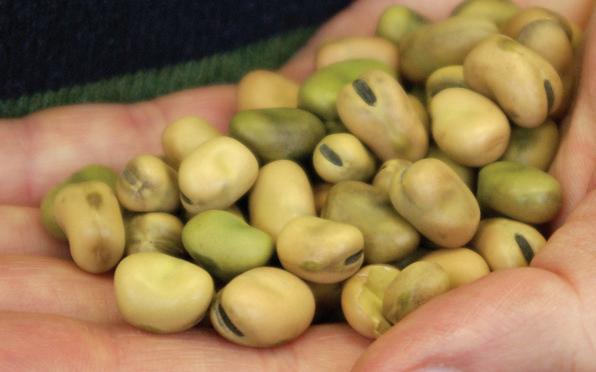


When sown in the fall and overwintered, fava beans mature in mid to late May.
(OP) 110 days; spring sown. Bursting with flavor, this Oregon-bred fava is sweet and succulent at the young, snap stage, and hearty, rich and satisfying when rehydrated from the shelling stage. Enormous pods typically reach about 9 inches at our trial grounds. Plants grow 3–4 feet tall and need to be supported. Breeding work by Ianto Evans of Aprovecho Research Center. Buff colored seeds; 22 per ounce.
BN078G
(OP) 80 days; spring sown. Broad Windsor is one of the tastiest of all dried beans and one of the largest! When eaten at the shelling stage, you’ll discover why their mild flavor makes them perfect partners with many spices and herbs. The sturdy bushes stand 4 feet tall, produce 4–5 inch pods, and are reliably hardy to 12°F. Buff colored seeds; 15 per ounce.
BN049C
(OP) 230 days; fall sown. Selected by Territorial in the mid 1980s from among hundreds in a USDA small seeded fava bean collection, Sweet Lorane was chosen especially for its hearty taste and cold tolerance. Typically grows to 30 inches. Allow plants to mature; once the pods begin to dry and crack, the beans are ready to harvest. Light brown/green-colored seeds; 45 per ounce.
BN051G SWEET
(OP) 53 days. Touchstone Gold is outstanding and uniformly round, with smooth, orange skin and a dazzling vivid golden interior. The deep green, blond-veined tops are equally appealing and perfectly matched to the beet’s smooth, exquisitely sweet flesh. It performed noticeably better than other golden beets in our trials.
Days to maturity are calculated from date of direct seeding.
Insects & Diseases
l Common insects: aphids
l Insect control: Pyrethrin
Harvest & Storage
l Shelling beans: pick when fully formed but still soft and green
l Dry beans: harvest mature beans before pods begin to shatter in the field

(OP) 55 days. These snow white roots have all the sweetness of ordinary beets without any bitterness or strong, beety flavor that some folks find too potent. At 2–3 inches in diameter, the roots are sized nicely for slicing and roasting, can be grated raw into salad, or juiced. Avalanche is here to convert even the pickiest eater into a beet enthusiast! HR: C.
BT148C AVALANCHE
BOHAN
(F1) 65 days. If your garden soil tends to be a bit waterlogged or low in fertility, Bohan is built for you! Robust plants produce sweet, 3 inch, globe-shaped roots. Its larger taproot efficiently grabs nutrition, so less-than-ideal soil conditions won’t hinder its development. Add the strong tops with green leaves and plum colored stems, and you’ve got a winning selection.
BT154C BOHAN

Soften the flow!
This micro-fine hose nozzle is the one we use in our greenhouses. It shatters the water flow into an ultra-soft, aerated shower that won’t displace seeds and soil or damage delicate plants. With 1,000 holes in the 2 inch head, the water flow is very gentle but with a volume high enough to irrigate quickly and efficiently. Threads onto standard ¾ inch hose fittings. Handle not included. Made in the USA with a limited lifetime guarantee. ZSU907 $26.95

Days to maturity are calculated from date of direct seeding.
Culture
l Beets perform best in fertile, evenly moist soil with a pH of 6.0‒7.0
l Uniform soil moisture is essential
l Sudden changes in temperature or soil moisture will increase zoning (ring formation in the root) and lead to premature bolting
l Transplanting not recommended as it can damage the tap root
Direct Sowing
l Sow June‒August
l At the bottom of the furrow band 1 cup of TSC's Complete fertilizer per 5‒10 row feet
l Cover seeds with sifted compost, loose soil, or vermiculite and water evenly
l Use row cover when soil temperatures are cool and to protect from pests
Insects & Diseases
l Common insects: leaf miners, flea beetles, and leaf hoppers
l Insect control: pick off affected leaves and check for eggs—if found, spray with Pyrethrin
l Common diseases: scab
l Disease prevention: neutral pH (7.0), 3–4 year crop rotation, keep adequately watered
l Common pests: mice, voles, and gophers
l Pest control: traps or underground screens
Harvest & Storage
l Beets should be harvested before temperatures drop to the 15–20°F range
l Harvest when roots reach desired size; small roots are tender, large roots may become woody if left in the ground too long
l Leaves can be used as pot greens or in salads
l If you are in a temperate climate, and your soil is well drained, your best location for root storage is in the garden under a protective layer of straw
l Trim tops and store at 36°F and 95% relative humidity
(OP/F1) 65 days. If you have never waited to harvest your beets until after the autumn frosts, you have never tasted the intense sweetness that beets can achieve. The first frosts signal the root to begin storing sugars for the winter. Late October and November harvest will get the roots at their sweetest. Our distinctive blend of Red Ace, Touchstone Gold, and White Albino lets you grow a range of colors that make eye-catching pickles and relish. Equally impressive when served fresh. BT138C
AZUMA (F1) 80–85 days. This outstanding variety produces flawless, smooth, dark red, globeshaped roots with little to no zoning. It’s a great all-around beet for baby to full size roots and greens. A very resilient variety in cold weather, Azuma’s leaves weathered cold snaps better than others in our winter trials. We’ve seen this one in trial gardens around the country, and it always comes out the winner!
BT157C AZUMA
(F1) 55 days. Smooth tasting for the refined palate, with deep, 2 ½ inch, round, red roots. Our trials have shown Bresko is very vigorous and resistant to leaf miners.
BT156C BRESKO
(OP) 45 days. Early Wonder Tall Top is our most popular beet. Adaptable to all seasons, it forms 3–4 inch, deep red globes with tall, glossy leaves that make choice, tasty greens. A good all-around beet that also pickles well. Exhibits vigorous growth in cool soils. Its staggered maturity allows an extended harvest from a single sowing.
BT130C EARLY WONDER TALL TOP 5 grams 1 oz 14 grams $3.85 $4.55 $5.95
BT130G EARLY WONDER

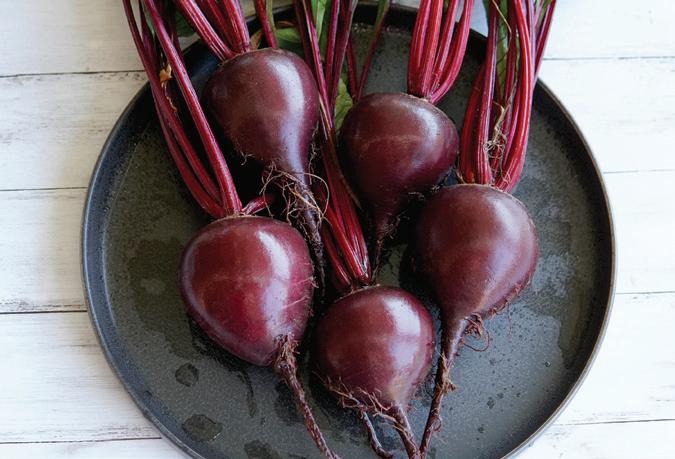

BOLDOR (OP) 51 days. These luminous golden beets are strides ahead of other yellow varieties. Featuring improved uniformity and vigor, Boldor offers a higher success rate in the garden with consistently attractive, round-shaped roots and yellow-stemmed, light green tops.
BT132C BOLDOR
BT132ST
(OP) 65 days. Lutz Green Leaf has unsurpassed storage capacity, earning the name Winterkeeper. These crimson roots have a scrumptious flavor that becomes sweeter with time. The glossy, fuchsia-veined foliage is a delightful, hearty eating green.
BT131C LUTZ GREEN LEAF
grams 1 oz 14 grams
$4.95 $6.95
(F1) 55 days. A wonderfully uniform beet with dark green glossy leaves and round 3–4 inch red roots. Merlin really stands out in the flavor department due to its high sugar content. Leaves make a tasty, nutritious addition to your fall salads. IR: C.
BT144C MERLIN
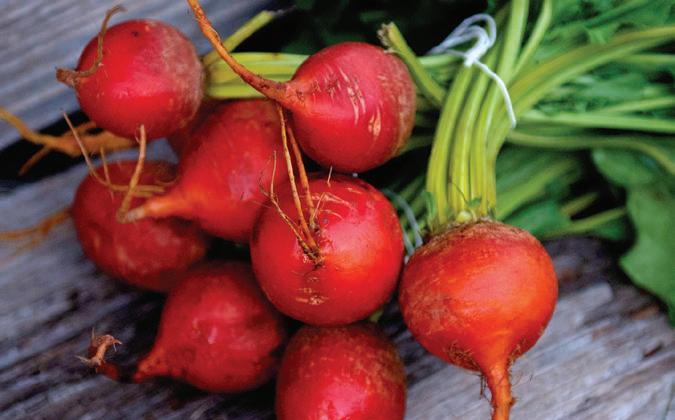
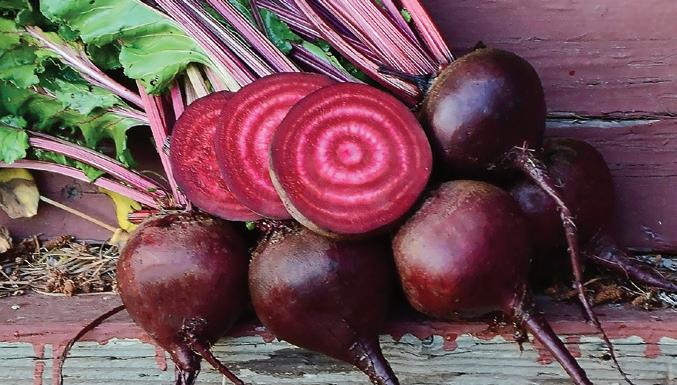




Rudolph

Bunching broccolis will produce long, tender and very sweet stems topped with small florets before winter.
ASPABROC
(F1) 56 days. This gourmet quality baby broccoli or broccolini produces tender, delicious, elongated stems topped with small, domed, 2 ½ inch florets. After the initial central stem is cut, the plants continue developing side shoots for repeated cuttings. Aspabroc has a nice, upright habit that lends itself to tight plantings.
BR114C ASPABROC
No winter garden would be complete without sprouting broccoli. Sow from mid-May‒June, transplant out by the end of July‒September. Sprouting broccolis are very hardy, surviving down to 10°F. Before flower buds open, cut the central head at a 45° angle. Side shoots will form from the axillary buds.
(F1) 80–115 days. Santee delivers fresh, bright purple florets and tender green stems just when fresh food from the garden is scarce. Set the plants in the late summer/early fall garden, and enjoy the delicious harvests continuously for several weeks. PP# 8,921,644. HR: F. IR: X.
BR094G SANTEE ORGANIC
(OP) 150 days. Now you can enjoy fresh broccoli for the holidays with this winter sprouting variety. Rudolph is an English favorite because it is ready for harvest long before later maturing sprouting broccoli. Can be planted in mid-July to produce an abundance of full-flavored spears by mid-December. If you haven’t grown sprouting broccoli before, this is the one to try!
BR101C RUDOLPH
Key to Broccoli Disease Resistance/Tolerance
HR indicates high resistance.
IR indicates intermediate resistance.
DM | Downy Mildew
F | Fusarium Wilt
X | Black Rot

Seed
Days to maturity are calculated from date of transplanting.
Culture
l Broccoli performs best in fertile, well-drained soil with a pH of 6.0‒7.0
l Broccoli is a cool-season crop that does not tolerate extreme heat; rough heads or leaves in the head are usually from heat stress
l Keep beds evenly moist and/or use shade cloth to maintain quality during heat waves
l Excess nitrogen or a boron deficiency can cause hollow stem
l In colder climates covering with Reemay or Frost Blanket will protect plants from frost damage
Direct Sowing
l Not recommended for fall plantings
Transplanting
l Start May–July for transplanting June‒August
l Side dress with ½ cup of TSC's Complete fertilizer at transplant
Insects & Diseases
l See Brassica Insect Information on page 9
l Disease prevention: 5–7 year crop rotation
Harvest & Storage
l Harvest when heads are tight and dense
l Cut side-shoots regularly to encourage production
l Store at 36°F and 100% relative humidity
PURPLE SPROUTING
(OP) 220 days. Maturing in March/April when fall planted, these tall 24–36 inch plants are covered with smallish, very sweet tasting purple crowns that turn green when cooked. Hardy to below 10°F, Purple Sprouting is a delicious mainstay of the family spring food supply.
BR099C PURPLE SPROUTING
Brassicarapa,RuvoGroup
SORRENTO
(OP) 40 days. This is the quickest broccoli raab to mature. Sorrento has some of the largest, most uniform dark green florets in the early category, averaging 3–4 inches across. It grows upright to 30 inches. A choice pick for the early gardener and specialty market grower. Harvest the tender leaves, stems, and unopened flower buds; they have a hearty yet mild broccoli flavor.
Aspabroc Santee
NEW PURPLE MAGIC (F1) 90–100 days. Touted as the world's first purple-stemmed broccoli, this AAS award winner is magical, indeed! Plants produce sizeable dome-shaped heads that can weigh about 1 pound each. This cool-season crop grows upright to 30 inches and up to 20 inches wide with tight, uniform crowns and bright beads. An excellent easy-to-grow addition to any garden that is known to be sweeter and more tender than traditional green broccoli.
BR083C PURPLE MAGIC
⅛
$4.45
Includes: Broccoli, Brussels Sprouts, Cabbage, Cauliflower, Collards, Kale, Kohlrabi, Mustard, Pac Choi, Radishes, Rutabagas, and Turnips.
Aphids: Control aphids with ladybugs or a hard spray of water or Pyrethrin. Also, select varieties that mature later in the season when aphid populations decline.
Cabbage worms, loopers, and root maggots: The first sign of cabbage worms will be offwhite butterflies fluttering near the plants. They lay their yellowish-colored eggs on the undersides of leaves, which hatch into caterpillars that can cause severe root and head damage. To control light infestations, spray plants with Bacillusthuringiensis (B.t.). For heavy infestations, bait cabbage worms by mixing wheat bran into a B.t. solution. Add 1 tablespoon of molasses. Broadcast the bran mixture around the base of plants. Reapply as necessary. Using Reemay or Summer Insect Barrier can also provide control.
Flea beetles: Flea beetles chew tiny pinholes in leaves. Early control is essential to minimize the damage. Spray infected plants with Pyrethrin. Using floating row covers such as Summer Insect Barrier can also provide control. Silver mulch is a good deterrent.
Symphylans: In some areas of the US, symphylans (also known as garden centipede) can severely impede the plant growth of many crops. Only ¼ inch long, white, and very active, they eat the root hairs of developing plants. Using larger transplants helps reduce damage. Contact your local county extension agent if you suspect you have a problem.
Sorrento
Jacaranda
Aspabroc
Gypsy
Belstar
Santee
Purple
Rudolph
BELSTAR
(F1) 66–75 days. Flawlessly uniform, 6 inch heads are beautiful blue-green, densely packed florets. The tightly domed heads are held high off the plants for easy harvest. This variety has excellent field holding capacity and is ideal for both warm and cold weather planting. It performed so well in our trials that it would have been a sin not to offer it. Good disease resistance.
BR088C BELSTAR ½ gram
(F1) 50 days. Unparalleled in crown broccoli, Jacaranda produces full-size heads that sport a unique purple color that’s typically reserved for sprouting types. This unusual variety is a cross of broccoli and cauliflower, bringing out the best of both crops. Easy-to-grow, compact plants produce very uniform crops with blue-green leaves that set off the vibrant purple-tinged, 5 inch heads that are tender and delicious.
BR086C JACARANDA ⅛
(F1) 65 days. Gypsy yields smooth, well-domed, 8 inch heads with small to medium beads and excellent flavor. Reliable even in warmer temperatures, this versatile variety produces side shoots throughout the season once the main stem is cut. With a tall main stem, clean upright stature and robust root system, Gypsy is strides ahead of other cultivars with strong, uniform plants even in soils with lower fertility. IR: DM.
BR113C GYPSY
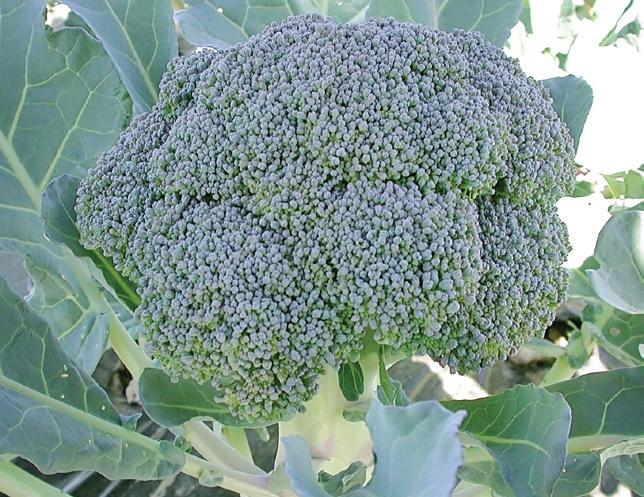



Start Indoors: Transplant: Harvest:
Note: Our recommendations are for gardening in the Maritime Northwest. Dates may vary in areas with harsher winters, or in warmer regions.
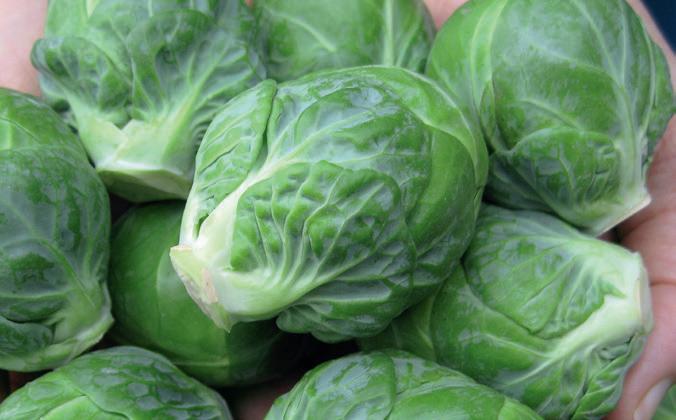
MARTE
(F1) 130 days. A top-quality sprout for early fall harvest. These blue-green, 1–1 ½ inch buttons swell on well-stacked, 30 inch stalks even in late summer heat. Robust plants are well rooted and resist lodging. HR: YR.
BS129C MARTE
¼

(F1) 125 days. In our trials, Franklin has been the earliest maturing of all the Brussels sprouts. It has the added bonus of high quality, uniform, firm sprouts. The plants are quite tall and have less woody stalks, so whole stem harvests are possible.
BS117C FRANKLIN
¼

(F1) 145 days. Truly a darling in the Brussels sprout patch, Redarling reliably produces strong, uniform plants with 24 inch towers of purple sprouts. Each elongated button is firm and beautiful, stacking on sturdy stems for whole-stalk harvests. In our winter trials, we began harvesting in November and continued well into March. These phenomenal plants stood in prime condition in the open field for 4 months! For fans of purple sprouts, plant Rubine and Redarling for a continuous harvest into early spring.
BS128C REDARLING
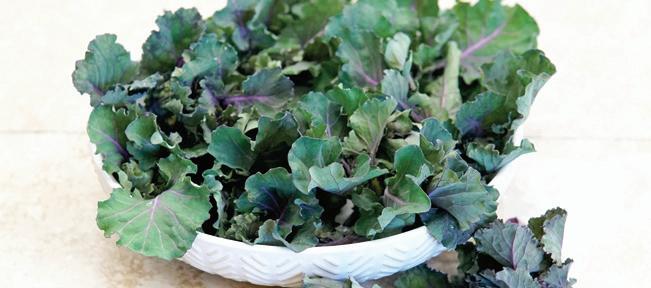
(F1) These little beauties are bite-sized, loose heads of frilly kale lined up on Brussels sprouttype stalks. The mini kale florets are a beautiful green and purple bicolor with a mild, nutty flavor. The 3 varieties we’re offering are specifically bred to mature at different times. Plant all 3 and you’ll have a seamless harvest from autumn through late winter.
AUTUMN STAR 110 days. Autumn Star is the earliest maturing variety in our Kalettes® series, kicking off the harvest season.
MISTLETOE 125 days. Mistletoe is the tallest of our Kalettes®, offering heavy crops just in time for feasts at the end of the year.
SNOWDROP 140 days. Snowdrop is our latest maturing variety. Ready for harvest in January–February. BS127C SNOWDROP

RUBINE
(OP) 155 days. An heirloom variety not often seen in the garden. Rubine offers up a bountiful harvest of gorgeous 1–1 ½ inch purple-red sprouts that are full of wonderfully rich old-time flavor. A striking addition to any vegetable patch and a gourmet specialty for your table. Grows to 24 inches and performs best when planted early.
BS115C RUBINE
NAUTIC
(F1) 150 days. Nautic’s 1 inch, smooth, tightly wrapped buttons are tender and sweet. Extra space between buds makes harvesting easy and also provides improved air circulation for fewer incidences of disease. Resistant to powdery mildew, white rust and ring spot.
BS121G NAUTIC ORGANIC
Brassicaoleracea,
Culture
l Brussels sprouts perform best in cool weather and in fertile, well-drained soils
l Proper timing is needed in order to grow large mature plants, which then develop buds during cooler fall weather
l Provide plants consistent, even water (1 inch per week)
l Brussels Sprouts benefit from high fertility early in development and less as they mature (use a slow release fertilizer at transplant and later only if symptoms of deficiency occur)
Direct Sowing
l Not recommended
Transplanting
l Start May–July for transplanting June‒August
l At transplant, work in ½ cup of TSC's Complete fertilizer around the base of each plant
Insects & Diseases
l See Brassica Insect Information on page 9
l Disease prevention: 5–7 year crop rotation
Harvest & Storage
l Brussels sprouts are best after a couple of frosts
l Mature buds should be 1‒1 ½ inch, firm and well formed
l Begin picking sprouts from the bottom; upper sprouts will continue to mature as lower ones are harvested
l Alternatively, you can mature the entire stalk by cutting off the top at the growing point when sprouts are present throughout and bottom sprouts are ½ inch in diameter; sprouts will mature within a couple weeks
l Store at 36°F and 100% relative humidity
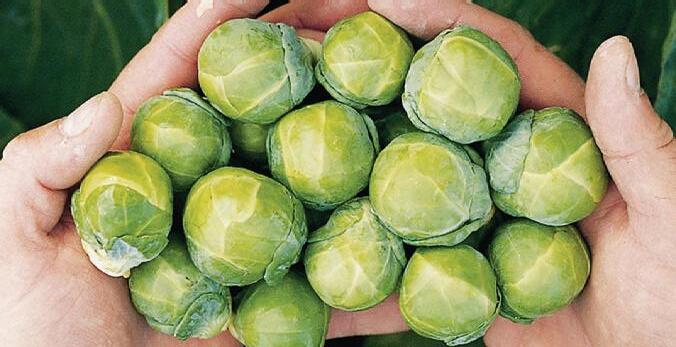
Start Indoors: Transplant: Harvest:
Note: Our recommendations are for gardening in the Maritime Northwest. Dates may vary in areas with harsher winters, or in warmer regions.
Brassicaoleracea, Capitata Group Seed
Days to maturity are calculated from date of transplanting.
Culture
l Sudden temperature changes or high applications of fertilizer may result in poor head shape and reduced yields
l Consistent and even watering is necessary
Direct Sowing
l Not recommended for fall plantings
Transplanting
l Start May–July for transplanting June‒August
l Work in ¼–½ cup of TSC's Complete fertilizer around each plant
Insects & Diseases
l See Brassica Insect Information on page 9
l Disease prevention: 5–7 year crop rotation
Harvest & Storage
l Early types: mature fast and burst quickly, so they must be harvested promptly
l Later types: hold in the field longer
l When cutting heads from stems, include 2 or 3 wrapper leaves to protect against bruising
l Over-mature heads can split, especially if they are exposed to moisture fluctuations
l Late storage types will keep for up to 6 months when kept at 36°F and at 100% relative humidity; early types will store 1–2 months
7–7–2 An all-natural fish fertilizer that provides all the nutrients required by plants in the proper ratio while building soil humus. See page 53 for full description and more size options.

ZFE235* 5 lbs $19.95 * SHIPPING WEIGHT 6 POUNDS
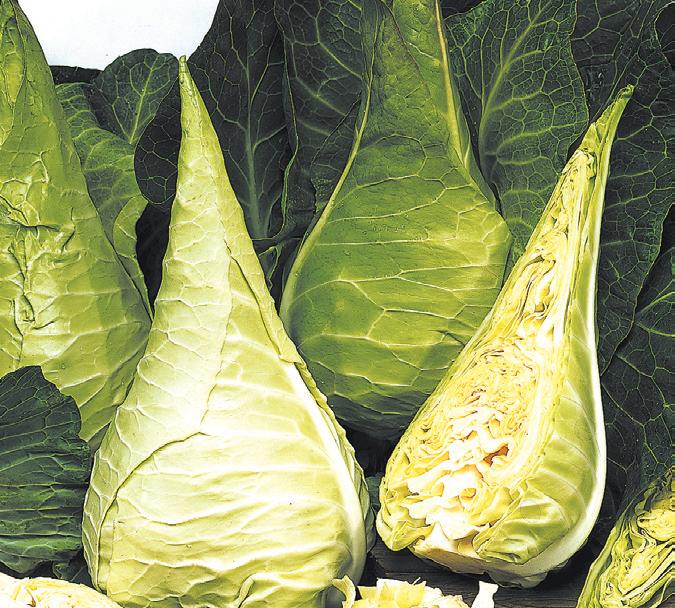
FILDERKRAUT
(OP) 85 days; 160 days overwintered. This OldWorld favorite produces large, teardrop-shaped heads on stately plants held high off the ground. The light green heads reach 14 inches tall and over 5 inches wide for plenty of sweet fresh cabbage that's just right for the best kraut. We've found the easiest way to grate these jumbo cabbages is by holding the blunt, stem end and shredding from the pointed tip down.
CB010G FILDERKRAUT ORGANIC

(F1) 180–220 days. Famous in England for one of the longest harvest periods of any winter cabbage. This slightly savoyed green cabbage produces 2–3 pound heads and has the ability to withstand temperatures down to 10°F for short periods. Magnificent for outdoor culture here in the Northwest and worth a try for cold frame production, especially in the far north! When sown in June and July, Tundra can be harvested from December right through to April.
CB157C TUNDRA
Katarina
Tiara
Alcosa
Kalibos
Red Globe
Ruby Ball Improved
Greenboy
Deadon
Filderkraut
Tundra

(F1) 80–85 days. Our new garden buddy in the cabbage patch! Greenboy produces pictureperfect, blue-green heads with white interiors that are dense and solid. Its adaptability and disease resistance means great garden performance and yield in warm and cold regions. YR.
CB159C GREENBOY

(F1) 105 days. Hit all the high notes with this gorgeous January King type cabbage. Deadon produces big, flattened heads wrapped in semi-savoyed, slate blue leaves. Inside, you’ll find a firm, light green interior that’s dense and deliciously sweet. Cool weather brings out a deeper magenta blush on the magnificent, 4–6 pound heads. HR: YR.
CB149G DEADON ORGANIC
Start Indoors: Transplant: Harvest:
Note: Our recommendations are for gardening in the Maritime Northwest. Dates may vary in areas with harsher winters, or in warmer regions.
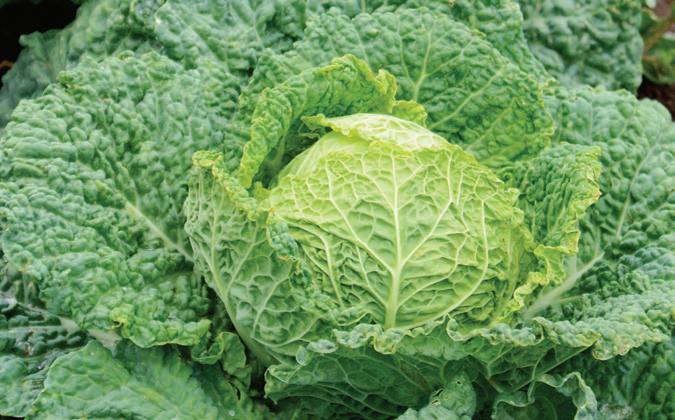
ALCOSA
(F1) 65 days. A fast-to-mature, manageably sized savoy. Measuring approximately 5–6 inches and 2–4 pounds each, these attractive heads are well packed with sweet, heavily puckered, green leaves. Small-framed plants allow for dense plantings in both spring and fall. HR: YR.
CB179C ALCOSA

(F1) 58 days. A mighty mini cabbage! Tiara produces a very high quality, dense head that almost dwarfs the very compact plant. The 6 inch heads weigh in at 3 pounds each with a short core and very solid interior. The flavor is mild, not peppery, with a buttery, tender, juicy crunch. Its long shelf life is an added bonus. A delicious selection for dense plantings or small gardens.
CB177C TIARA
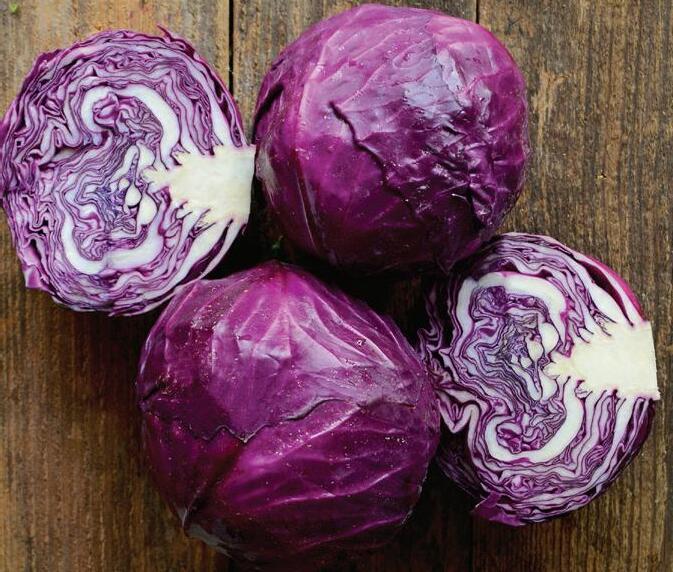
(F1) 78 days. Over the years, we have tested hundreds of cabbage varieties at our London Springs research farm, and Ruby Ball Improved remains a great all-season red cabbage. Firm, 6–8 inch round heads have a mild, sweet flavor and weigh a manageable 3–4 pounds. We have seen this variety stand unfazed in the garden for 6 weeks without splitting, which allows the gardener extended fresh harvests. Ruby Ball Improved stores moderately well after harvest.
CB152C RUBY
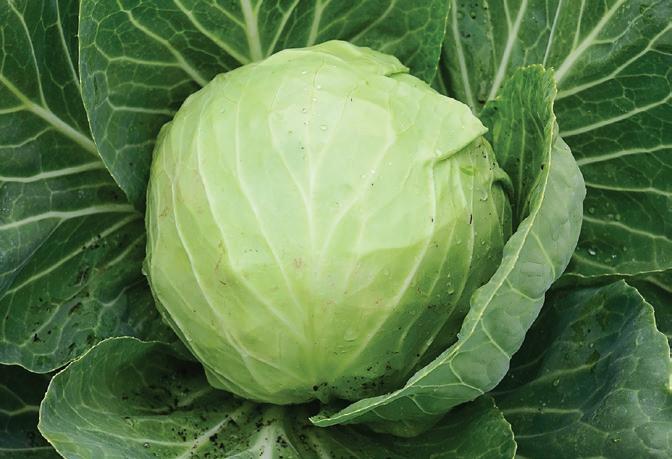

(F1) 76 days. An especially exciting twist on red cabbage, Red Globe’s superior quality heads boast a remarkably vibrant, magenta color—a glossy and very attractive distinction from more common, dull, dark purple cabbages. The uniform heads measure about 8 inches or approximately 3 pounds each with small cores and a nicely sweet/spicy flavor. Sturdy, compact plants surround the heads with contrasting green leaves.
CB150C

KALIBOS
(OP) 74 days. Like a giant tea rose blooming in your cool-weather garden, these purple/red cabbages form gorgeous pointed heads swirling out of their blue/green outer leaves. As tasty as it is beautiful, this old Eastern European variety has a high sugar content for shredding and adding to fresh salads or making spectacular pink slaw or kraut. In the field, the 2–3 pound heads shed winter’s weather thanks to their shape, and after harvest they store well, too.
CB175C KALIBOS
KATARINA

(F1) 45 days. Manageably sized, fast to mature, and absolutely delicious. This AAS awardwinning cabbage produces impeccably uniform, light green, 4 inch globes on compact plants. An excellent choice for containers or cramped plantings and year-round production of the sweetest cabbage.
CB164C KATARINA
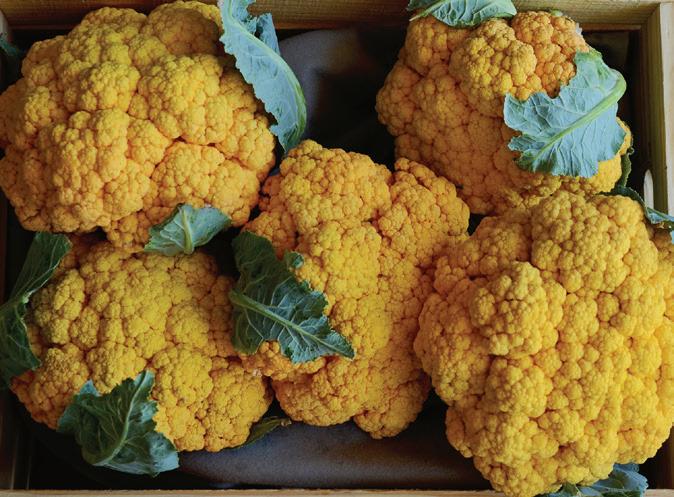

(F1) 70–80 days. A standout in the cauliflower department, this remarkable, pastel orange variety is undeniably unique. Dense heads are light orange inside and have a smooth, juicy, creamy flavor with no bitterness or spice. Flame Star is a great choice for spring or fall planting, as it shows improved heading ability and excellent heat tolerance.
(OP) 90 days. Heirloom quality, exceptional flavor, super nutrition, insect resistance and astounding color all in one cauliflower. It’s no wonder Purple of Sicily has been handed down from generation to generation. Big, 2–3 pound heads are brilliant purple in the garden or on the fresh veggie platter, changing to a striking green when cooked. The curds are loaded with minerals and have a sweet, delicious, refined flavor. Its natural insect resistance means healthier plants and better success in the garden.
Brassicaoleracea, Botrytis Group
(F1) 70–75 days. Electric orange, this vibrant cauliflower is even brighter than its namesake. Clementine’s 6 inch heads shine like spotlights in the garden, and they produce earlier in the season than Flame Star.
CF183C CLEMENTINE
25 seeds 250 seeds 100 seeds $6.35 $19.20 $38.75
Days to maturity are calculated from date of transplanting.
Culture
l Refer to broccoli culture on page 8
l Blanching: to ensure completely white heads, tie the inner leaves around the head when it starts to form, or break over some inside leaves to shade the head
Direct Sowing
l Not recommended for fall plantings
Transplanting
l Refer to broccoli culture on page 8
Insects & Diseases
l See Brassica Insect Information on page 9
l Disease prevention: 5–7 year crop rotation
Harvest & Storage
l Harvest when heads are tight and dense
l Overmature florets begin to separate and appear ricey
l Store at 36°F and 95% relative humidity
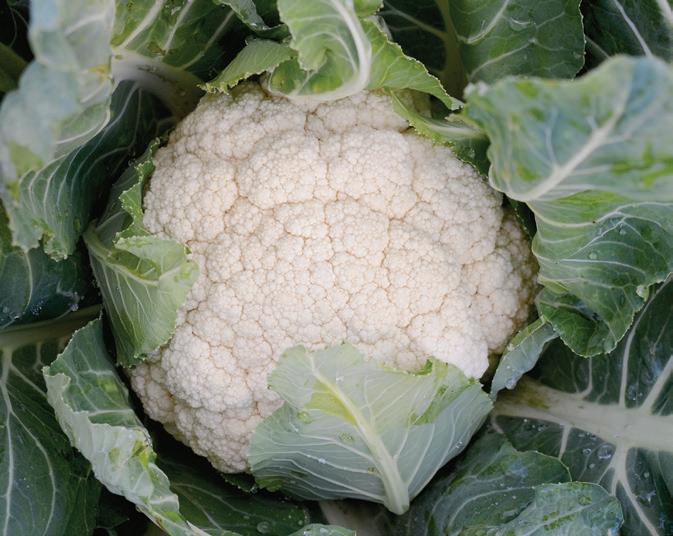
(F1) 80 days. The Force is definitely strong with this superior variety. Skywalker produces flawlessly uniform, hefty heads of beautiful, tight, white curds. Strong wrapper leaves keep the crop in prime condition in the field without compromising the color and shape of the heads. 25
Planting & Harvest Chart
Twister
Clementine
Flame
DePurple
Skywalker
Veronica
Purple of Sicily
(F1) 62 days. If you’re on the hunt for a reliable, picture-perfect, white cauliflower, Twister is what you’re after. Gorgeous, medium to large, snow-white heads with tight curds form with exceptionally well-developed wrapper leaves. These leaves spiral around, enclosing the head in a secure teardrop-shaped swirl that protects the cauliflower from sun and weather for pristine harvests. Twister is well adapted to a wide range of climates across the country.
CF194C TWISTER
⅛ gram 500 seeds 250 seeds $5.15 $10.95 $20.75
(F1) 79 days. Cauliflower’s versatility in cuisine and diet-friendly usefulness is catapulting the crop into astonishing prominence. DePurple is attracting unequalled attention with its alluring lilac florets topping creamy stems. Maintaining its color in cooking, DePurple makes a presentational impact on the table. Big, robust plants have a squat, slightly open habit and produce 7 inch, dense, domed heads. This variety is easier to grow than many other purple cauliflowers.
CF177C DEPURPLE
25 seeds
(F1) 85 days. A fascinating yet attractive and nutritious addition to your cauliflower crop, Veronica is just as beautiful as it is delicious. Seven-inch heads are formed from clusters of swirling chartreuse spires. Its taste is a somewhat nuttier cross between broccoli and cauliflower. A crunchy, sweet addition to a raw vegetable platter or cook as you would any cauliflower for a tasty and irresistible treat.




Note: Our recommendations are for gardening in the Maritime Northwest. Dates may vary in areas with harsher winters, or in warmer regions.



NEW KURODA IMPROVED (OP) 75 days. If you love the sweet snap of a carrot but struggle to grow straight, long-rooted crops, we’ve got just what you need. We’re pleased to offer this easy-to-grow variety that reliably produces strong, stout roots even in shallow, rocky or heavy soil. You’ll love the tasty, bright orange roots that reach 5–7 inches long and 3 inches wide. A prime choice for container gardeners too!
CR256C KURODA IMPROVED
1 gram 1 oz 5 grams
$3.95 $6.05 $9.95
(F1) 72 days. Chantenay type carrots are a favorite for specialty gourmet grocers, and Coventry is an outstanding variety in this class. It produces exceptionally uniform crops of broadshouldered, stout roots with erect, short, strong tops. The 4‒4 ½ inch, wedge-shaped carrots are an attractive light orange and have a very tasty, delicately sweet flavor. Coventry is our choice for baby carrots, which can be pulled up to three weeks earlier than the stated days to maturity. IR: Ad, Ar, C, P.
(F1) 75 days. A delightful, bolt-resistant Nantes for the cool weather garden. Musico produces uniform, smooth, slightly tapered, orange roots with a crispy, juicy mild flavor. The 7‒8 inch long, 1‒1 ¼ inch wide carrots exhibit excellent field holding, so your continual fresh harvest extends well into the winter. Tall, 15 inch tops are strong and allow for easy harvest and bunching. HR: AS.

NAPOLI
(F1) 55 days. Napoli is a first-rate Nantes type carrot that is among the earliest to mature. The 7‒8 inch, bright orange roots have a fine texture and a mild, juicy crunch. Plants have tall, strong tops for easy harvest and produce uniform, smooth, cylindrical carrots with narrow shoulders. MA. IR: Ad, Ar, C, P.
CR294C NAPOLI
CR294G

CR294P NAPOLI PELLETED
CR294ST
SUGARSNAX 54
(F1) 68 days. Super tasty and nutritious, Sugarsnax 54 is sweet and tender for superior eating quality. Rich, dark orange color reveals the extra high beta-carotene content. Slender roots grow 9 inches long with strong tops. Imperator type. AS, C, P.
CR284C SUGARSNAX 54 1 gram 10,000 seeds 5,000 seeds
$4.95 $9.45 $15.25
250
Daucus carota var. sativus
Seed Spacing Days to Emergence
Soil Temp. for Germ. Min. Germ. Row Spacing Seed Depth Seed Life Seeds per gram Fertilizer
Days to maturity are calculated from date of direct seeding.
Culture
l Carrots perform best in deeply worked, wellcomposted, loose soil with a pH of 6.0‒7.0
l When the soil is workable, spade or till it to a fine texture 12–16 inches deep — cloddy, heavy soil will not make straight roots
l Heavy soils can cause forked roots, use Chantenay, Kuroda, Paris Market, or Nantes types in heavy soils
l Avoid split roots by maintaining even watering
l When plants have 7‒10 leaves, hill 1‒2 inches of soil around crowns to prevent green shoulders
Direct Sowing
l Sow mid-June‒July
l Dig a shallow furrow and lightly cover seed with soil, vermiculite or sifted compost
l Water evenly and regularly to prevent soil crusting
l Cover beds when soil temperatures are cool and to help prevent soil crusting
l Thin when plants are 4 inches tall
Insects & Diseases
l Common insects: carrot fly
l Insect control: row covers at planting
l Common diseases: various blights
l Disease prevention: keep soil evenly moist, 3–4 year crop rotation
Harvest & Storage
l Flavor is enhanced after a couple of frosts
l Roots can be dug any time at maturity through winter as needed
l In harsh climates, mulch with straw for protection
l Best harvested when ½‒¾ inches in diameter when carrots are sweet and tender
l Cut tops prior to storage
l Store at 36°F and 95% relative humidity

Seed that has been coated with a claybased material to form a larger, round shape. This makes planting by hand or mechanical seeder easier and allows for more controlled sowing of small seeds such as carrots or lettuce. All pelleted seed has a National Organic Program (NOP) approved coating. For best results, store pelleted seed in an air-tight container and use within one season.
NORTHERN LIGHTS CARROT BLEND
(F1) A striking array of colorful carrots for your autumn and holiday meals. Includes purple, yellow, white and orange varieties.
CR273C NORTHERN LIGHTS CARROT BLEND
5 grams $10.95
SPEEDO
(F1) 65 days. A solid and dependable choice for uniformity and overall quality, Speedo has a delicious flavor that’s mild and lightly floral. A Nantes type, it produces smooth, very shapely roots, 7–8 inches long. The blunt-tipped carrots are quick to size up even in poor soils. Boltresistant plants have clean, erect foliage with strong attachments for easy pulling. IR: AB, C.
CR299C SPEEDO
1 gram 10,000 seeds 5,000 seeds
$4.75 $10.35 $16.95
CR299P SPEEDO PELLETED 5,000 seeds $17.55
250 seeds 1000 seeds
$6.25 $10.95

(F1) 80 days. This exciting selection fills a harvest slot all its own. We spent years looking for an overwintering carrot that could be planted in late September/early October and harvested May through June. Merida is a moderately vigorous Nantes type that possesses extraordinarily good resistance to bolting. It produces sweet rich orange carrots 6–7 inches long and 1–1 ½ inches in diameter. Well suited to spring and summer plantings, too! A carrot juicer’s dream.
CR267P MERIDA PELLETED 5,000 seeds $19.25
250 seeds 1000 seeds
$6.45 $11.75
CR267ST MERIDA SEED TAPE
1 tape 3 tapes
$6.95 $15.95
Key to Carrot Disease Resistance/Tolerance
HR indicates high resistance.
IR indicates intermediate resistance.
AB | Early (Alternaria) Blight
Ad | Alternaria dauci - "Alternaria Leaf Blight"
Ar | Alternaria radicina - "Black Rot"
AS | Alternaria Stem Canker
C | Cercospora
MA | Liquorice Rot
P | Pythium Root Rot

GIANTS OF COLMAR
(OP) 75 days. One of our favorite go-to carrots for the winter garden, but it’s also a great selection for multiple seasons. Giants of Colmar has conical roots that grow 11–12 inches long and resist splitting while waiting to be dug. Hefty, broad roots are sweet and delicious. There is nothing quite as satisfying as the sweet flavor of Giants of Colmar eaten fresh from the garden in the dead of winter.
CR264C GIANTS OF COLMAR 1 gram
CR264G GIANTS OF COLMAR ORGANIC
CR264P GIANTS OF COLMAR PELLETED

(F1) 85 days. Our trial evaluators unanimously ranked Eskimo top in flavor, texture and appearance. The 5 ½ inch long, 1 ¼ inch wide, cylindrical, deep orange roots have a very clean, carroty taste with absolutely no bitterness. Eskimo can withstand frigid temperatures and still retain its delicious taste and integrity. During the fall and winter months the roots will keep in the ground without splitting. Nantes type. AB.
CR274C ESKIMO
1
(F1) 75 days. A new and improved red Nantes type! These handsome carrots have a distinct, deep coral-red tone and pinkish interior. They produce early and very uniform crops of wellfilled, 7–8 inch long, cylindrical roots. Redsun resists bolting better than other red types we’ve grown, but be sure to plant in late summer for fall harvest for best performance and flavor.
CR258C REDSUN
1 gram 10,000 seeds 5,000 seeds $4.95 $15.35 $23.50
Check out our seed tape! Perfectly straight rows of precisely spaced crops are at your fingertips. Visit TerritorialSeed.com for more options.

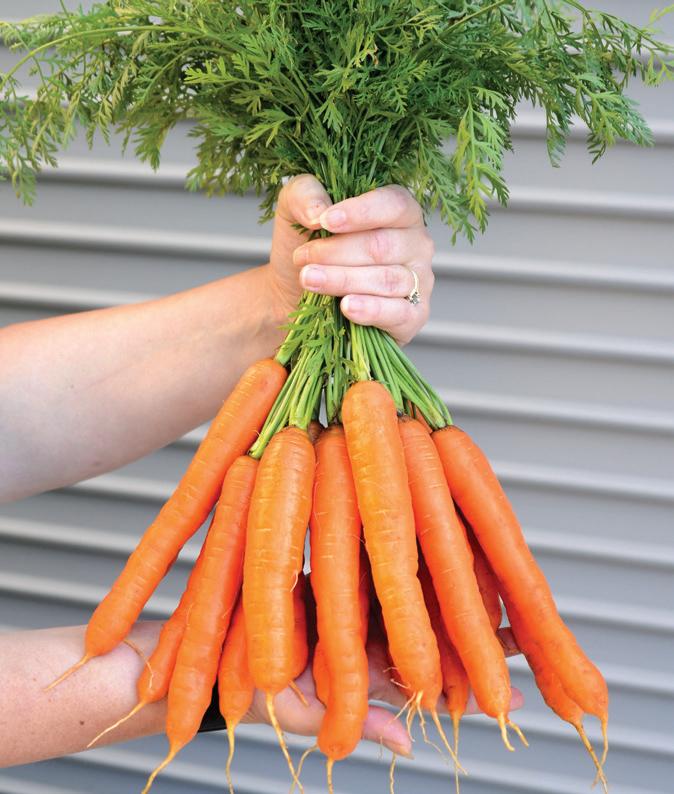


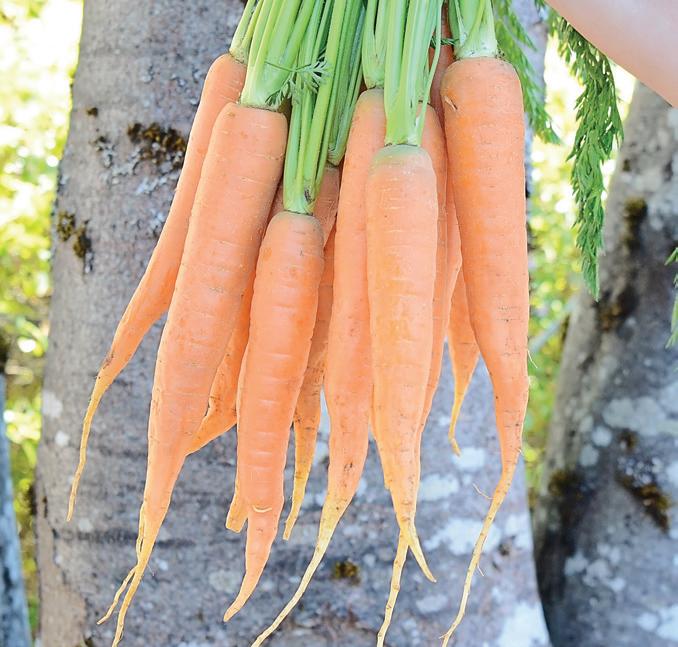 Merida
Giants of Colmar
Northern Lights Blend
Eskimo
Merida
Giants of Colmar
Northern Lights Blend
Eskimo

(F1) 74 days. Collards are a gift from winter’s garden and Top Chop is a leader in the field. With big, broad leaves from bolt-resistant, clean, upright plants, you’ll be picking greens over a wide-open harvest window. Top Chop re-grows fast and produces lots of uniform leaves for fresh salads, carb-free wraps, soups and all your dishes calling for hearty greens.
1

(F1) 55 days. Flash is a dark-green-leaved collard that has earned a reputation for its vigor, high uniformity, and impressive yields. The 16–23 inch, smooth broad-leaved plants are very slow to bolt, offering longer, more dependable harvests. High in iron, calcium, potassium, phosphorus, and vitamins A, B, C, and E. Rapid regrowth after harvest. 1


(F1) 42 days. If there was ever a kohlrabi variety to take this unusual vegetable out of relative obscurity, it’s Konan. Its pristine, icy-green globes and sweet, crunchy, alabaster flesh will make you stand up and take notice. Sturdy, uniform, healthy plants produce smooth-skinned bulbs that can reach up to 6 inches across for lots of delectable, cool-season dishes.

BEAS
(F1) 42 days. The first of its kind, and a beautiful complement to purple and green varieties, Beas is perfectly pearly white inside and out with a delicately sweet flavor. The flawlessly uniform crops produce bulbs 2–3 inches wide with light green stems and foliage. A must-grow variety for kohlrabi fans.
BEAS

(OP) 70 days. Other giant kohlrabi types tested by Territorial over the years have proven to be woody and throw a high percentage of offtypes. Superschmelz is the only giant variety we’ve tested that grows uniformly large and remains very sweet and tender to the biggest sizes. It produces juicy 8–10 inch bulbs, and the large root system lends itself to dry gardening. Best quality when summer sown for fall harvest.
KH348C SUPERSCHMELZ


(OP) In our winter trials, when most other kohlrabi had split open and succumbed to the weather, this powerhouse duo kept looking and tasting wonderful. Both Delicacy White and Purple can be harvested when the bulbs reach tennis ball size, but when left to grow slightly larger, they still remain tender. Crisp, delectable flesh is great grated and incorporated into your favorite slaw.
DELICACY WHITE - 60 days. Light, minty green skin.
DELICACY PURPLE - 65 days. Vibrant purple skin.
KH351C DELICACY WHITE
Culture
l See
Brassicaoleracea, Gongylodes Group
Seed
Days to maturity are calculated from date of transplant.
Culture
l Kohlrabi performs best in the cool season and can tolerate a wide range of soil types
l For extended harvests, plant every 2–3 weeks
l Mature plants are frost tolerant and cool weather brings out sweet flavor
l May and June sowings should be avoided as they result in kohlrabi maturing in the hottest weather, producing dry, woody bulbs
l Sow from mid-July to mid-August
l Thin when plants have 2 sets of true leaves
l Start May–July for transplanting June‒August
l Transplant outside when there are 6–8 true leaves and nighttime temperatures remain above 40°F
Insects & Diseases
l See Brassica Insect Information on page 9
l Disease prevention: 5–7 year crop rotation
Harvest & Storage
l Fall-grown kohlrabi is less likely to get woody as it gets larger
l Store at 36°F and 95% relative humidity
Harvest Knife & Corer
Cut even the thickest-stemmed cauliflower or kohlrabi and easily separate leaves and branches from the central core of lettuce, cauliflower and more with just a quick stab and twist. See page 56 for full description.
Allium sativum subsp. ophioscorodon
Clove Depth 6" 2–3"
Culture
Clove Spacing
l Garlic thrives in rich, well-drained soil with a pH between 6.0–7.0
l Work in 1 inch layer of compost, ½ cup of bone meal, ½ cup TSC's Complete fertilizer per 5 row feet
l When spring growth begins: water to keep the soil slightly moist, and fertilize with Age Old Grow or TSC's Complete fertilizer
l As harvest approaches: water less to avoid molding or staining
l Hardnecks: cut off any flowering stems (scapes) at the top leaf to redirect energy to the bulb; scapes can be used like green onions
Direct Sowing
l In Northern regions, garlic is best planted by the end of October, or 6–8 weeks before the ground freezes
l Southern regions may plant as late as March
l Separate the cloves of garlic just prior to planting, keeping as much skin on as possible
l Plant cloves pointed end up
l Mulch with clean straw or leaves to 4 inches
Pests & Diseases
l Common pests: onion thrips, stem & bulb nematodes
l Pest control: Pyrethrin, 5–7 year crop rotation
l Common diseases: Gray mold/Botrytis, rust
l Disease prevention: 5–7 year crop rotation, avoid soggy soil
Harvest & Storage
l Harvest when the top 4‒5 leaves are slightly green, and lower leaves are dry
l Begin checking for mature bulbs in late June
l Each green leaf represents one layer of covering over the bulb in the ground
l Tie the plants in small bundles and dry in a cool, shaded, well-ventilated location for about 3‒4 weeks
l After curing is done, cut foliage and roots from bulbs and store in mesh bags
l Softnecks: you can keep leaves on and braid the whole plant
DeWit Dibber
Yourbestfriendwhenplanting. Whether you’re sowing seeds, planting garlic, or setting flower bulbs in the ground, this wooden dibber makes the work quick and precise. Constructed of solid ash with a sharp, brass tip, the dibber opens holes in the soil with a quick, press-andspin motion. The tapered body makes proportionally wider holes with deeper depths, and engraved inch markings assure accurate planting. Overall length: 12 inches. ZTO945 $39.95
Cloves per bulb: Approximately 5–10 Cloves per pound: Approximately 40–65
Cloves grow in a single circle around a central woody stem. These varieties also produce, or attempt to produce, a flower-like stalk. What makes these garlics stand out is the range and quality of flavors they exhibit. Hardneck garlics typically have a shorter storage life than softnecks.
Mid-season, Rocambole type. Ukrainian Red boasts a flavor as rich as its history. Big, beautiful heads are wrapped in white skins and open to reveal 7–10 plump cloves with very easy-to-peel, tan skins. We love the robust, well-rounded flavor that’s spicy when raw and mellow after cooking.
XG335C UKRANIAN RED
8 oz 5 lbs 1 lb $20.95 $31.95 $114.95
Late-season, Marbled Purple Stripe type. An eye-opening garlic with a strong, spicy flavor that mellows to a tasty nuttiness when roasted or baked. Big, flattened heads sport a purple-streaked wrapper and 5–7 stout cloves protected by easy-peel, tan skins striped in purple/red.
XG177C SVEA
8 oz 1 lb $20.95 $31.95
Mid-season, Turban type. We’ve traced this variety from Uzbekistan to Washington State, where it was introduced by German immigrants. The shiny, bright purple wrappers open to reveal equally colorful, big cloves with an earthy flavor and spicy zing.
XG193C UZBEKISTAN
8 oz 1 lb $20.95 $31.95

Garlic is shipped only in the fall—September through mid-October, depending on the season and the variety. Quantities are limited; order early for best availability. Sorry, not available to Idaho, US Territories, or Canada.
Mid-season, Glazed Purple Stripe type. A vivid, royal purple tinged with shiny gold and/or silver hues makes this one of the most attractive garlics. As a sub-variety of purple stripe, a group known for being the best baked garlic, Purple Glazer has a strong lasting flavor, but not hot and no aftertaste. Very easy to peel.
XG172C PURPLE GLAZER
8 oz 1 lb $20.95 $31.95
Mid-season, Rocambole type. Probably the most popular hardneck type because most garlic lovers find the flavor to be “true garlic”. A Northwest heirloom that was reported to have been brought into Northwest Oregon before 1900, it is often called Greek garlic by home gardeners throughout the region.
XG241C SPANISH ROJA
8 oz 1 lb
$20.95 $31.95
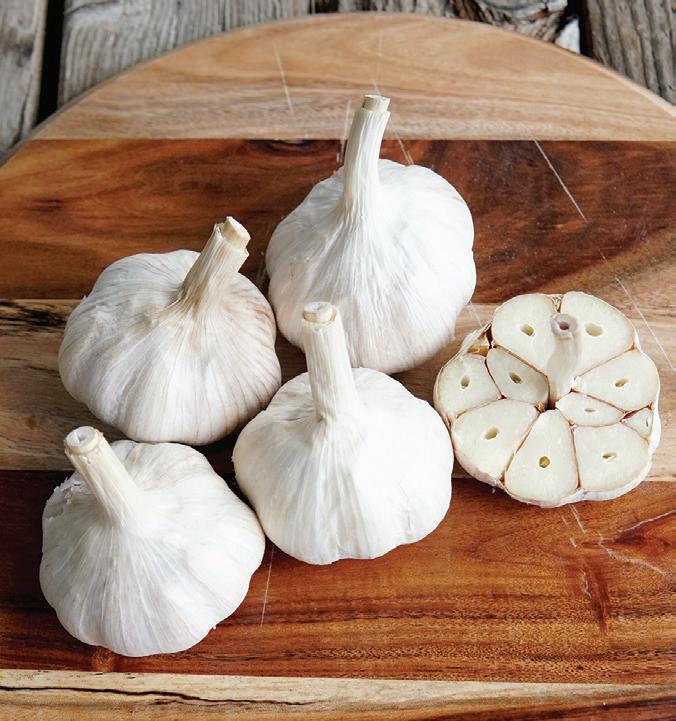



 Uzbekistan
Ukrainian Red
Spanish Roja
Purple Glazer
Svea
Uzbekistan
Ukrainian Red
Spanish Roja
Purple Glazer
Svea




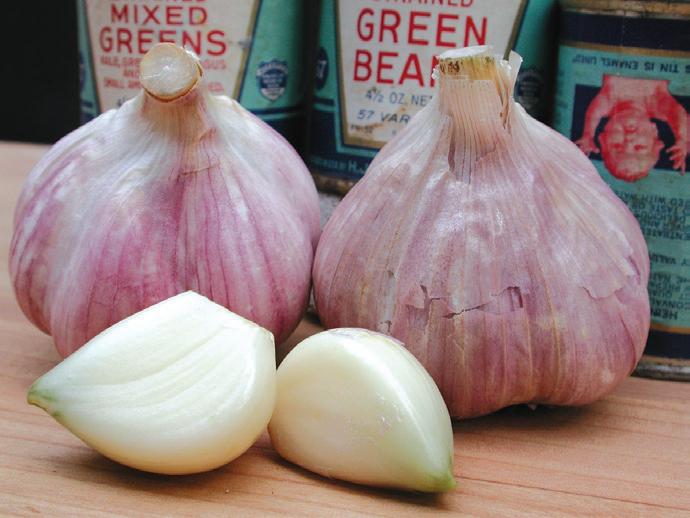

Late-season, Porcelain type. A terrific, adaptable variety that yields bulky bulbs with a succulent flavor that’s balanced with a touch of spice. Silky white heads are lightly streaked with purple and hold 4‒6 fat cloves that are wonderful roasted. A good keeper, too!
XG309G GERMAN WHITE ORGANIC
8
GERMAN RED
Mid-season, Rocambole type. German Red is a full-bodied, strong and spicy garlic that reliably produces large, satiny white and purple heads. The easy-to-peel cloves are wrapped in fawn colored skins. A widely popular variety that sets the standard for true garlic flavor. Grows particularly well in colder regions of the country.
XG211C GERMAN RED
Mid-season, Purple Stripe type. A stunningly beautiful garlic with large bulbs and an amazing flavor that matches its looks and size. Purple outer wrappers protect the violet-tinged cloves that burst with a fiery flavor and mellow out with a pleasant aftertaste.
XG180C DUGANSKI
8 oz 5 lbs 1 lb $20.95 $31.95 $114.95
PREMIUM NORTHERN WHITE
Late-season, Porcelain type. Finally, good strong garlic in a large clove! The heritage of this unique garlic can be directly traced to northern Germany. It could possibly be the most cold-hardy variety known, having been documented to –18°F in Eastern Oregon. And one grower, who cultivated this variety in New York for more than 10 years, claims it withstood –60°F. Let us know how it does for you! It’s a potent hardneck that is easy to peel.
XG229C PREMIUM NORTHERN WHITE
Garlic is shipped only in the fall—September through mid-October, depending on the season and the variety. Quantities are limited; order early for best availability. Sorry, not available to Idaho, US Territories, or Canada.
BAVARIAN PURPLE
Mid-season, Rocambole type. Folks who regularly include garlic as a part of their diet typically like stronger-flavored garlic like Bavarian Purple. After eating half of a clove, we found that the heat built quickly, made the eyes water, then disappeared just as fast with no aftertaste. Develops a tremendous system of roots that gives it excellent stability in hard-winter regions. Stores 9 months to a year.
BAVARIAN PURPLE

Mid-season, Purple Stripe type. A superior allaround garlic and staff favorite, this variety has a delectable flavor with a mild spice. Persian Star lends itself to baking, roasting or enjoying raw. Uncover the sleek white outer wrappers to reveal beautiful lilac-streaked clove skins. Originally purchased at a bazaar in Uzbekistan.
XG176C PERSIAN STAR
$31.95
Mid-season, Purple Stripe type. A top-notch producer in cold climates, Siberian deserves consideration for all northern gardeners. The cloves are protected by an attractive light pink skin that becomes even redder when grown in high-iron soils. This clean, medium-to-strong flavored garlic will warm your soul on the coldest winter evening. Best of all, it is purported to have high allicin content, possibly the highest of any garlic. Allicin supports normal cholesterol levels, boosts the immune system, and enhances circulation.
XG238C SIBERIAN
8
METECHI
Mid-season, Purple Stripe type. A powerful hardneck, Metechi delivers robust garlic flavor along with a sharp bite. Raw, it's fiery hot, finishing with a lasting spice. Cooking will tone down the heat while still holding that big garlic taste. This variety has thick, white-wrapped bulbs that hold 4‒6 bulky cloves clothed in blushed skin with purple accents. Exceptionally cold-hardy plants have broad, upright leaves.
XG230C METECHI
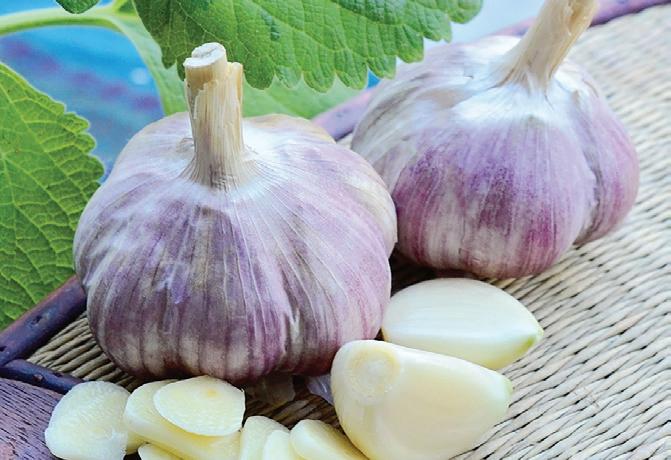

Late-season, Purple Stripe type. This Middle Eastern hardneck comes to us from Shvelisi, Georgia. One of our best all-around cooking varieties because its full-bodied flavor lingers and is retained after cooking. Especially nice choice for baking as it has a very creamy texture. Easy to peel heads are wrapped in very attractive, striped wrappers surrounding pink clove skins. Stores 4–6 months.
CHESNOK RED
8 oz
Mid-season, Marbled Purple Stripe type. This exceptionally reliable garlic produces beefy heads with 6‒8, stout cloves. White wrappings cover the heads, and the buff-skinned bulbs are streaked with shocking purple. A warming, mellow flavored garlic that tastes great raw or roasted. It’s easy to peel and boasts a long shelf life!
XG328C PURPLE RUSSIAN
8
$20.95 $31.95
Late-season, Porcelain type. A magnificent garlic in every way, these huge heads contain 4-5 fat cloves with a hot, pungent, long-lasting flavor. The silken skin on the cloves is streaked with purple-red, and the heads are wrapped in creamy white. Excellent storage, too.
XG242C ROMANIAN RED
8 oz 1 lb
$20.95 $31.95

The root-pruning & drainage qualities of ordinary fabric planters with the added benefits of sustainable and biodegradable/ compostable material—all in one exceptional product! Our Hemp Planters are roomy enough to accommodate a planting with a very developed root system and perfect for a one-season crop like potatoes, tomatoes, squash and more! With a 9–12 month lifespan, this 40 liter (over 10 ½ gallon) container is sturdy enough to cultivate the crop and offers easy, no-waste, end-of-the-season cleanup. We especially like it for cultivating potatoes or sweet potatoes; at harvest time, you can just pull apart the planter and throw it in the compost! Measures 14 ½ inches in diameter and 14 ½ inches tall.

Mid-season, Porcelain type. In trials at Michigan State University, Music out-produced all others with a harvest of over 13,500 pounds per acre! White skinned with just a blush of pink, this garlic makes big cloves that are easy to peel. The taste is a medium hot, true garlic flavor. Exceptional shelf life for a Porcelain type, Music will store 9 months to a year. Very cold tolerant.
XG223C MUSIC
8 oz 5 lbs 1 lb $20.95 $31.95 $114.95
Alliumampeloprasum Not a true garlic, these enormous bulbs have much milder and sweeter flavor than garlic, as it’s related more closely to a leek.
Elephant garlic is planted 6–8 inches apart and covered with 4–6 inches of soil. See garlic culture for fertilization and harvest information.
Garlic is shipped only in the fall—September through mid-October, depending on the season and the variety. Quantities are limited; order early for best availability. Sorry, not available to Idaho, US Territories, or Canada.
XG406C ELEPHANT
Late-season. These huge cloves produce softball-sized heads. The truly impressive plants easily reach 4–5 feet and the flowers dry nicely for arrangements. Remove the flower head to promote larger clove size. Cloves per bulb: approximately 5–7. Cloves per pound: 8–14. 1
$114.95
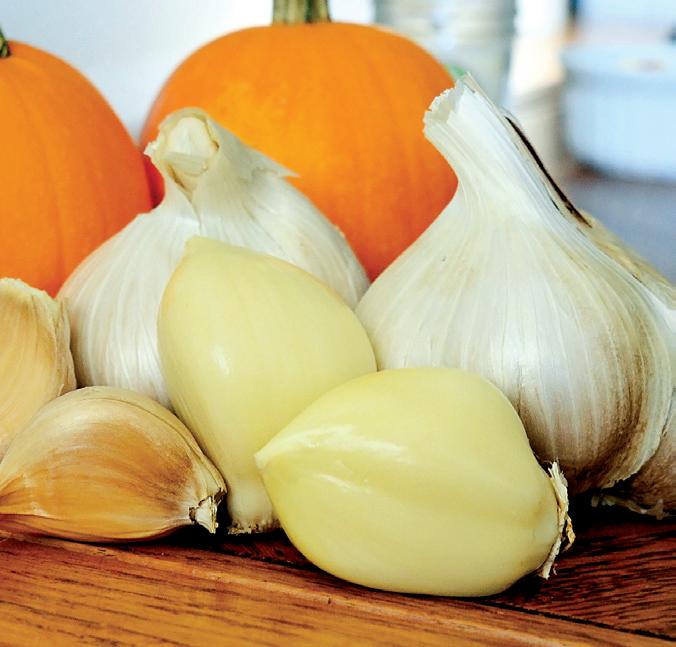







Allium sativum subsp. sativum
Cloves per bulb: Approximately 6–18 Cloves per pound: Approximately 50–90
These varieties produce cloves in several layers around a soft central stem. Approximate cloves per pound can vary based on seasonal conditions and the variety. These easy-to-grow garlics are excellent in the kitchen and usually have the best storage qualities. Great for braiding.
Late-season, Silverskin type. If reliability, high yield and long storage are what you want in a garlic, then Silver White is the choice for you. This Silverskin thrives in both cold and hot climates, produces beautiful, fat bulbs and stores at least 12 months! Silver White's hefty bulbs are covered with pure white wrappers that make gorgeous, long-lasting braids. Each head holds 15–20 cloves that are protected with red-blushed skins. A mild-flavored garlic, it develops a stronger bite in storage.
XG212C SILVER WHITE
8 oz 1 lb
$20.95 $31.95

Mid-season, Artichoke type. Inchelium Red is a national taste-test winner in the softneck division. This mild-flavored garlic is great baked. This large, top-quality softneck was discovered on the Colville Indian Reservation in Washington. Stores very well for 6–9 months.
Mid-season, Artichoke type. Introduced into North America around 1900, Polish Softneck is larger than most softnecks and has proven to be one of the most winter hardy. An excellent choice for northern gardeners, but it also performs well in southern regions. This one’s for lovers of hot garlic! Even after roasting, when most garlic mellows out, Polish Softneck maintains impressive heat that’s not too overpowering. Good choice for braiding.

The very best from around the world!
A festive selection of mid-season hardneck garlics, including the hardiest Siberian, the spicy Metechi from Georgia, and the exceptional Music from Michigan. Truly a garlic lover’s dream, this fall combo consists of three 8-ounce packages of each delicious and long-lasting variety (a savings of $15.90). Occasional substitutions mayoccurwithinthecollection.
XG186C FALL GARLIC FESTIVAL
three 8 oz pkgs $46.95
Here’sastoryofsomelovelygarlic... Softneck garlics are valued for their extended shelf life, and hanging the whole heads where they receive good air circulation is ideal conditions for garlic storage. It makes good sense to store your softneck garlic harvests in braids, and for this reason we’ve assembled 3 of our top braidable varieties in this money-saving combo. One order contains 8-ounces each of Polish Softneck, Italian Late, and Susanville. Occasionalsubstitutionsmayoccurwithinthe collection.
XG404C THE BRAIDING BUNCH
three 8 oz pkgs $44.95
Mid-season, Artichoke type. Considered an improved selection of California Early. This popular softneck is white skinned with some occasional pink. It’s also one of our best varieties for roasting. The mild but true garlic flavor is a hit with all garlic fans. Stores for 6–9 months.
XG325C SUSANVILLE
8 oz 1 lb
$20.95 $31.95
Garlic is shipped only in the fall—September through mid-October, depending on the season and the variety. Quantities are limited; order early for best availability. Sorry, not available to Idaho, US Territories, or Canada.
We’ve made your garlic shopping easy with this combination of two of our most popular and tasty varieties. One each, hardneck and softneck variety, for mouthwatering, scrumptious fresh-from-the-garden flavor and long-lasting storability. Each combo consists of 1 package of Music (hardneck) and 1 package of Italian Late (softneck). Our small combo consists of 2 8-ounce packages (a savings of $6.95), and our large combo consists of 2 1-pound packages (a savings of $13.95). Occasional substitutionsmayoccurwithinthecollection.
XG405C GREAT GARLIC COMBO
two 8 oz pkgs two 1 lb pkgs $34.95 $49.95
Susanville Silver White Inchelium RedAlliumcepa, Aggregatum Group
Bulbs per pound: Approximately 15–30, unless otherwise noted.
Culture
l See garlic culture on page 17
l Unless otherwise stated, our shallot varieties are adapted to 36–55° latitude
Direct Sowing
l Plant the root ends down and cover with ½ inch of soil and mulch with clean straw or leaves to 4 inches
Harvest & Storage
l Bulbs are ready to harvest when leaves have turned yellow and fall over
l Standard yield for shallots is about 4–5 times the amount planted
l Cure shallots like onions, see onion culture on page 33
Alliumcepa, Aggregatum Group
Hardy to zone 4.
French-type shallots are an essential part of fine cuisine. We recommend the flavorful Santé Shallots. They produce exceptionally high yields and store well. The extra large bulbs are round with brown skin and a pinkish-white flesh. Approximately 10–20 bulbs per pound.
XG409C SANTÉ
Days to maturity are calculated from date of direct seeding.
Culture
l See onion culture on page 33
Shallot bulbs are shipped only in the fall— September through mid-October, depending on the season and the variety. Approximate bulbs per pound is 15–30, but this can vary based on seasonal conditions and the variety. Shallots need to be planted shortly after arrival. Quantities are limited; order early for
XG414C FRENCH
French Shallots are popular with gourmets for the smooth, rich onion flavor they possess. Maturing in late summer, each bulb will have divided to produce a cluster of bulbs ready for fresh cooking, pickling, or making vinaigrette. Stores up to 6 months. 1
$89.95
Allium oschaninii The culinary star! Grays are considered the crème de la crème among shallots for their delicious, umami flavor. Sought out above all other varieties, these fetch the highest prices at market—and for good reason! Although the bulbs tend to run smaller than others, their magnificent flavor and quality in recipes more than makes up for their relatively diminutive size.
XG416G GRAY ORGANIC
1 lb 5 lbs $34.95

(F1) 115 days. A first-class, award-winning echalion or banana shallot, Crème Brûlée produces elongated, very large bulbs with rich, pungent shallot flavor that’s high in natural sugars. The 4 inch long bulbs have burnished rose gold skin and purple ringed-white flesh. These delicious alliums have easy-to-peel skin, making them a pleasure to work with in the kitchen and even more enjoyable at the table. We've found that even if the echalion plants haven’t fully lodged prior to harvest, they will still dry down and store excellently.




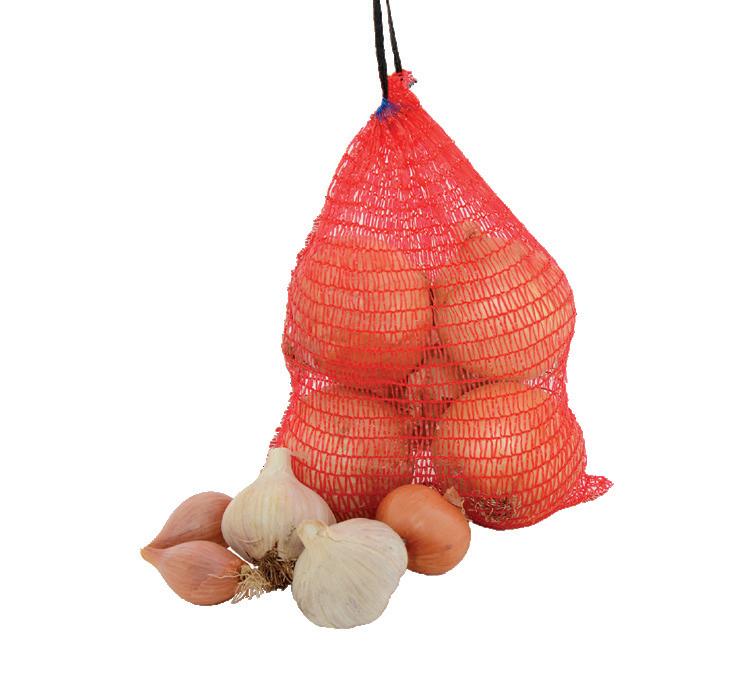
(F1) 95 days. We’ve trialed a lot of shallots from seed over the years, and Davidor has proven to be reliably productive, early maturing and particularly well suited for our Pacific Northwest growing conditions. Crops yield beautiful, elongated, pink bulbs with easy-to-peel skins and cream-colored flesh. An intermediate day type that’s better adapted than Conservor.
ON535C DAVIDOR
 Santé
Santé

(OP) Triticum aestivum (A) This treasured heirloom is a must grow for gardeners who love to bake. It was originally brought to Canada by Scotsman, David Fife, in 1840. When ground as whole wheat flour, it imparts a unique and delectable flavor of herbs, nuts, and spices into breads, pastries, and other baked goods. Its extraordinary taste has earned it a nomination to the Slow Food Ark of Taste and high demand from artisan bakers. Its proven adaptability means it reliably produces in a wide range of climates as well as a spring or fall-planted crop depending on region. We are very proud to offer this precious variety thanks to a local friend and organic farmer here in Oregon. Recommended seeding rate: 50–100 pounds per acre.
WW4431G

YAMHILL SOFT WHITE WINTER WHEAT (OP) Triticum aestivum (A) A dependable producer in the Northwest since the 1960s. Performs better on wet soils than other wheat varieties. Makes great flour for gravies, sauces, biscuits, and cakes. Recommended seeding rate: 3–4 pounds per 1000 square feet; 70–150 pounds per acre.
WW4437C

(OP) Triticum aestivum (A) This cool-weather grain is quick germinating, cold tolerant, and has an extensive fibrous root system. Adaptable to a wide range of soils, Winter Wheat is sown in late summer for erosion control and tilled under in early spring to add organic matter. Winter hardy nearly anywhere, and won’t go to seed until its second year of growth. Recommended seeding rate: 3–4 pounds per 1000 square feet; 70–150 pounds per acre.
WW4413C

(OP) Hordeumvulgare (A) A recent development from Oregon State University, where researchers have been focused on breeding barley with no hulls, or naked barley. Hence, Streaker is making the scene! This multicolored blend of 3 pure, 6-row barley lines (white, brown and blue) is excellent for use as whole berries, coarsely ground in a couscous style, finely ground flour, and malted for beer brewing. As a naturally naked grain, the need to remove the hull and much of the nutritional value that goes with it, is eliminated. All the wholesome nutritional value of the whole grain is intact without the work with this exceptional blend. Resistant to stripe rust. Recommended seeding rate: 10–15 seeds per square foot or 100 pounds per acre.
WW4459G
l Grains require modest levels of nutrition to produce good quality proteins
l Excessive soil fertility will cause lower protein levels and may lead to lodging (heavy heads falling over)
l Winter varieties require cold temperatures in order to produce seed heads (vernalize) in spring; they should be planted in the fall
l Plant mid-September through mid-October
l For the smaller-scale grower, broadcast the seed over the surface of the soil and rake in to ensure good soil contact
l Recommended seeding rate: 3 ½ lbs per 1000 square feet
l Seed can also be drilled at 2 ½ lbs per 1000 square feet―plant 1‒2 inches deep
l Mulch with clean straw or leaves to 4 inches
l Common insects: aphids, thrips
l Insect control: Pyrethrin
l Common diseases: stripe rust, stem rust, powdery mildew
l Disease prevention: plant disease resistant varieties, for powdery mildew use Zonix
l Both winter and spring varieties of grains are generally ready for harvest in August
l Timing the harvest to ensure optimal moisture level reduces loss to shatter or grain resprouting―seed heads should be dry and resist denting by fingernail (ideal moisture content is 13% or less)
l Small-scale wheat growers can use a hand sickle to harvest―tie into bundles, called "shocks," and stack upright in the field to dry before threshing
l “Hulless” varieties can easily be cleaned by hand-threshing and winnowing; other varieties may require flailing or mechanical threshing
l Store in airtight containers in a cool, dry location
l Complete harvest and storage information included with each order
Japanese stainless steel is held in the highest regard, and this hand sickle’s comfortable dimensions make its sharp, serrated blade perfect for tasks from harvesting cereal grains and pruning cane berries to simple hand weeding. We found its gentle curve especially useful for select asparagus harvests, cutting stalks an inch below the soil surface without disturbing the surrounding crop. A well-finished wood handle holds the 6 ½ inch blade securely, for a total length of 14 inches.
ZTO978
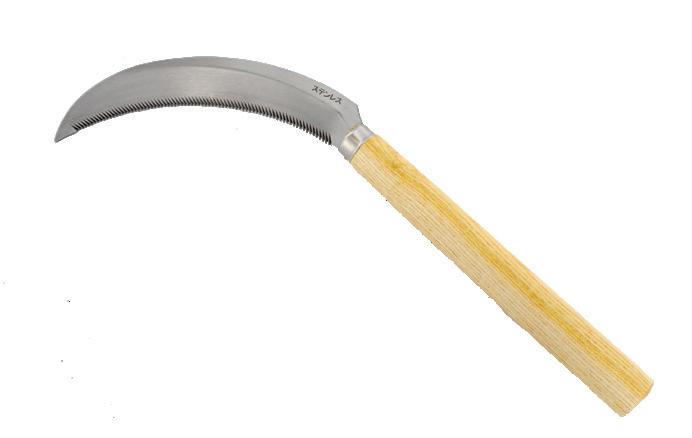
Brassicaoleracea, Acephala Group
(F1) 60 days. One of the most winter-hardy kales, Winterbor has finely curled, thick, bluegreen leaves. Very vigorous, it can grow up to 2 feet, developing an abundance of ruffled leaves. A magnificent early spring and late fall kale.
KL358C WINTERBOR
Days to maturity are calculated from date of direct seeding.
Culture
l Kale is a cool-season crop that performs best in spring and fall
l In wet climates, ensure adequate plant spacing to reduce pest and disease issues
Direct Sowing
l Sow June‒July
l Cover seed with loose soil, vermiculite, or sifted compost and water evenly
Transplanting
l Start May–July for transplanting June‒August
l Work in ½ cup of TSC's Complete fertilizer around each plant
Insects & Diseases
l See Brassica Insect Information on page 9
l Common diseases: leaf spot, black rot, fungal diseases, mold, mildew, club root
l Disease prevention: dispose of diseased material, proper crop rotation of 3‒4 years, apply Zonix for mildews
Harvest & Storage
l Harvest leaves from the bottom up at any size
l Cool weather and frost brings out best flavor
l Store at 36°F and 95% relative humidity

PRIZM


(F1) 50–60 days. A compact version of the ever-popular Winterbor. Prizm produces heavily frilled, short-stemmed, green leaves. The smaller-statured plants are sized just right for smaller gardens or container cultivation, and with its quick growth rate, can provide continuous harvests.
¼
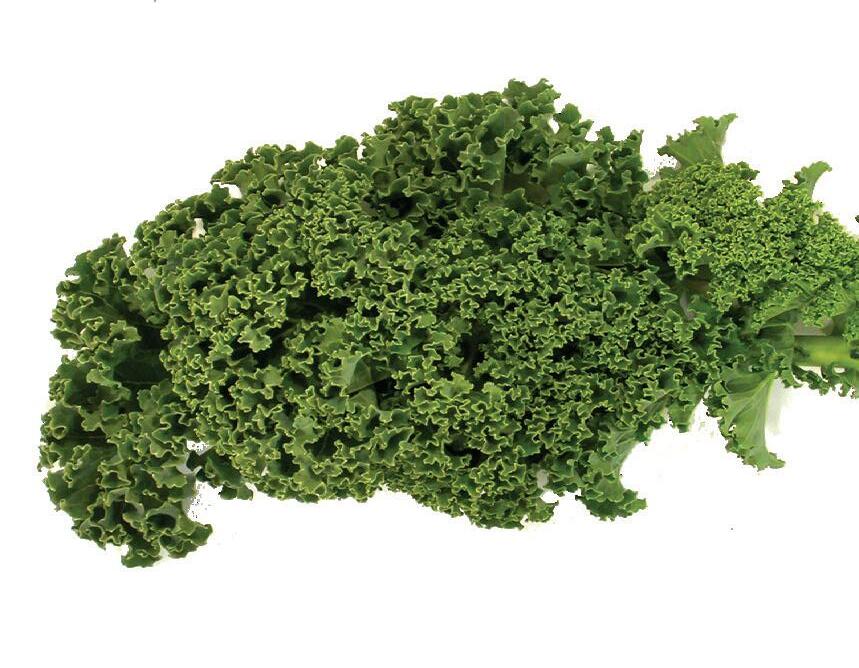
(OP) 50–60 days. This Oregon-bred variety is a striking twist on the strap-leaf style kales. It sports puckered, brilliant blue-green leaves highlighted with shocking pink midribs. Along with its showy appearance, Dazzling Blue proves to be especially cold tolerant. Bred by Hank Keogh.
KL379G DAZZLING BLUE
(OP) 50 days. This eye-catching lacinato type kale is also known as Black Palm, as it does resemble a palm tree. The dark green leaves are 2–3 inches wide and 10 inches long, and have a blistered/crumply appearance. A melding of cabbage and kale, it is extremely winter hardy, becoming especially sweet after a freeze.
KL363C NERO DI TOSCANA
1 gram ½ oz 5 grams $3.95 $6.45 $10.95
KL363G NERO DI TOSCANA ORGANIC


(OP) 50 days. This gorgeous, frilly-leafed kale is an excellent source of hearty, fresh greens that are packed with antioxidants. In only a month you’ll be enjoying tender baby greens, or allow some plants to mature to their full size of 2–3 feet tall and 2 feet wide. Undaunted by cold weather, these sturdy plants become more vibrantly colored as the temperatures drop.
KL377C SCARLET
(F1) 50 days. Wow, a completely magenta kale! This vigorous and cold-hardy edible landscape plant is both beautiful and tasty. Mild and crisp, this finely curled kale adds a flash of color to salads. Redbor grows 18–24 inches tall.
(OP) B.napus 50 days. We are impressed with the high marks this variety continues to earn in our kale trials. It maintains a wonderful kitchen-ready quality in the garden long after most other overwintered kales bolt. Frilly, dark green leaves form a cold-tolerant, 24 inch rosette at maturity.
KL357C

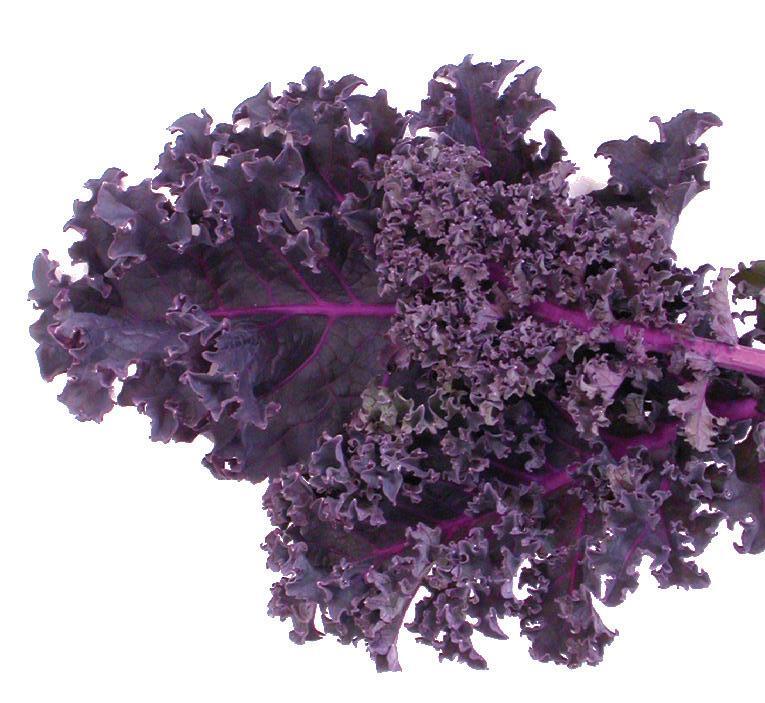

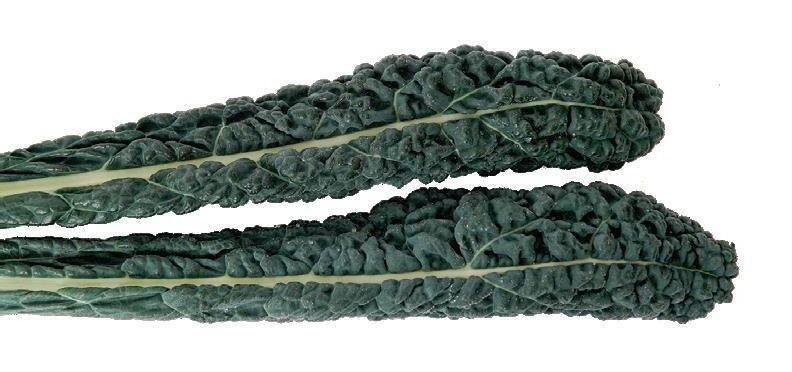
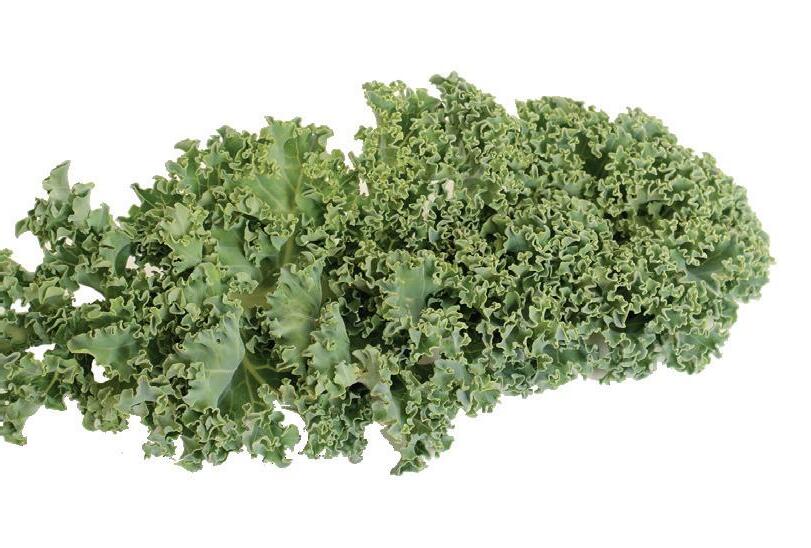
NEW EBONY
KL368C EBONY
(F1) 62 days. Enjoy a long season of hearty, fresh greens with this new, bolt-resistant lacinato. Ebony’s compact habit and deeply puckered, thick leaves are a great fit for the late fall and early spring gardens, as the coldtolerant plants are built for hunkering down under a blanket of snow. At 22 inches tall, they produce a continuous harvest of richly colored, dark slate-blue leaves. ¼



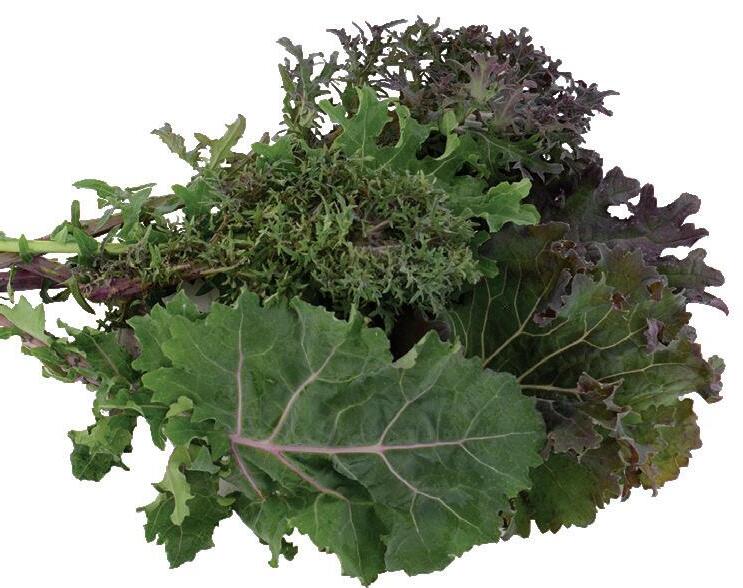
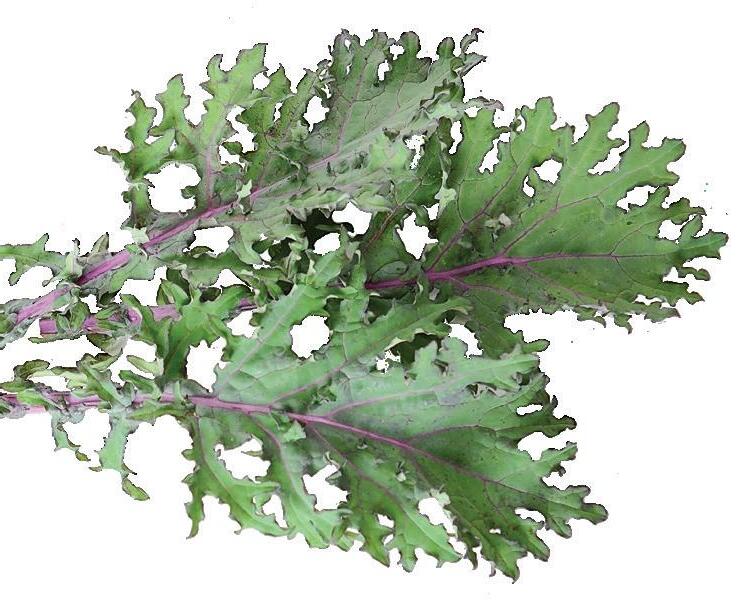
(F1) 60 days. A hearty, frilled, green kale for all your cool-weather dishes. Arrow-straight stems make slicing the leaves off the rib a fast, clean process. The high-yielding, uniform plants produce plenty of tasty greens for kale chips, salads, soups and all your kale-centered favorites.
(OP) B.napus45 days. Deeply cut and super frilled at maturity, the stunning, green leaves are visually spectacular and a mouthfeel sensation! A must-have for the winter garden, cold weather enhances this variety’s natural sweetness and unique texture. A truly remarkable introduction by Jonathan Spero at Lupine Knoll Farm, we are continuing to make selections for more uniform production at our research farm.
KL354G SIBER FRILLS ORGANIC
(OP) 61 days. We love this improved lacinato's uniformity, bolt resistance, cold tolerance, and the neat, tighter habit that sets it apart from others in its class. The vigorous plants produce easy-to-harvest rosettes of deeply savoyed and pigmented leaves. Growing to 15 inches wide and 19 inches tall, Black Magic yields an abundance of flavorful greens for continuous picking or whole-plant harvest.
(OP) B.napus 30 days. A fabulous array of Siberian kales, it delivers a multitude of unique leaf shapes from delicate waves to tight frilly curls. And what color! A visual feast of light green, blue-green, purple, and red. These kales are mild and very cold tolerant.
KL360G WILD GARDEN KALES ORGANIC
(OP) B.napus 55 days. Red Russian is considered to be highly nutritious with powerful antioxidant properties. It’s also prized for its ability to be eaten as a baby leaf or if left to fully mature, it maintains its amazing sweet flavor. Purple stems support green leaves that are flat and toothed with purple veins.
KL365G RED RUSSIAN ORGANIC
For over 40 years now we have been in the business of helping self-reliant gardeners grow top performing, nutritious, best tasting fresh-from-the-garden food 12 months of the year. Many of our customers have asked for Territorial’s recommendations for seed varieties they should stock up on for their own seed bank and for growing each year as a wellrounded nutritionally balanced food supply they can depend on.

New to winter gardening, or not sure which varieties to choose? Here is a collection of our favorite, proven, cool-season varieties. A well-rounded and complete combination of crispy greens, spicy mustards, delicious Asian vegetables, and hearty root crops make this an ideal starter kit, or the perfect, no-brainer collection for anyone interested in cool-season gardening! Collection includes 20 fall and winter varieties, a desiccant package, and a winter catalog, all in a resealable, watertight bucket.
ZVG102*
* SHIPPING WEIGHT 5 POUNDS
$94.95

We’ve selected 30 of our best open-pollinated varieties especially suited for providing reliable food production and seed saving options. Knowing how to grow at least a portion of your own seed can be a very rewarding and beneficial aspect of food gardening. Each collection contains 27 vegetable, 2 herb, and 1 sunflower seed packages. For specific varieties, visit our website. All sizes are samplers unless otherwise noted. Sealed in a waterproof plastic bucket with 2 desiccant packages (helps to extend seed life) and a Territorial Seed Company Catalog with valuable growing information.
ZVG100*
* SHIPPING WEIGHT 5 POUNDS
$114.95

Days to maturity are calculated from transplant date.
Culture
l Leeks are a frost-hardy cool season crop requiring a long growing period
l Best growth is achieved with fertile, welldrained soil with a pH of 6.0–7.0
l Plant in a trench 5" deep and wide, work in ½ cup of TSC's Complete fertilizer per 5 row feet
l Blanch to increase the length of white stem by gradually filling in the trench as the leeks grow
Direct Sowing
l See onion culture on page 33
Transplanting
l See onion culture on page 33
Harvest & Storage
l Harvest anytime the leeks are ½ inch in diameter or larger
l Store at 36°F and 95% relative humidity
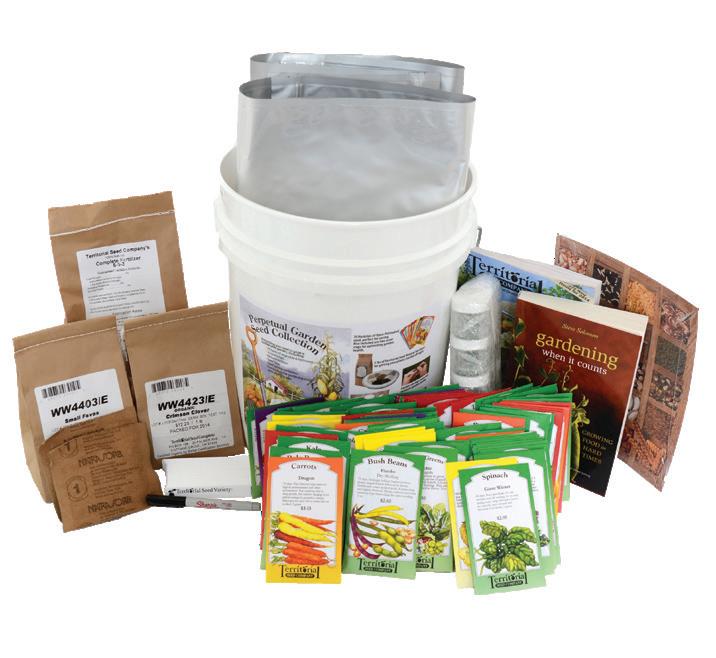
The seeds in this all-inclusive collection comprise of 70 open pollinated seed varieties and 2 cover crops for the most dependable, top-performing varieties available in the world today. Also includes 2 comprehensive books: Susan Ashworth’s Seed to Seed for instruction on saving seed; and Gardening When it Counts by Steve Solomon, sustainable gardening guru. Complete with seed saving containers, Mylar food storage bags, desiccant packaging to keep moisture at bay, natural fertilizer for productive crops, plant tags, a permanent marker, and Territorial’s Spring and Winter catalogs for valuable information on the seed varieties. All items are in a 5-gallon food storage bucket. A complete list of items can be found on our website: TerritorialSeed.com.
ZVG103* $389.95
* SHIPPING WEIGHT 18 POUNDS
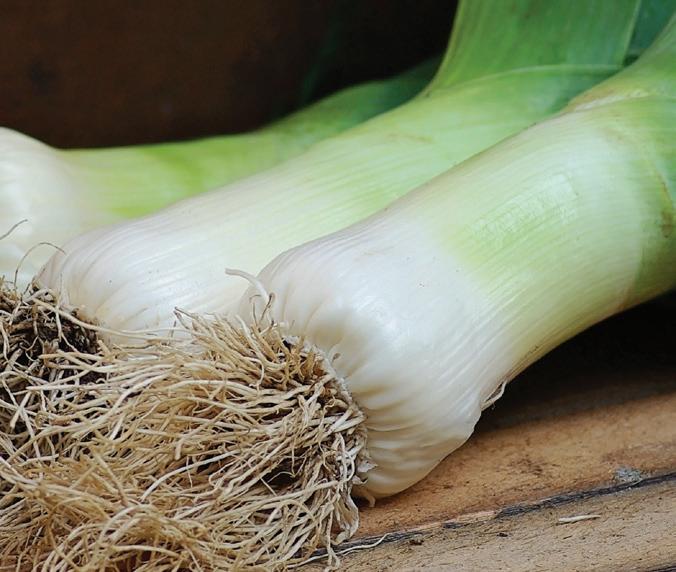
(OP) 105 days. One of the best winter-hardy leeks you can grow. This Scottish heirloom has provided families with hearty soups and stews since the 1830s. An old dependable leek that produces thick white stalks 2–3 inches in diameter. The mild flavor and smooth, tender stalks explain why this variety has been passed from one generation to the next. The largest leek in our trials and one of the last to bolt.
LK371C GIANT MUSSELBURGH

(OP) 120 days. Bandit is an improved open pollinated selection, boasting a thick shank with attractive dark blue green foliage. Minimal bulbing makes for a tidy, rail straight harvest and the very cold hardy plants resist splitting. Mulch well and possibly provide some coverage in northern gardens to enjoy a prolific stand of leeks in all their frost kissed sweetness through winter and into spring.
LK374G BANDIT ORGANIC
OSLO
(F1) 110 days. A superb, late-maturing leek for overwintering. Oslo boasts easy to clean, stout plants with broad, white shanks and dark blue leaves. Expect a long harvest window, as this crop also shows outstanding resistance to bolting.

(F1) 100 days. Comanche is our first choice especially for Pacific Northwest gardens. It’s an adaptable and high-yielding leek for both summer and fall harvest, producing clean, upright plants with long, thick white shanks and dark blue-green leaves. This one is easy to peel and clean, so it’s a pleasure to work with in the kitchen.

habit with long shanks. Especially sought after for baby leek production weeks ahead of the listed maturity; try a denser planting, thinning baby leeks as needed until you achieve proper spacing. Left to mature, the disease-resistant, strong-based leeks can hold in the field well into the cool season.
LK377C ZERMATT
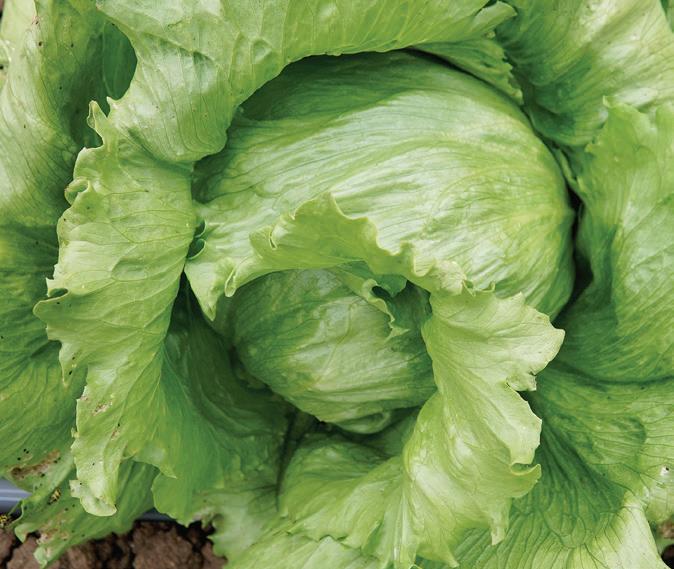
Regency 2.0

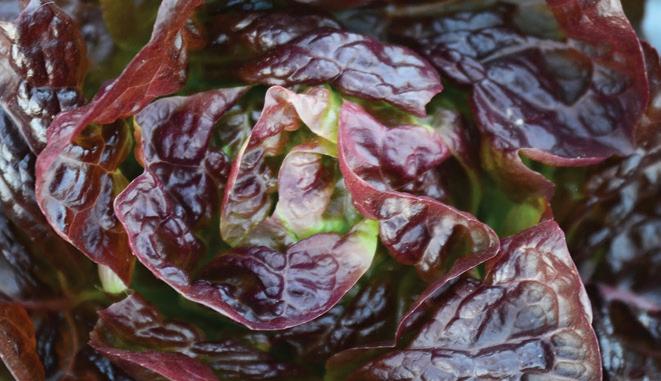


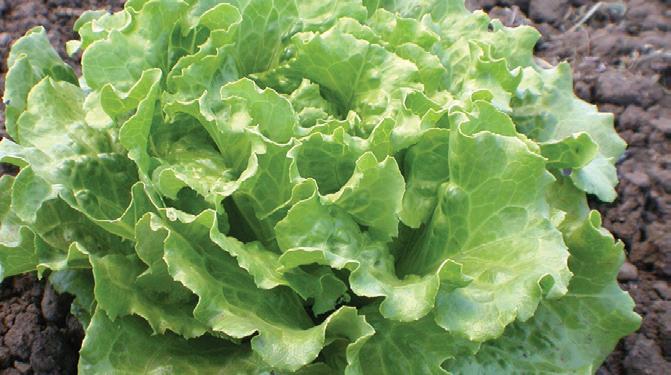
REGENCY 2.0
(OP) 55 days. In our trials, we found Regency 2.0 to be our favorite iceberg for its quick development of dense, sweet, and crisp heads. Plants are disease resistant and medium framed, lending themselves well to closer spacing in smaller gardens. Slow to bolt, Regency 2.0 produced well in a range of weather conditions including the heat of summer. DM, LMV, Tip Burn.
LT418C REGENCY 2.0
DRUNKEN WOMAN FRIZZY HEADED (OP) 55 days. While we won’t even venture to hypothesize where the “drunken woman” part of the name comes from, the “frizzy headed” portion makes much more sense as this unique butterhead forms a savoyed head. Robust 8 inch plants have mint green leaves that are tinged in mahogany red. LT384G

Lactuca sativa
to
(OP) 65 days. This eye-catching, cabernetcolored butterhead sports slightly ruffled, thick leaves that swirl into an attractive head with a brilliant green heart. Generous plants reach 12 inches wide and 8 inches tall with extended field-holding ability allowing them to maintain prime eating quality and absolutely bitter-free flavor. HR: DM 1–26, 28, 32, Nr 0, TBSV. IR: LMV 1.
LT471G ALKINDUS
(OP) 50 days. This is one outstanding cold weather performer! North Pole is a sweet, compact, light green butterhead that can be harvested throughout the winter and early spring. In mild regions, plant right in the garden and in cooler regions, place in a cold frame. Imagine the satisfaction of serving a salad at your holiday dinner that came from your own backyard. While North Pole is quite cold hardy, it tends to bolt quickly in warm weather so plant out a few weeks before first frost.
(OP) 56 days. Gardeners grow Continuity for how it looks as well as how it tastes. A real beauty, it features bronze-red outer leaves that encase a tightly packed, light green head measuring 12–16 inches across. This French heirloom is a staple in the European winter garden.
LT391G
Days to maturity are calculated from date of direct seeding.
Culture
l Lettuce performs best in cool weather, 60‒70°F, and grows in a wide range of soil types
l For extended harvest, plant every 2‒3 weeks
l Lettuce seed can be sown every month from February‒October
l A cold frame and cold-hardy varieties can stretch the growing season into the winter
l Apply 1 cup of TSC's Complete fertilizer per 10 row feet, and 1 inch of compost
l 1 gram of seed will sow 30 row feet
l Consistent watering is critical for best results
Direct Sowing
l Use row cover to improve germination and prevent soil crusting
l As soon as 2–3 true leaves have formed, thin loose-leaf types to 10–14 inches apart; icebergs, butterheads, romaines to 12–16 inches apart
Transplanting
l Start indoors 4‒6 weeks before anticipated transplant date
Insects & Diseases
l Common pests: aphids and slugs
l Pest control: strong spray of water for aphids or applications of Pyrethrin; baits, traps, or Cabbage Collars for slugs
Harvest & Storage
l While picking individual leaves helps extend the season somewhat, all eventually become bitter as they begin to bolt

48 days. This extremely uniform, all-green Batavia lettuce performs in all kinds of climates. Nevada has a tall open head with thick, bright, lime green leaves that are crunchy and have a wonderful nutty flavor. Very resistant to tip burn and bolting. DM, LMV.
Key to Lettuce Disease Resistance/Tolerance

(OP) 65 days. Truly different—the deepest, darkest, red romaine that we have trialed. Gazing into the heart of this romaine is like falling into a burgundy abyss. Simply beautiful. Tight, upright heads grow to 8 inches and are held cleanly off the ground. The smooth, succulent leaves have a crisp, clean flavor, without a hint of bitterness.
LT447G MARSHALL ORGANIC
½
$4.65
(OP) 52 days. Our new favorite Little Gem type. Rosaine produces very uniform crops of glossy maroon heads with green, dense hearts. Not only do these 6–7 inch heads look gorgeous, they’re succulent and tasty. We love Little Gem types for their compact habit and ability to pack a lot of plants in a tight space. Add superior disease resistance, and this is the variety that will be successful in the garden, coldframe, greenhouse, or hydroponic environment. HR: DM 16–26, 31, 32 (EU), F 1, Nr 0, Pb.
ROSAINE PELLETED
(OP) 65 days. Outperforming Little Gem in our trials and taste tests, this multi-season lettuce produced perfectly uniform, erect, compact plants. The deep green rounded leaves have a smooth margin, pleated midrib and a sweet, juicy flavor. At 8 inches tall and only 6 inches wide these plants can be packed tightly into a dense planting or container, and with an extensive disease package, you’ll have a healthy, delicious crop any time of the year.
HR: DM 16–21, 23–26, 28–32, Nr 0, Pb. IR: LMV 1, Rs.
LT475G
(OP) 54 days. Winter Density is an early, compact romaine. Its dark green leaves with an upright growth habit build an 8 inch tall densely packed head. You can count on Winter Density to be delectable, and it holds well at the market, too. Quite bolt resistant and suited to all sowing dates.
LT395G

(OP) 60 days. One of the most winter hardy lettuces we’ve ever grown. The large 9–11 inch light green head provides a lot of food value per plant, plus you’ll be eating it further into the season than you ever thought possible!
LT417G WINTERWUNDER ORGANIC
(OP) 55 days. Our darkest, glossiest loose-leaf from baby to full-size. This new introduction from Europe eclipsed the loose-leaf lettuce trials with its color and performance. At baby leaf size, Black Hawk sported its signature, deeply pigmented sheen and maintained it throughout its development. Superior to Merlot in texture, color and bolt resistance, it develops deep puckering and darker color after cool temperatures.
LT412G BLACK HAWK ORGANIC

(OP) 50 days. We’ve offered Green Salad Bowl for years because gardeners still love its wonderful mellow flavor. This one is a prime candidate for early spring sowings in a cold frame or even unprotected in the garden. Grows very rapidly for early spring salads and resists bolting when summer arrives. Frilly, deeply cut leaves form large, lime-green rosettes.
LT394C GREEN SALAD BOWL
LT394G GREEN SALAD BOWL ORGANIC

(OP) 55 days. Defying classification, this unique, new introduction forms a nicely packed head of thick, green, oakleaf-shaped leaves. We love how substantial this lettuce is compared to the fragile and delicate texture of traditional oakleaf types. Compact plants offer lots of excellent eating, and the strong disease resistance makes it a garden champ! HR: DM 1–9, Nr 0, TBSV. IR: LMV 1.
LT411G BAUER ORGANIC



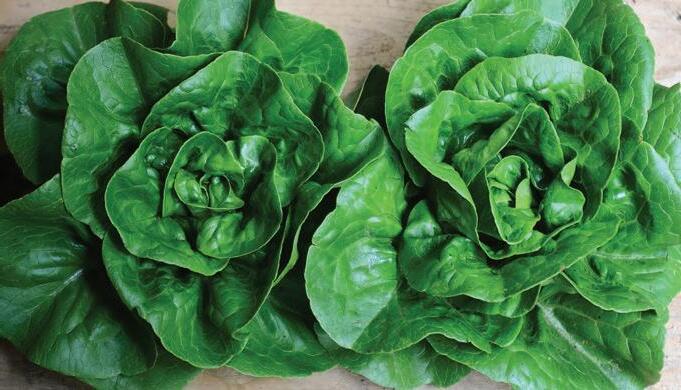
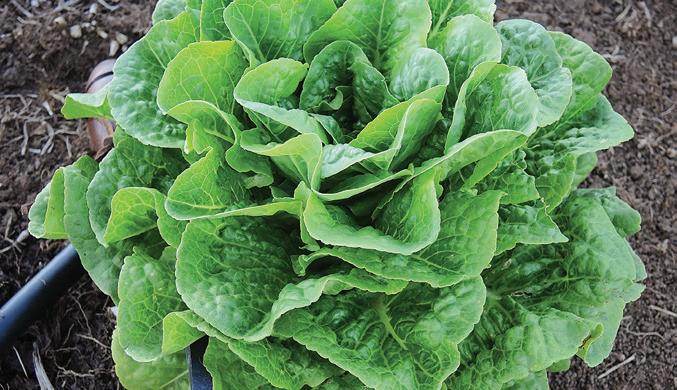

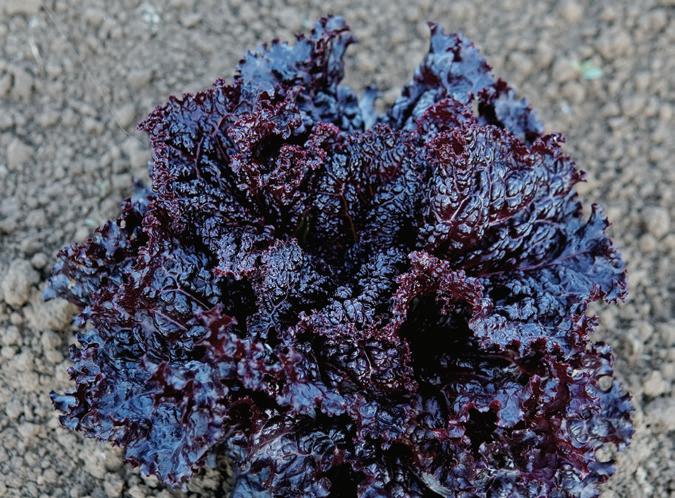
Broadcast seed over a 4 x 4 foot area for a 2–3 month winter harvest. Four grams will sow a 4 x 4 foot area (unless otherwise noted).
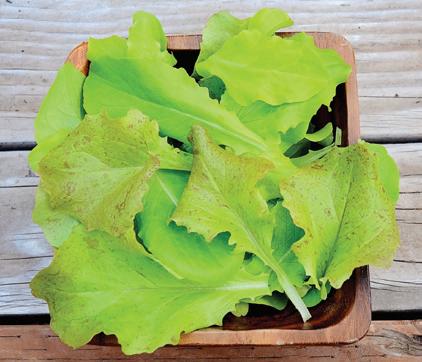
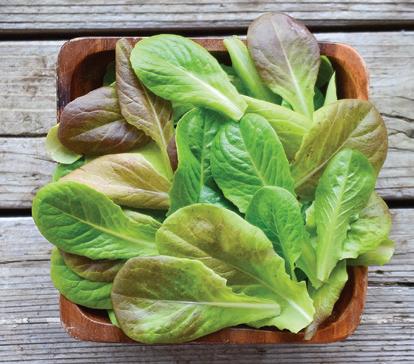
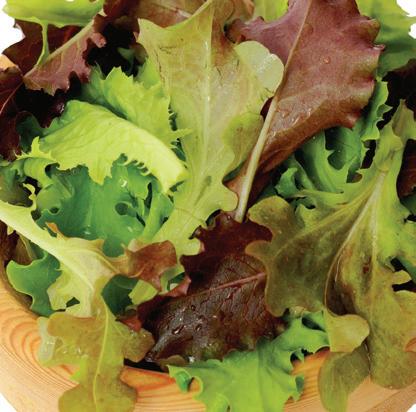

(OP) 48–56 days. A blend of our favorite lettuces in equal quantities: frilly green and red looseleaf varieties contrasted with crispy green romaines. Even as seedlings, their appearance is quite different, and they can be easily thinned to equal proportions in the row.
LT389C SUPER GOURMET SALAD BLEND
4 grams $5.95
YUKON WINTER LETTUCE MIX
(OP) 50–70 days. We've put together our most durable, cold-hardy varieties in this one exclusive blend. Includes various colored butterheads and the most winter-proven romaines.
LT410C YUKON WINTER LETTUCE MIX
3 grams $6.95
WILDEST GARDEN LETTUCE MIX
(OP) 30–50 days. This mix is a vast assortment of literally dozens of varieties, including selections of lettuce that remain unnamed and not available anywhere else other than in this unique mix. If you discover a certain selection that you are especially fond of, let a few plants go to seed, and save your own. LT432G

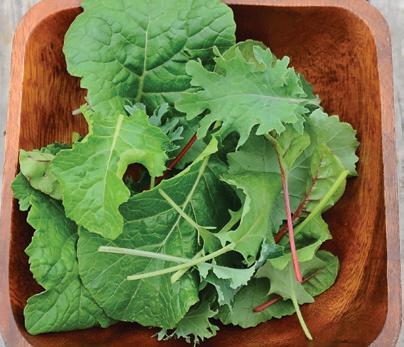


MESCLUN
(OP) 30 days. Mild Mesclun Blend provides a diversity of fresh greens for unique salads. The combination of flavors, textures, and colors was chosen to provide an even harvest. Our blend includes kale, red and green leaf lettuces, corn salad, as well as mizuna and tatsoi.
MS474C MILD MESCLUN BLEND
(OP) 28 days. A Territorial Seed exclusive! We’ve blended extra-deeply textured lettuce varieties in a beautiful array of colors for the highest volume mix. Contains green Batavia; ruffled red loose-leaf; and green, red and speckled Romaines.
LT481G LOFTY SALAD MIX ORGANIC 4 grams 1 oz $6.25 $31.95
(OP) 32 days. This famous mesclun salad blend is composed of 3 colorful, winter-hardy French lettuces—Continuity, Salad Bowl, and Mottistone—as well as Roquette, Corn Salad, Treviso radicchio, Broadleaf Batavian endive, Dark Green Italian parsley and Chervil. This makes a colorful salad mix as well as a wonderful summer garden landscape planting. Add pansies or violas for a celestial treat.
MS486C PROVENÇAL WINTER MIX

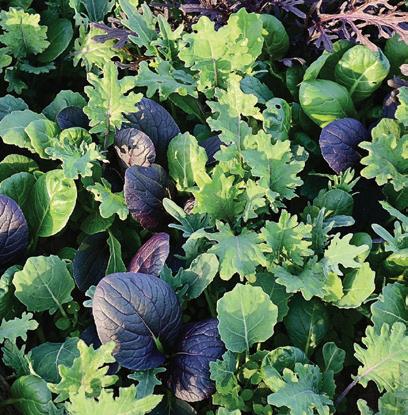
(OP/F1) 14–21 days. Microgreens are the highly nutritious first set of leaves from seedlings of gourmet greens. Stands alone with vinaigrette and also makes a stunning bed of greens to set off your culinary creations. Simply sow the Microgreens Mix in a flat or pot filled with soil and harvest the seedlings when their first set of leaves appear. Mix includes arugula, beet, red kale, purple mizuna, radish, and salad burnet. One ounce will sow a 4' x 4' area.
MS480C MICROGREENS BLEND 4 grams 1 oz $5.95 $12.95
ORGANIC MUSTARD MIX
(OP) 21 days. An organically produced, zesty mix of delicious mustards for a sensational stand-alone salad or for adding spice to mixes. This blend contains mizuna; tatsoi; and green, purple, and multicolored mustards with a variety of shapes and textures from soft to robust.
MS521G ORGANIC MUSTARD MIX 4 grams 1 oz $5.95 $12.05
BABY/BRAISING
(OP/F1) 28 days. This colorful, durable, multipurpose blend of brassicas makes a delicious salad mix as baby greens, or allow the plants to grow on for braising greens. Contains a beautiful assortment of purple pac choi, multicolored kales, tatsoi, and collards for lots of texture and flavors from mild and sweet to spicy.
MS523C BRASSICA BABY/BRAISING MIX 4 grams 1 oz $5.95 $12.15
(OP) 30 days. Unlike delicate leaf lettuces; this assortment of kale, red chard, beet greens, broccoli raab, collards, and dandelion greens can be steamed, simmered, braised, stewed, and sautéed. Whether served on the side or as a main entrée, hardy greens will bring a welcome change to winter meals.
MS497C WINTER GREENS BLEND 4 grams 1 oz
$6.85 $21.95
Microgreens Blend Super Gourmet Blend Wildest Garden Mix Lofty Salad Mix Mild Mesclun Blend Yukon Winter Lettuce Mix Organic Mustard Mix Brassica Baby/Braising Mix Provençal Winter Mix Winter Greens BlendFull-sized heads lose their bitterness and gain sweetness. Sow in July and transplant in August. Radicchio days to maturity are calculated from date of transplant.
Cichoriumintybus
Days to maturity are calculated from date of direct seeding (unless otherwise noted).
Culture
l Most gourmet greens will tolerate light to moderate frosts with minimal cover
l Plants are most vigorous and the flavors are better when daytime air temperatures are between 60–70°F
l Most greens are best direct sown
l Thin after second set of true leaves
l Apply 1 cup of TSC's Complete fertilizer per 10 row feet, and 1 inch of compost
l Cover seeds with Reemay or Grow Guard 20 to help deter birds and improve germination
l Sow greens every couple of weeks to ensure a continuous supply of young plants
Direct Sowing
l See lettuce culture on page 26
Transplanting
l See lettuce culture on page 26
Insects & Diseases
l Common insects: aphids and flea beetles
l Insect control: strong spray of water, or applications of Pyrethrin
l Disease prevention: 3–4 year crop rotation, and proper plant spacing allows air circulation to prevent molds
Harvest & Storage
l Harvest greens frequently and when young
l As with all greens, a rinse in cold water will help preserve the flavor and texture
VICTORIO
(F1) Foeniculumvulgare 75 days fall harvested. This short-day overwintering type of fennel is delicious braised, grilled, in au gratin, or raw in salads. The fresh anise flavor moderates somewhat when cooked. The large, round, white bulbs elongate slightly in northern areas. Bred for winter and spring harvest. Approximately 40 seeds per ¼ gram.
MS506C VICTORIO
¼
$3.85 $8.45 $21.95
Sow May–August. Contains more omega 3 fatty acids than any other leafy vegetable!
MINER’S LETTUCE
(OP) 65 days. Light green, serrated-edged leaves are speckled in splashes of ruby and wrap to form tight, dense heads that unfurl into knockout rosettes with a pleasant, mildly bitter flavor. The plants reach 11 inches tall and 16 inches wide and hold up extremely well in the field. Approximately 160 seeds per ¼ gram.
MS525G FENICE CASTELFRANCO ORGANIC
(F1) 81 days. Add a dazzling color combination, crisp texture, and a sweet-bitter flavor to enhance your cool-weather salads. Dense, round, 4–5 inch heads have brilliant red leaves with pearly white midribs. Leonardo is very quick to size up and is a great choice for late summer and fall plantings, as the best tasting and most colorful crops mature in cooler temperatures. Approximately 80 seeds per ⅛ gram.
MS483G LEONARDO ORGANIC
NETTUNO SUGARLOAF
(OP) 80 days. This sugarloaf produces dense, teardrop shaped heads of sweet, succulent greens balanced with a light touch of bitter. We're fond of sugarloaf types, and this one is the most productive with the most well-filled, dense heads of all the varieties we tried. Best when sown in July for harvest beginning late October. The uniform, sturdy crops hold well in the field into December. Approximately 120 seeds per ¼ gram.
MS524G NETTUNO SUGARLOAF
(OP) Cichorium endivia 75 days. This Tres Fin type endive flaunts dense heads of finely cut leaves. The frost-hardy plants reach 5 inches tall and a broad, 13 inches across with emerald leaves that blanch to a creamy heart. The crop has very good field-holding capacity and remains less bitter than other endives in its class. Approximately 150 seeds per ¼ gram.
MS518G BENEFINE ORGANIC
MS518P
(OP) Claytoniaperfoliata 42 days. This annual green is high in vitamin C and native to many moist areas of the country. Probably the most cold tolerant of the greens, Miner’s Lettuce will grow yearround in the cloche, greenhouse, or even unprotected in the maritime Northwest. Quickly regrows after harvest. Approximately 525 seeds per ¼ gram.





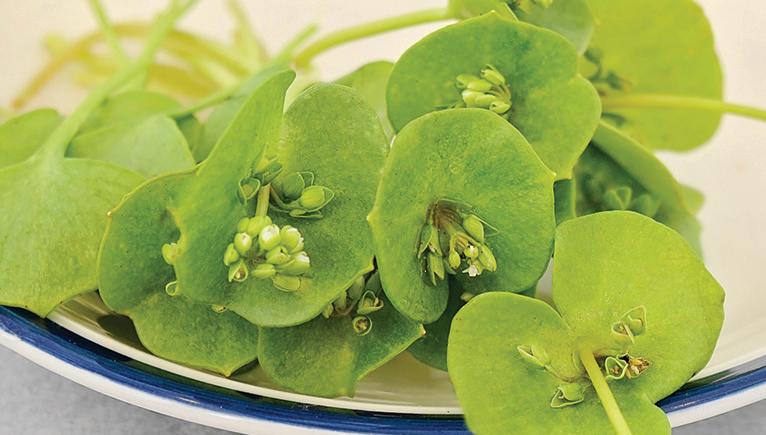



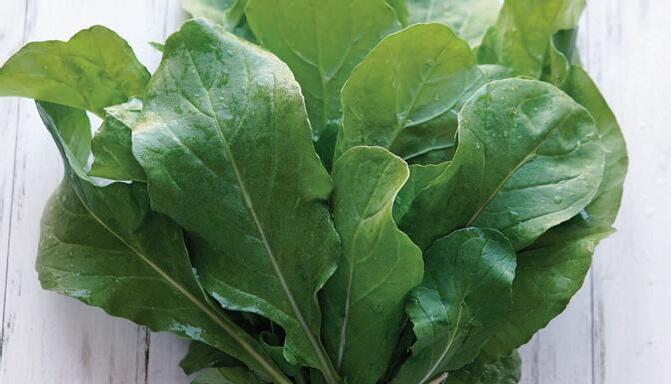

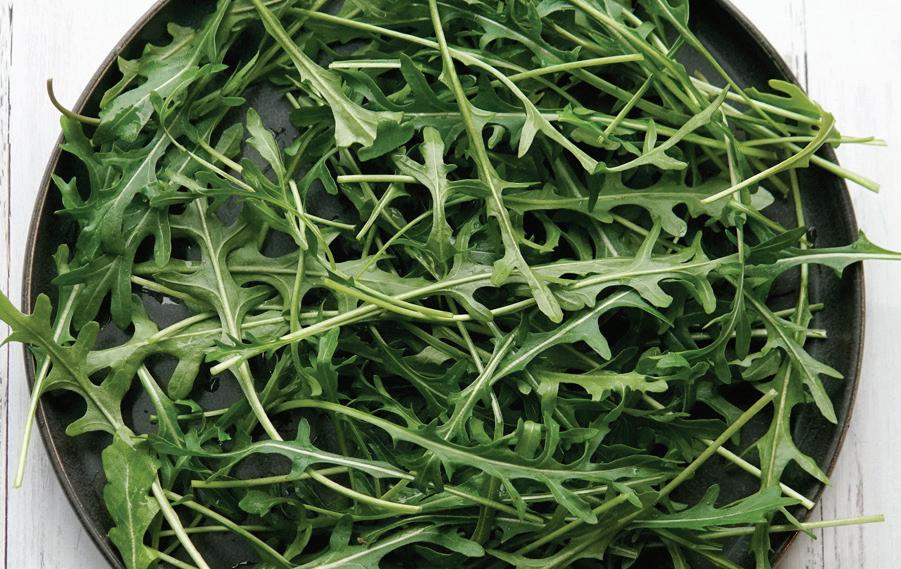
All of our arugula varieties are annuals.
Erucaspp.
NEW UBER
(OP) E. vesicaria 21 days baby, 40 days full size. Enjoy the tingly flavor of this easy-to-grow and harvest arugula in as little as 3 weeks from sowing. Uber is dressed up like a wild arugula, but its flavor is all salad. From baby leaf to full size, its thick, tender bite will keep your salads and sandwiches overflowing with fresh greens and lots of flavor. Approximately 300 seeds per ½ gram.
MS469C UBER
(OP) E. vesicaria 28 days. A very vigorous and early-maturing arugula, the upright, uniform plants produce lots of flavorful, crunchy leaves for delicious additions to salads. The adaptable plants are also very bolt tolerant and well suited for both in-ground and hydroponic cultivation. Approximately 200 seeds per ½ gram.
MS527C BALBOA
SPEEDY
(OP) E. vesicaria 30 days. Speedy’s serrated, bright green leaves have the shape of wild arugula, but the mild peppery pungency of salad arugula. It’s also the fastest of its type to mature and is especially recommended for late autumn, winter, and early spring cultivation. Approximately 400 seeds per gram. 1 gram
(OP) E. vesicaria subsp. sativa 30–40 days. Can be sown from early spring through late fall. Frost-hardy and easy to grow. Long, dark green, broad arrow-shaped leaves form a loose, open bunch. Grows 12–18 inches tall before bolting. Not bitter, this salad green has a jazzy, distinctive flavor. Approximately 550 seeds per gram.
DRAGON'S FIRE
MS471C DRAGON'S FIRE
(OP) 45–55 days. An exciting, new, wild variety with flaming red veins highlighting deeply lobed, dark green leaves. A descendant of Red Dragon, Dragon’s Fire spices up mixed salads with its contrasting color, shapely form, and delicious, zesty flavor. Crops are uniform and vigorous for year-round harvests. Approximately 1250 seeds per ½ gram. ½
BELLEZIA
(OP) 35–50 days. An arugula of distinction, Bellezia boasts tasty, dark green, deeply serrated leaves that stay clean on upright plants. Resists bolting for a longer harvest window and easily shrugs off Downy Mildew. Start cutting tender, baby greens at 35 days, and wholeplant harvest at 50 days. Approximately 1600 seeds per ½ gram.
MS502G BELLEZIA ORGANIC
(OP) 50 days. In trials, Étampes with its dark green, spoon-shaped leaves was shown to bear frosts and freezes better than other varieties, and stood reliably well in the garden into spring. Seed is from Switzerland. Approximately 500 seeds per gram.
MS492G ÉTAMPES ORGANIC
VIT
(OP) 50 days. Only a green with a glowing reputation could earn as many names: Corn Salad, Lamb’s Lettuce and Mâche. We offer Vit for spring or fall planting, and consider it one of the most delicious and substantial salad greens around. Leaves are succulent, firm, and dark green. Approximately 650 seeds per gram.
MS503C VIT
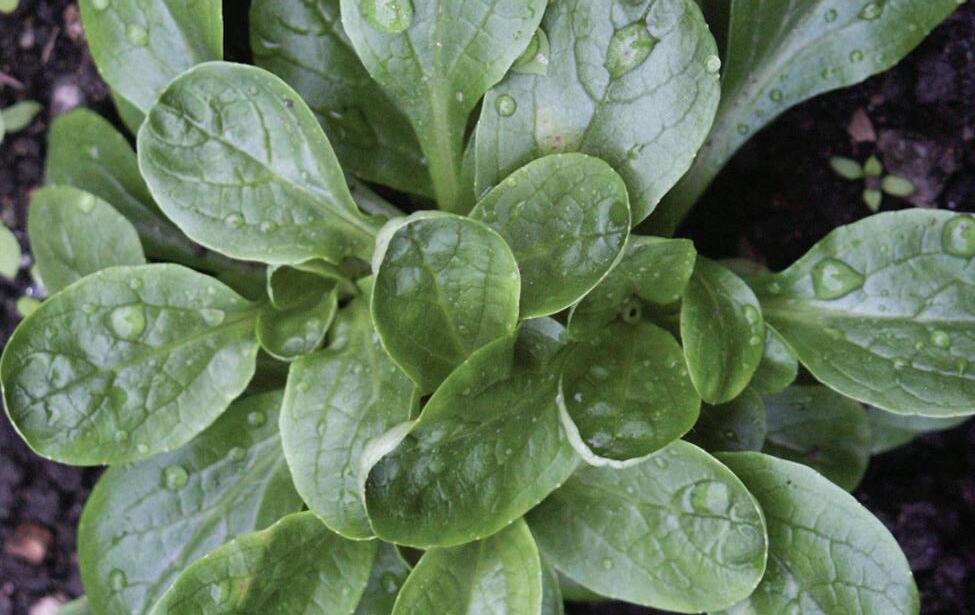

Brassica spp.
Days to maturity are calculated from date of direct seeding.
Culture
l Mustard greens are easy crops to grow if planted in early spring or late summer
l Mustards are best directly sown
Direct Sowing
l Sow July‒August
l Make a furrow 6 inches deep and sprinkle ½ cup of TSC's Complete fertilizer per 10 row feet in the bottom of the furrow
l Backfill the furrow and plant the seed l Thin after second set of true leaves
Transplanting
l Start July‒August for transplanting August‒September
l Use ¼ cup of TSC's Complete fertilizer around each plant
Insects & Diseases
l Common insects: flea beetles
l Insect control: Pyrethrin, silver mulch, or row covers at planting
l Disease prevention: 5‒7 year crop rotation
(OP) 30 days. Look for this fast growing mix to cover the full spectrum of colors, shapes, and flavors. Growing lime green, red-veined, solid purple and more, the leaves range from flat and smooth to savoyed and puckered. Fleshy stems encompass flavors from the most mild to fiery hot. MU527G

(OP) B.juncea 50 days. Green Wave has been a favorite American mustard (or tendergreen) for many years. Popular with gardeners for its upright plant habit, it grows to 2 feet and has a dark green, heavily curled leaf. An excellent producer, Green Wave resists bolting, so it can be grown mid-summer. Mild and succulent in all dishes.
GIANT (F1) B.rapa, Perviridis Group 45 days. Picture a melding of a tatsoi mustard and a pac choi, and you’ll have an idea of the essence of Green Giant. This exceptional variety produces large, spoon-shaped leaves in silky emerald with wide stems. An ideal selection for dense plantings so you can selectively harvest baby greens while allowing a portion of the plants to reach full size. Astoundingly bolt-resistant, Green Giant provides a season-long harvest of tender, mildly spiced leaves.
MU525C GREEN GIANT
½ gram ½ oz 4 grams
$3.95 $5.45 $9.95

(OP) B. carinata 40 days. We fell for this unusual leafy green immediately after the first bite. The hearty leaves have a very complex flavor with overtones of spice and garlic. Great for picking at the baby size in under 3 weeks, or waiting for fully grown leaves. Amara makes a delicious salad mix, standalone raw or lightly cooked. An extra cold-tolerant crop. Approximately 300 seeds per gram.
1 gram 1 oz 4 grams $4.15 $5.55 $8.95
(OP) B.juncea These sibling mustards are a very attractive pair of deeply toothed and super wavy greens with a pleasant, mild mustard flavor. Plant them both for the striking contrast of Joe’s bright green to Lizzy’s purple and the added loft and spice to salad mixes. Terrific for baby leaf mixes, but the mature plants have great field-holding and bolt resistance for a long harvest window of full-sized leaves.
FRIZZY JOE - 27 days (baby leaf)
FRIZZY LIZZY - 21 days (baby leaf)
FRIZZY LIZZY
(OP) B.juncea 40 days. The bracing spice of wasabi is one of our very favorite flavors, and we’ve found that taste once again in this extraordinary mustard. Wasabina’s extremely frilly, serrated leaves offer a great textural addition to dishes, and its mild, sweet spice is absolutely delicious. Fully grown, these coldtolerant plants reach 10 inches tall and wide and are among the last of the mustards to bolt in our winter trials.


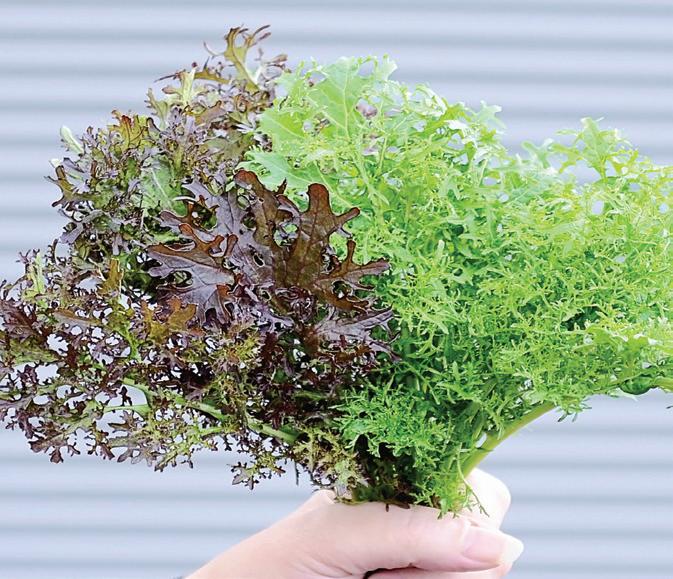
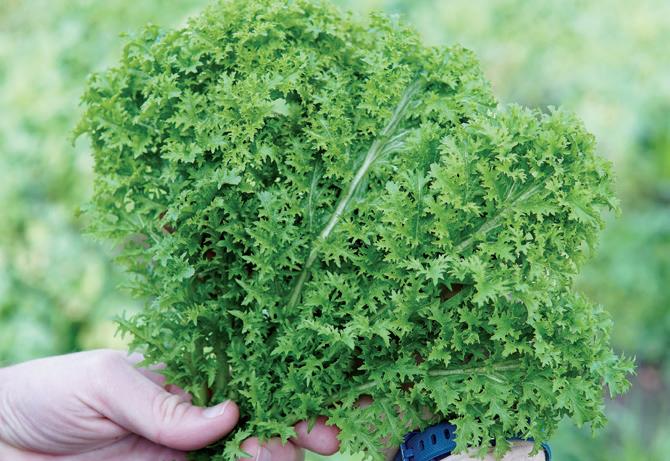
TAH TSAI TATSOI
(OP) B.rapa, Perviridis Group 40–50 days. This beautiful, dark green tatsoi forms a 6 inch rosette that is very mild and easy to grow. Sow seed spring through fall. Glossy, spoonshaped leaves are a treat in salads, stir-fries, or steamed.





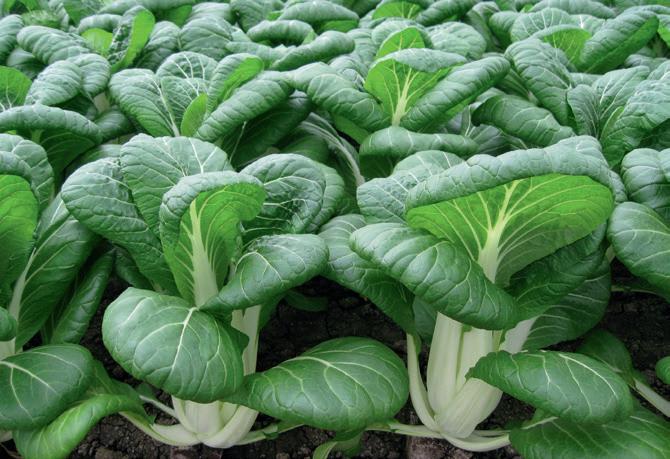
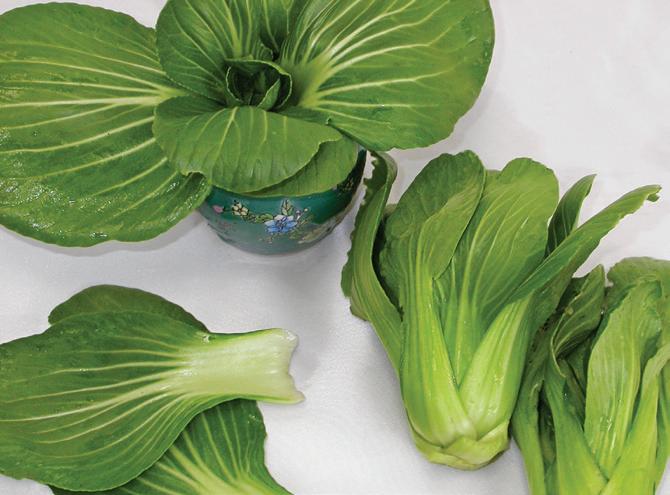
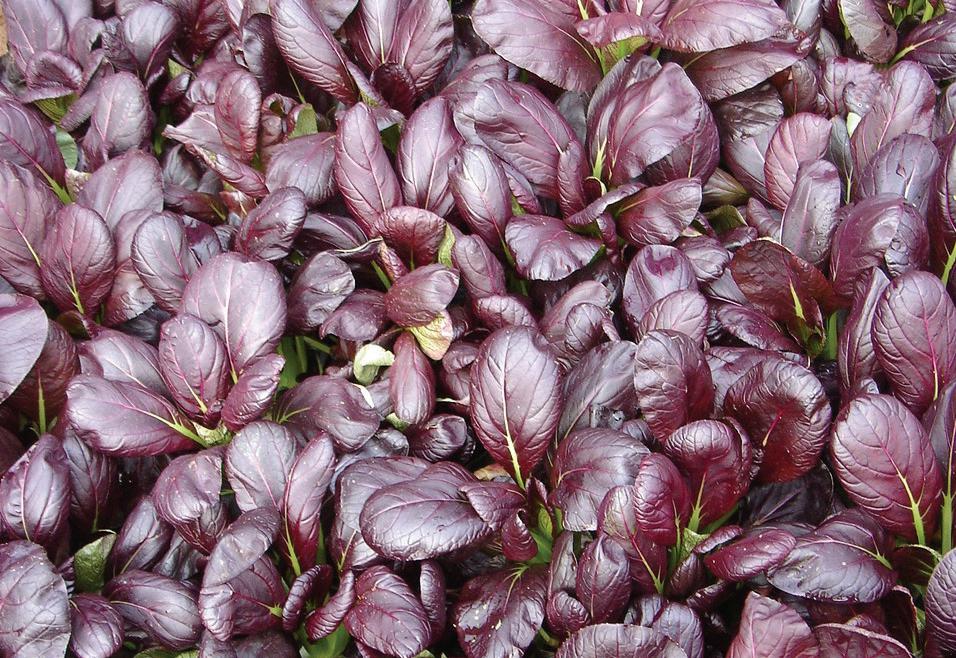
EMIKO
(F1) 60 days. For a uniform cabbage that’s tipburn resistant, early maturing, reluctant to bolt in the summer, and has good field holding, look no further than Emiko. This organic Chinese cabbage grows in an upright barrel-shape 10 inches tall and has a soothing light yellow heart. HR: F, PB.
OV595G EMIKO ORGANIC
Brassicarapa, Pekinensis Group
WA WA TSAI
(F1) 64 days. The earliest and most true mini Napa cabbage. Wa Wa Tsai reaches only 9 inches tall and 5 inches wide, has a barrel-shaped, dense head with a sweet, tender crunch. The uniform crops show good field holding for an extended harvest window. A great choice for single-serving and dense plantings in smaller garden spaces. Tolerant to tipburn. HR: PB.
BOPAK

(F1) 40 days. Bopak produces picture-perfect heads of baby pac choi. Allowed to grow, it will continue to rapidly develop into a compact, upright, full-sized plant with 8 inch tall heads that measure 4 inches across. The tender, fleshy leaves are crisp and flavorful with wide, glossy ivory stems topped with deep green. Bopak is remarkably bolt resistant and is the first pac choi to earn an AAS award. HR: PB.
BOPAK
CHING-CHIANG
(OP) 40 days. This early, dwarf pac choi is sturdier and stockier than most dwarf varieties. Ching-Chiang has smooth medium green leaves and thick petioles that have a wonderful mild flavor, are tender, and have very few strings. Ching-Chiang was bred to be tolerant of heat, rain, cold, and dampness, making it a great choice for early spring, late summer and fall planting.
OV578C
VIOLETTA
(F1) 30 days for baby greens, 50 days for heads. The striking appearance, crisp and sweet flavor, and high nutritional value of Violetta make it the perfect choice to use as a baby green or as a full-headed pac choi. The rich violet leaf tops contrast beautifully with green undersides and stems. A great source of vitamin A, calcium, and iron.
Seed
Culture
l Chinese cabbage is a cool season crop that performs best in spring and fall in a wide range of soil types
l Young plants exposed to temperature fluctuations can result in bolting
l Apply 1 cup of TSC's Complete fertilizer per 5 row feet, and 1 inch of compost
Direct Sowing
l Sow July—mid-August
Transplanting
l Start June to mid-July and set out when there are 4–5 true leaves
Insects & Diseases
l Common insects: flea and cucumber beetles, slugs, earwigs
l Insect control: Pyrethrin or row covers at planting, Cabbage Collars for slugs
l Disease prevention: 5–7 year crop rotation
Harvest & Storage
l Harvest heads as soon as mature to avoid bolting
l Store at 36°F and 95% relative humidity
Brassicarapa, Chinensis Group
Transplanting
l Start July‒August for transplanting August‒September
l Refer to the Chinese cabbage culture box
Garden Ninja
The weed eraser!
The thin, high tensile stainless steel blade slices effortlessly through packed soil, cutting weed roots off underground. Great for any garden bed, it is especially handy for weeding tight spaces like planters, window boxes, raised beds, and between rows. The large opening leaves soil in place. The efficient design allows you to cultivate near existing plants without damaging their roots. Total length is 12 inches.


Days to maturity are calculated from date of direct seeding.
Culture
l Onions are photoperiodic plants — they regulate their stages of growth by day length
l Onions will make top growth until the critical light duration is reached, then bulbing begins
l The amount of growth and development prior to bulbing will determine the bulb size
l Long-day varieties do well in northern states where summertime day length is between 14‒16 hours
l Short-day varieties do well in southern states and bulb when day length is 10‒12 hours; they won't get very large in northern states
l Dividing line between short-day and long-day varieties is generally accepted as 36° latitude, roughly along the Kansas/Oklahoma border
l Day-neutral and intermediate-day varieties start bulbing when day length is 12‒14 hours; can be successfully grown anywhere
l Onions prefer light, sandy, loamy soils
l Apply ¼–½ cup TSC's Complete fertilizer per 5 row feet, 1–2 inches below transplant or seed
l When regrowth begins in the spring, fertilize with 1 cup of TSC's complete fertilizer around the roots for each 10 row feet
Direct Sowing
l Thin to the strongest plant when 4–5 inches
Transplanting
l Sow up to 10–12 seeds in a 4–6 inch pot
l If tops reach over 5 inches before transplant, cut to 3 inches
l When planting out carefully separate the seedlings and place in a shallow trench
l Fill trench around seedlings and water in well Insects & Diseases
l Common insects: onion thrips and maggots
l Insect control: Pyrethrin, Predatory Nematodes (see page 55)
l Common diseases: Fusarium basal rot, pink root
l Disease prevention: 5–7 year crop rotation
Harvest & Storage
l For scallions: harvest when pencil size or larger, wash and trim roots, store in a bag at 36°F and 95% relative humidity
l As bulbs approach maturity, withhold water so protective paper can form
l After about half the tops have fallen, push over the remainder; wait about 1 week, then harvest
l Cure in a warm (75–80°F), shaded, well-ventilated location until outer skin and necks are dry, then trim tops, leaving one inch above the bulb
l Store in a cool, dry, well-ventilated area
l Check occasionally and immediately remove any sprouting or rotting onions
Sow from early spring to summer and even into the fall. July sowings can be harvested in the winter and early spring. Scallions are extremely cold tolerant.
NEW MARKSMAN
(OP) 41 days. A new interspecific salad onion that’s non-bulbing with reduced pungency. Dark green foliage, clean, easy-to-peel shanks, and delicious flavor add up to a winning salad onion. Marksman's well-developed root systems keep the strong plants clean and upright. An excellent selection for both spring and autumn slots.
ON555C MARKSMAN
RED BARON
(OP) 60 days. An extremely versatile red onion that maintains its vibrant burgundy color at all stages of growth. When planted in the summer, Red Baron can be harvested in the early fall as a scallion. When plants reach 12–14 inches tall, they will start forming small bulbs that are mild flavored and wonderful in salads or pickled. Long-day variety.
ON544C RED BARON
(OP) 55 days. This salad onion was bred for both spring and autumn cultivation. Ramrod has a deliciously bold flavor, bright white bulbs and strong, dark green leaves. Probably one of the most versatile scallions you could grow as it is also very winter hardy when fall planted for spring salads.
ON568C RAMROD
ON568ST RAMROD SEED TAPE
1 tape 3 tapes $6.95 $15.95
APACHE
(OP) 65 days. A delicious, mild-flavored salad onion with a vibrant purple base that colors up early in the season to add a bright and tasty splash to salads and sandwiches. Fall planted crops will grow slowly over the winter and eventually form a pink, elongated bulb that’s easy to peel.
ON569C APACHE

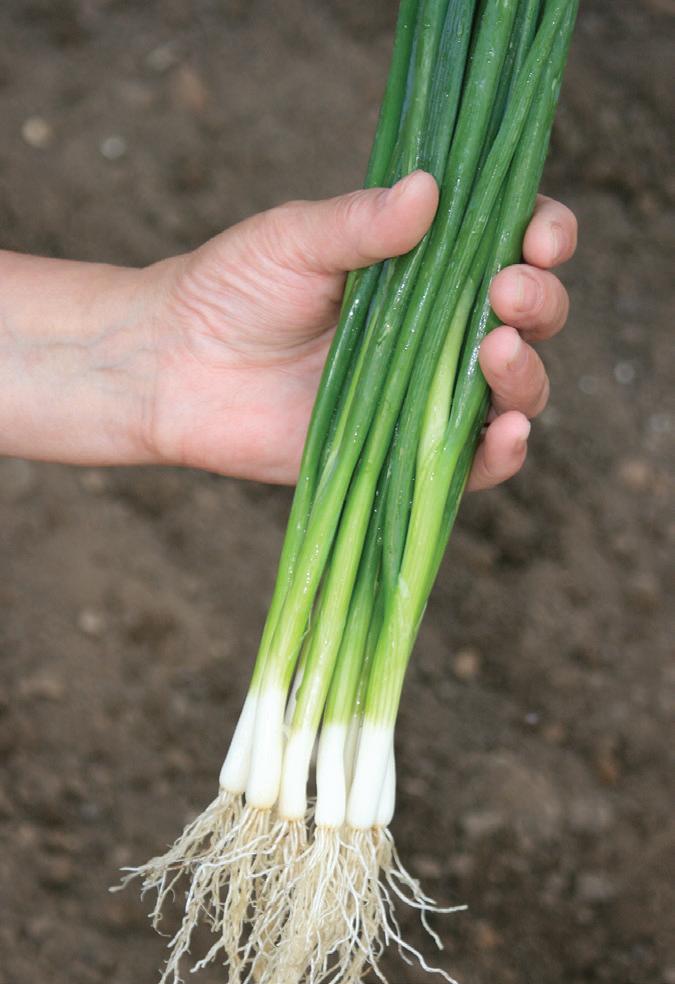

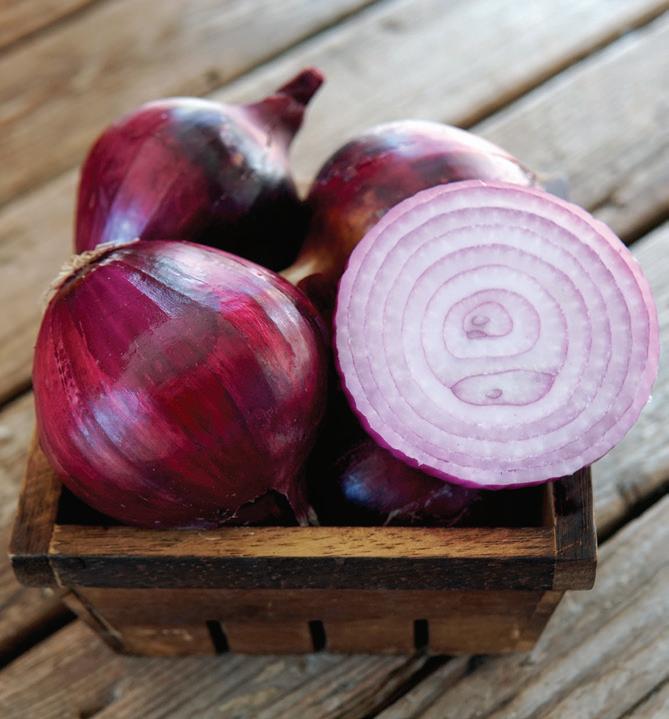


DeWit Dibber
Yourbestfriendwhenplanting. Whether you’re sowing seeds, planting garlic, or setting flower bulbs in the ground, this wooden dibber makes the work quick and precise. Constructed of solid ash with a sharp, brass tip, the dibber opens holes in the soil with a quick, pressand-spin motion. The tapered body makes proportionally wider holes with deeper depths, and engraved inch markings assure accurate planting. Overall length: 12 inches.

Sow seed at the beginning of August. Once they are large enough, around mid-October, transplant into the garden. You can harvest green onions until April. In May they will begin to bulb and will be ready to harvest as dried down bulbs by mid to late-June.
(F1) 250 days. Red onions add enticing color and the added benefit of elevated antioxidants to your cuisine, and with Red Spring’s wine-red shade it is one of the most attractive we’ve grown. It produces crops of uniform, round globes with glossy, tightly wrapped skin and colorful interiors. Our early June harvest lasted well into fall. Storage type. Intermediate, shortday variety. IR: F, PR.
ON562C RED SPRING
(F1) 230 days. A vigorous, large onion with firm bulbs and a mild flavor, Hi-Keeper is an essential staple for cool weather gardens. These very uniform globes have white flesh and smooth, golden tan skin. Exceptional performance even under less-than-ideal conditions and strong disease resistance mean reliable harvests especially in the Pacific Northwest. These superior onions also boast an extended shelf life. Storage type. Intermediate, short-day variety.
ON556C HI-KEEPER
(OP) 125 days when spring sown. When fall sown and allowed to overwinter, the round globes often attain a 5–6 inch diameter. For those of you in harsher climates, this onion can be spring sown. Start them early and transplant out as soon as the soil can be worked. The bulbs will be smaller, 2 ½–3 inches across, but they'll have the same sweet flavor. Plan to use quickly, they're not meant for long-term storage. Sweet type; stores 1–2 months. Long-day variety.
Allium cepa, Proliferum Group
Egyptian onions, also known as tree or walking onions, are very hardy perennials. These fascinating onions form several small bulbs underground, plus they produce clusters of reddish hazelnut-sized bulblets at the top of each seed stalk. Normal flowers do not occur.
Planting
Plant bulblets 5–6 inches apart, 1 inch deep, in rows spaced 12 inches apart.
Insects & Diseases
Refer to onion culture on page 33.
Harvest & Storage
Once Egyptian onions have established themselves, you can harvest both the bulbs at the base of the plant and the bulblets at the top of the stems. If left untended, you will understand the term "walking onion", as the onion stalks will bend down to the ground allowing the bulblets to take root by themselves. In more severe climates, the bulbs should be stored and replanted in the spring. Refer to onion culture on page 33 for curing and storage.
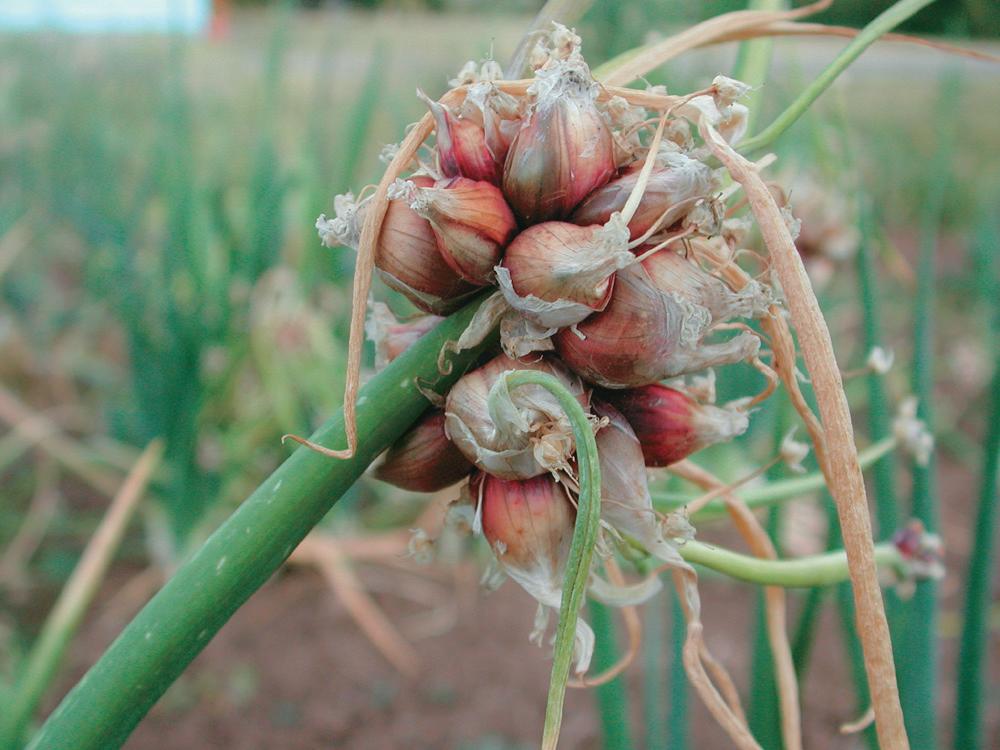

When you’re ready to harvest your onions and garlic, there’s no better way to store them than in these mesh bags. The bags provide air circulation, which is crucial for longterm storage. A bag holds 5 pounds of garlic or onions and measures 12 inches high by 10 inches wide. Drawstring closure.

EGYPTIAN WALKING
250 days, fall planted. These true Egyptian topsetting onions are a smaller relative of the Catawissa onion. The topsets are a distinctive red color. A prolific producer of delicious green onions that you can harvest twice a year. Approximately 10–20 bulblets per ounce, but this can vary based on seasonal conditions.
XG429C EGYPTIAN WALKING 1 oz $19.95
Walking onions are shipped only in the fall—September through mid-October, depending on the season. Order early for best availability. Sorry, not available to Idaho, US Territories, or Canada.
Days to maturity are calculated from the date of direct seeding.
Days to maturity are calculated from direct seeding date; subtract 20–25 days if transplanting. Culture
Seeding
l Parsley likes rich soil with lots of nitrogen
l Peas are a hardy cool-season crop that can be grown in a variety of soil types
l If the parsley bed was manured the previous fall, no additional fertilizer is needed
l Side dress plants with 1 cup of TSC's Complete fertilizer and ½ cup bone meal per 10 row feet
l Climbing varieties should be trellised
l If not: make a shallow furrow about 4 inches deep and band 1 cup per 5 row feet of blood meal or chicken manure at the bottom
NEW SIENNA
(OP) 63 days. Sienna is a superstar, proving to be the highest yielding shelling pea in our trials! Pea season can’t get here fast enough, but this amazing performer offers up a very fast crop of multiple, dark green pods per node on 18–24 inch vines. Open the blunt, 3 inch pods and enjoy the first, sweet, plump, green peas of the season! F 1–2, PM.
PE631C SIENNA
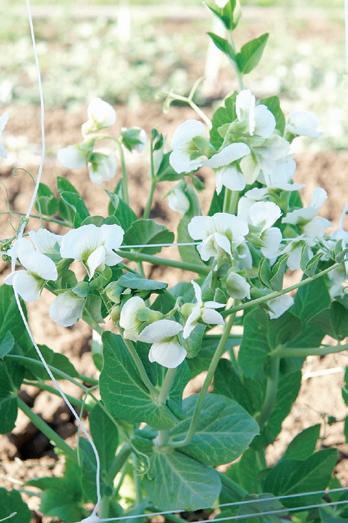

(OP) 70 days. Canoe packs more peas per pod than any other variety we’ve seen. Approximately a dozen delightfully sweet peas snuggle in each long, slightly curved, boat-shaped pod. The semi-leafless plants reach 30 inches and provide plentiful crops.
l Cover and fill in the furrow
l Most bush-type vines can be supported on a short trellis or allowed to grow as a mound
l Sow and cover seeds
l Environmental stress, such as prolonged hot weather or lack of moisture, will reduce yields
PE633C CANOE
l Savvy gardeners plant radish seed in the furrow with parsnips to help break the soil surface for the slower-growing parsnips
l Extend your harvest through multiple sowings
Direct Sowing
l Sow peas in July for a fall crop
Transplanting
l In mild climates you can overwinter

l Cool temps lead to slow and erratic germination
l Start seed (when??). Keep moist and follow the fertilizer and spacing tips above
Insects & Diseases
Insects & Diseases
l Common insects: pea aphid
l Insect control: Pyrethrin should be applied at seedling stage if leaf scalloping is observed
l Almost nonexistent in a healthy garden Harvest
l Cut individual sprigs as needed from the outside edges of the plants
(OP) 70 days. We can’t say enough good things about this variety. It’s a delightful heirloom with disease resistance, easy picking, and delicious, all-purpose crops. Pods reach 4 inches long and are filled with 9–11 plump, sweet and tender peas. The pods develop in pairs within easy reach at the top of the compact, 24 inch plants. DM, F.
PE628G GREEN ARROW ORGANIC
l For drying, cut all but the center growth
l Common diseases: Fusarium wilt (also called pea root rot), powdery and downy mildews, and pea enation mosaic virus (more common in Northwest and Northeast areas)
l Disease control: Zonix
l Disease prevention: 3–4 year crop rotation
l Quick dry the leaves in a food dehydrator, then store in an airtight container in the dark
Harvest & Storage
l For snap and shelling peas, start checking for maturity as soon as the pods begin to swell
l Harvest frequently to keep plants producing
l If left on the vine too long, the peas become starchy and the pods become tough
l Store at 36°F and at 95% relative humidity
SUGAR ANN


(OP) 60 days. Maestro allows multiple pickings, and it is easy to see which pods are ready since they tend to stick out on the plant. Long thin pods contain 8–9 medium-sized, sweet, tender peas. High yielding. Grows to 22 inches. PEMV, PM.
PE619C MAESTRO
(OP) 55 days. An early and easy-to-grow snap pea. The non-climbing, dwarf vines set an abundant harvest of 2 ½ inch long, medium-green pods with a sweet, effervescent flavor. Best of luck getting any to the kitchen since they might all be consumed fresh in the garden.
PE621G SUGAR ANN ORGANIC
CASCADIA (OP) 60 days. Another great variety bred in the Northwest. This enation-resistant snap pea comes to us from Dr. Jim Baggett at Oregon State University. The short, 32 inch vines yield an abundance of dark green 3 ½ inch pods that are thick, juicy, and very sweet. Makes a fabulous snack! PEMV, PM.
PE626G CASCADIA ORGANIC
1


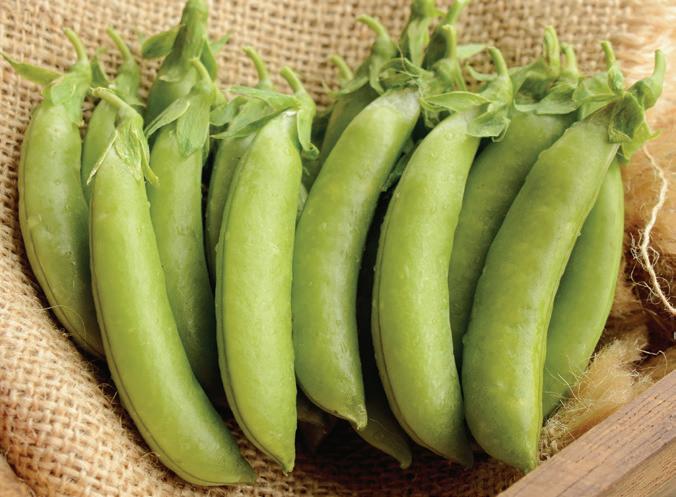
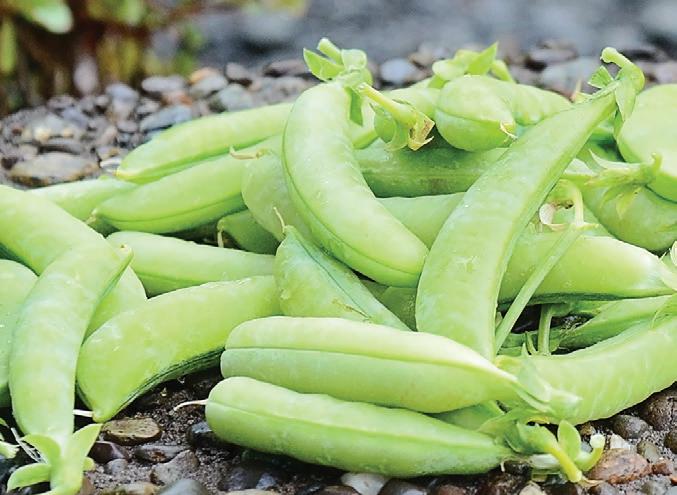


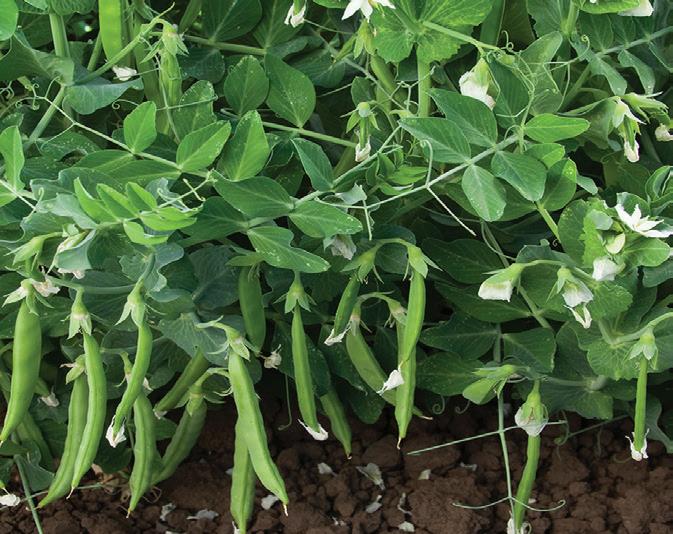
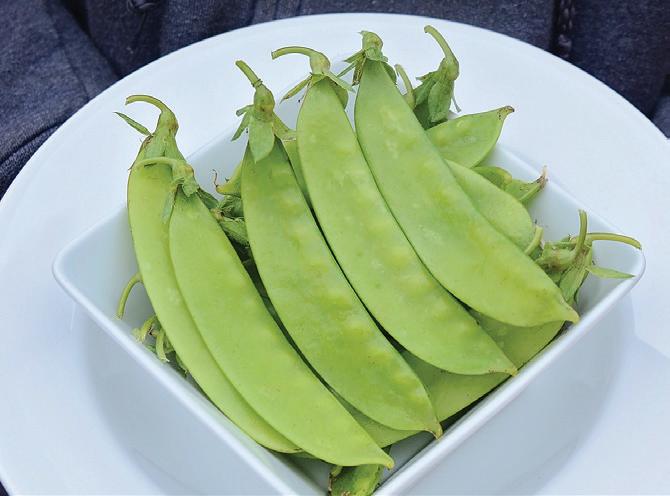

NEW LITTLE SNAPPEA CRUNCH
(OP) 60 days. Small crops in the garden, but huge flavor on the palate! Squeeze this one into your small garden or container planting, and you’ll be rewarded with early harvests of lots of lofty pea shoots for salads followed by sweet, fresh snap peas well into the warm weather. The compact plants yield smooth, crispy, refreshing pods on self-supporting plants that reach up to 30 inches tall.
PE627C LITTLE SNAPPEA CRUNCH
(OP) 70 days. This violet-podded snap pea is more than just a looker. At 3‒4 inches the pods are deliciously sweet, flavorful and most tender prior to plumping out fully. An absolutely spectacular addition to salads or veggie plates, the emerald green interior contrasts with the vibrantly colored pods. Climbing plants produce beautiful, bicolor, purple blooms and unique, extra vigorous tendrils to support vines that can stretch up to 7 feet tall.
PE625C SUGAR MAGNOLIA
SNAK HERO

(OP) 65 days. The form of a green bean and the flavor of a snap pea! Snak Hero is enticingly unique with its slender, round, 4 inch, stringless pods. Self-supporting plants reach 18–24 inches tall and keep producing their delectable peas with continued harvest. Enjoy Snak Hero lightly cooked, frozen, or fresh off the plant.
PE623C SNAK HERO
(OP) 60 days. Stand up and harvest peas with the help of this vigorous, climbing variety. Green Beauty’s lush, 6–8 foot tall vines produce a show of spectacular, purple blooms followed by delicious, 5 inch long, flattened pods. If you leave some pods on the plants, you’ll find they remain flavorful and crunchy even when the seeds begin to swell.
PE641C GREEN BEAUTY
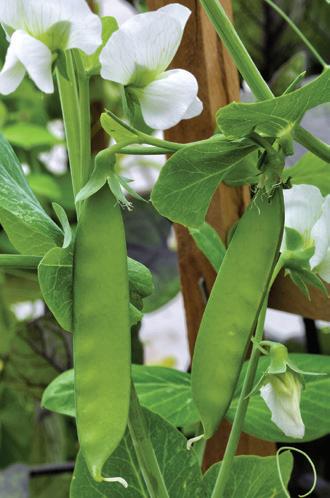

OREGON SUGAR POD II
(OP) 70 days. Easy-to-grow, non-climbing dwarf vines grow to approximately 30 inches tall and hold their pods up for easy picking. A prolific producer, the mild-flavored broad pods are 4–5 inches long and frequently set in doubles. An Oregon State University development, Oregon Sugar Pod II is highly disease resistant. Plant every few weeks for continuous production. DM, F, PEMV, PM. PE624C
LITTLE SNOWPEA WHITE
(OP) 30 days. Little Snowpea White starts producing its bright green, tender pods in just a few short weeks and continues its unwavering harvest for an extended season. The 40 inch tall plants produce crunchy pods that are delicious raw, steamed or stir-fried. PM.
PE639C
(OP) 50–54 days. Topping out at only 24 inches tall, this dwarf snow pea is as attractive as it is tasty. A prime candidate for container planting, Little Snowpea Purple’s sweet, refreshingly crisp pods are preceded by showy bicolor purple flowers.
PE640C LITTLE SNOWPEA PURPLE
(OP) 75‒80 days. This vigorous, tasty snow pea comes from Europe and is specifically for autumn sowing. A purple flowering variety, the plants grow to 6 feet, producing large pods. For overwintering plant late enough to establish smaller seedlings as they go into winter. Larger plants may be more susceptible to frost damage.
Key to Pea Disease Resistance/Tolerance
DM | Downy Mildew
F* | Fusarium Wilt
PEMV | Pea Enation Mosaic Virus
PM | Powdery Mildew
* Numbers indicate specific disease race.
 Green Beauty
Frieda Worlds
Little Snowpea White and Purple
Oregon Sugar Pod II
Green Beauty
Frieda Worlds
Little Snowpea White and Purple
Oregon Sugar Pod II
Raphanussativus
Days to maturity are calculated from date of direct seeding.
Culture
l Prepare the bed by working compost into the top 2–3 inches of soil
l Needs consistent soil moisture due to shallow root systems
l Dry or crowded conditions will slow growth and make roots hot or pithy
l The season may be extended from February through October by sowing in cold frames or using row covers
l For extended harvests plant every two weeks
Direct Sowing
l Sow mid-August‒mid-September
l Three grams will sow 7–8 row feet
l It is essential to thin promptly when they form 2 true leaves
Insects & Diseases
l See Brassica Insect Information on page 9
l Disease prevention: 5–7 year crop rotation
Harvest & Storage
l Harvest while still young, before splitting, and remove tops before storing
l Let a few plants bolt and make a seed pod— green pods have a crunchy, mild radish flavor
l Store at 36°F and 100% relative humidity
(F1) 28 days. We are astounded by how well this radish holds in the field, resisting pithiness even in the heat of summer. Crunchy Crimson sums up these roots perfectly; they’re a gorgeous red outside with pure white flesh inside that's crisp and juicy. The uniform roots are prime at an egg-shaped 1 ½ by 1 ¾ inches and have strong tops for easy harvest.
RD761C CRUNCHY CRIMSON
3 grams 1 oz 7 grams
$4.35 $5.65 $8.85
(F1) 60 days. It’s easy to see why watermelontype radishes are all the rage. They are by far the prettiest variety we’ve grown. The sweet, white roots have brilliant fuchsia-colored flesh with light pink streaks radiating from the center, earning its stellar name. Best planted in early spring or fall.
RD756C
ROXANNE

(F1) 25 days. This outstanding radish produces impeccably uniform roots with cardinal red skin and immaculate white interiors. The 1–1 ¼ inch orbs have crisp flesh that is snappy and tasty. Roxanne’s ability to retain its good flavor and texture even at larger sizes, along with its proven performance across the country, has helped it earn an AAS award.
RD757C ROXANNE
RUNDER SCHWARZER WINTER
(OP) 45–50 days. Black winter radish or Munich beer radish. This radish’s black skin contrasts beautifully with its pure white flesh. While visually appealing it also has a satisfying spicy flavor. Stores equally well in the ground or in the root cellar.
RD745C RUNDER SCHWARZER WINTER
RD745G RUNDER SCHWARZER WINTER ORGANIC

(F1) 40‒45 days. These little bundles of joy won us over at our AAS trials, and the other judges agreed. A pleasure to behold, the 3 inch, elongated roots have a brilliant violet exterior and striking pink flesh that’s streaked with purple. Equally appealing on the tongue, Sweet Baby packs a lot of crisp, juicy flavor that starts out sweet and ends with a refreshing hint of spice.
OV587C SWEET BABY
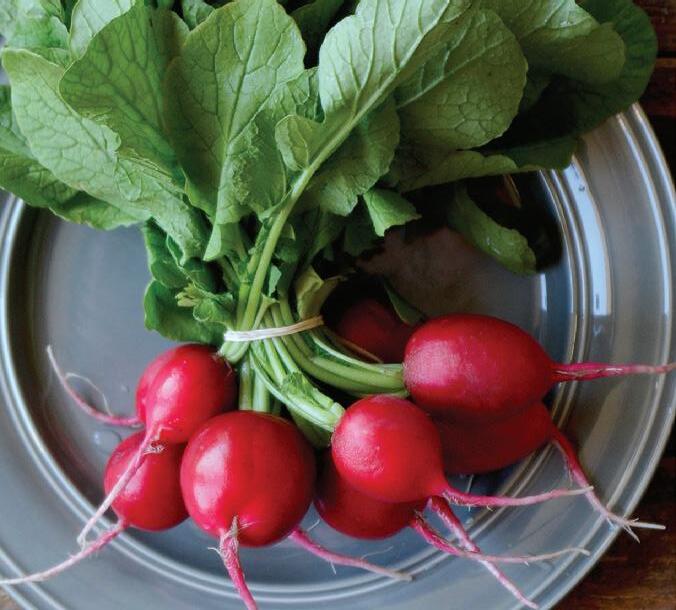
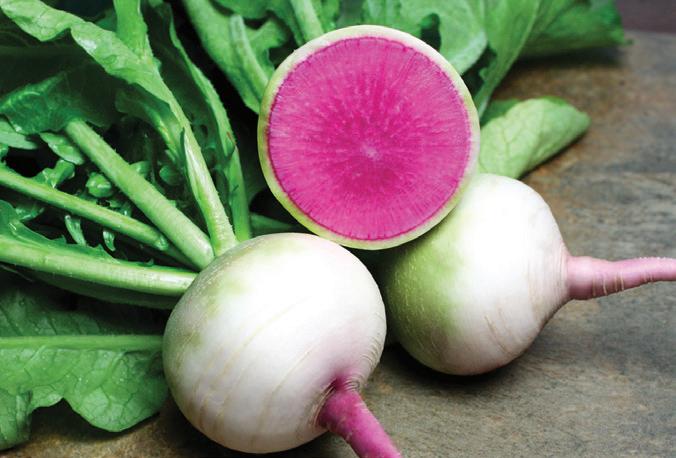

MINOWASE SUMMER CROSS NO. 3 (F1) 50 days. The 1 ¾ inch wide, 8–10 inch long uniform roots are white inside and out, super mild, sweet and juicy. For a change of pace, try a salad made with equal amounts of thinly sliced Minowase radishes, bulb fennel and chopped parsley. Toss with lemon juice, olive oil and grated Parmesan cheese. Best sown from June through early August.
OV581C MINOWASE SUMMER CROSS NO. 3
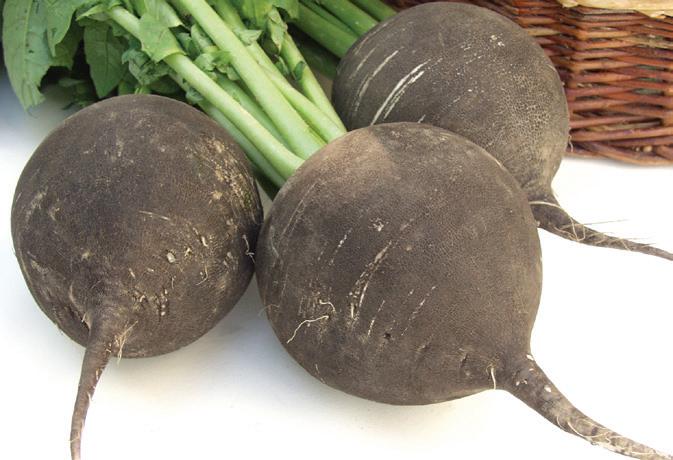

 Roxanne
Runder Schwarzer Winter
Roxanne
Runder Schwarzer Winter



WARRIOR
(F1) 120 days. Creamy, sweet parsnips are among the best gifts of the cool-weather garden, and Warrior has won a place on our table! These shapely roots reach 11 inches long with smooth, fine, white skin and a shallow, clean crown. Robust foliage helps fill out the roots evenly with little to no thin tail. HR: BC.
PN655C WARRIOR
GLADIATOR
(F1) 110 days. You’ll be impressed from the start with Gladiator’s quick germination and vigorous early growth. The vitamin-rich, creamcolored roots have a clean parsnipy sweetness that makes it the most flavor-packed parsnip we’ve had the pleasure to eat. The smooth, tapered roots reach 7 inches when they’re ready for the kitchen. HR: BC.
PN650C GLADIATOR
Marian NEW MARIAN (OP) 85–95 days. The yellow-fleshed, purpletopped roots can grow as large as 8 inches, are fine flavored, and good keepers. Marian is club root resistant, highly uniform, and vigorous. Its short, wide leaves allow closer spacing.
RU762G MARIAN ORGANIC



Brassicarapa
Turnips are grown for both greens and roots.
TOKYO SILKY SWEET
(F1) 45 days. Smooth and silky texture, snappy flesh bursting with sweet juicy flavor, this is the very best salad turnip you can grow. With squat globe-shaped roots 1 ½ inches long and 2 ¼ inches wide, Tokyo Silky Sweet performs better in hot weather than Hakurei turnips, and it will rock your world come lunchtime.
TR983C TOKYO SILKY SWEET
(OP) 45–65 days. Reminiscent of the summer sun, Golden Ball is truly an exceptional turnip. The 3–4 inch roots are perfectly-shaped amber, elongated globes that have delicate-grained, meaty flesh that’s never woody. The flavor is sweet, mellow and smooth. For an outstanding, lustrous dish, try them mashed with butter and shallots. The roots grow quickly and keep well.
Days to maturity are calculated from date of direct seeding.
Culture l Refer to carrot culture on page 14
Key to Parsnip Disease Resistance/Tolerance
HR indicates high resistance. IR indicates intermediate resistance. BC | Black Canker
Days to maturity are calculated from direct
ing date; subtract 20–25
Days to maturity are calculated from date of direct seeding.
Culture
l Rutabagas and turnips can tolerate a range of soil types with a slightly acidic pH of 6.0‒7.0
l Work in one cup of TSC's Complete fertilizer per 10 row feet
Direct Sowing
l Sow turnips July‒early-September
l Sow rutabagas in July
l It is essential to thin promptly when they form 2 true leaves
Insects & Diseases
l See Brassica Insect Information on page 9
l Disease prevention: 5–7 year crop rotation
Harvest & Storage
l Pick early; roots are sweetest when small
l Turnip greens can be picked when young
l Both root crops are best stored at 36°F and 95% relative humidity
(OP) 55 days. This turnip is bright purple on top and creamy white below. Nearly round, the smooth roots with a white interior grow to 5 inches across. They are best harvested at 2–3 inches. This carefully selected mild, sweet strain will add substance to salads.
(F1) 30 days. A vigorous and dependable spinach, with uniform oval leaves, 3 ¾ inches long and 3 inches wide on upright stems. Easy to hand-harvest on the fly, Tribute has no bitterness and a pleasantly smooth texture, making it a flexible ingredient for any meal. HR: DM 1‒12, 14, 16.
SP793C TRIBUTE
Days to maturity are calculated from date of direct seeding.
Culture
l Optimum soil pH range is 6.5‒7.5
l Spinach grows best during cooler weather of early spring and fall
l Soil temperature above 80°F can cause erratic germination
l Bolting is caused by rising temperatures, day length and water stress; see specific varieties for bolt resistance
l Apply ½ cup of TSC's Complete fertilizer per 5 row feet, and 1 inch of compost
Direct Sowing
l Sow July—August for a fall crop
l Sow late-August for an overwintering crop
l For baby spinach sow 20–25 seeds per foot in a 2 inch wide furrow, in rows 6 inches apart, thin to 1 inch
Insects & Diseases
l Common Insects: spinach leaf miners
l Insect control: spray eggs on underside of leaves with Pyrethrin or destroy any affected leaves and keep the surrounding area weeded
l Common diseases: see chart on this page
l Disease prevention: plant in fertile soil and use a 3–4 year crop rotation
Harvest & Storage
l For baby greens, harvest at 3–4 inches
l Individual leaves may be harvested anytime
l Store at 36°F and 95% relative humidity
Key to Spinach Disease Resistance/Tolerance
HR indicates high resistance.
IR indicates intermediate resistance.
DM* | Downy Mildew
* Numbers indicate specific disease race.

(F1) 25‒30 days. Here’s a spinach that tops the charts in flavor, disease-resistance, uniformity and quality. If you love spinach but struggle with growing a good crop, Lakeside is worth a try, since it impressed us with how well it performed in less-than-ideal conditions. Undaunted by the compromised location in the trial field, it produced healthy plants 16 inches wide and 6 inches tall, loaded with great-tasting greens. HR: DM 1‒11. IR: DM 12‒14.
SP780C LAKESIDE 5
(F1) 40 days. A superior spinach for tender, succulent babyleaf crops. Tundra produces glossy dark green, semi-savoyed, oval leaves that are eye catching and tasty. The upright plant habit and stem length make harvest clean and easy. Add the disease resistance, and you’ve got a stellar crop of hearty greens. An Acadia type. IR: DM 1–13, 15–16.
SP773C TUNDRA
RED TABBY
(F1) 34 days. A very spirited spinach with smooth, dark green, oval leaves and a highlight of magenta veins and stems. Superb disease resistance and improved tolerance to bolting means Red Tabby excels in the garden for harvests of lots of tasty, attractive greens. HR: DM 1–9, 11–13. IR: DM 10.
SP772C RED TABBY
(OP) 45 days. A special strain bred specifically for late summer and fall seeding for a crop in early spring. The large dark green leaves are smooth, semi-savoyed and flavorful. Remarkably cold hardy, and stands well in all but the worst weather we experience here in the Northwest.
SP785C GIANT WINTER
(F1) 38 days. Palco is adaptable to planting in both cool and warm seasons. Versatile for harvest as young, baby greens, or allowed to attain its full size. Bolt- and disease-resistant plants hold well in the field without flowering or succumbing to mildew.
HR: DM 1–5, 8–9, 11–12, 14.
SP789G PALCO ORGANIC
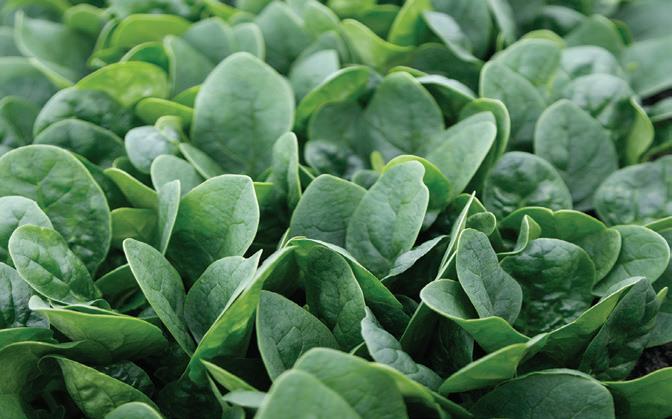


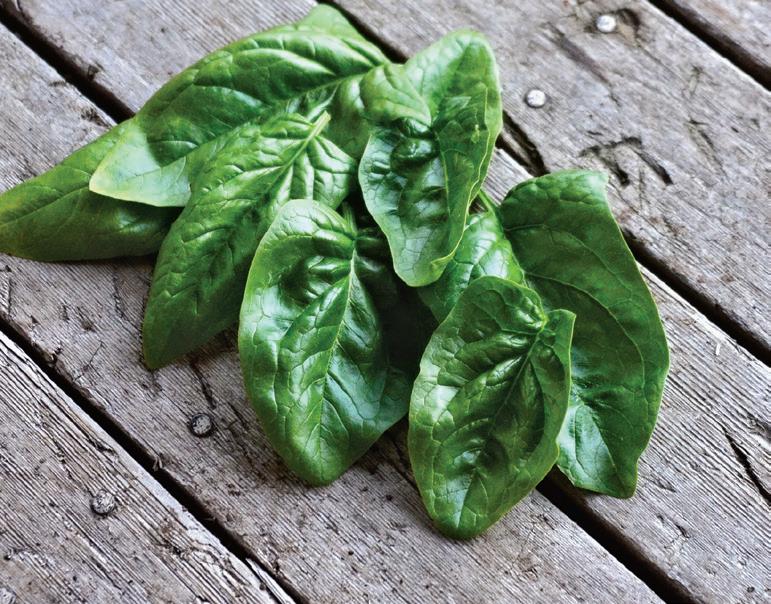


(F1) 45 days. Probably the best and most productive dark green plain leaf spinach for year-round sowing and harvests. Within its class, Olympia is slower to bolt and displays better eating quality than others. Typically upright, it grows to 10 inches. DM 1–3, 5, 8–9, 11–12, 14.
SP778C OLYMPIA
 Tundra
Olympia
Palco
Tundra
Olympia
Palco


(OP) 26 days to baby leaf, 50 days to full size. A real head-turner with glowing red stems and vibrant crimson veining. As a baby leaf, the stems contrast beautifully with the medium green, rounded leaves. Allow the plants to develop fully, and you’ll enjoy heavy harvests of uniform, savoyed leaves with luminous stems and veins. Upright plants are vigorous and productive.

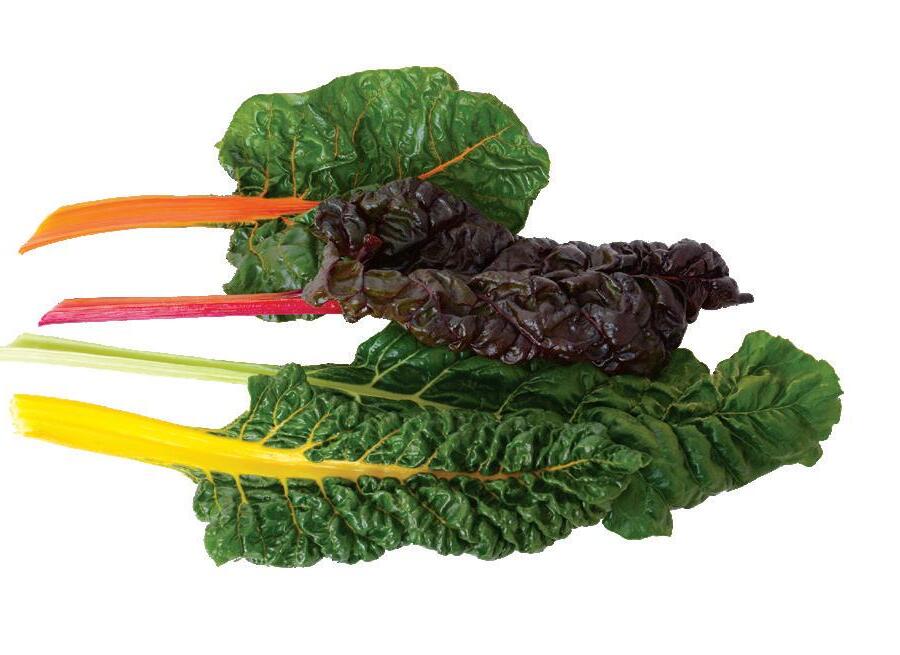
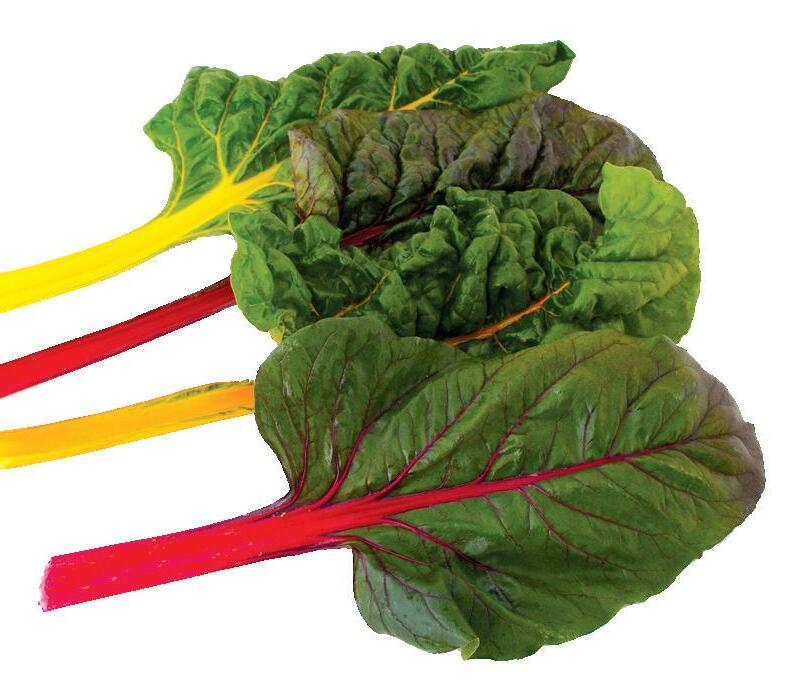
(OP) 50 days. Lyon proved to be one of the best tasting Swiss chards in our trials. The glowing, lime-green leaf color contrasts nicely with other varieties. The lush plants have thick leaves up to 9 ½ inches wide and over 1 foot long with the color of new spring growth and the delicate, tender texture to match. Brilliant stalks are pure white and a broad, 1 inch wide. With its mild flavor, Lyon makes a good stand-in for spinach.
SW852C LYON

(OP) 60 days. Individual stems are red, yellow, orange, gold, or white, and together they create a visual feast in your ornamental beds, in your vegetable garden, and at your dinner table. Bright Lights has lightly savoyed leaves, some are burgundy and some are green. Very mild flavors. These 20 inch wonders are a colorful accent for any meal!
SW853C BRIGHT
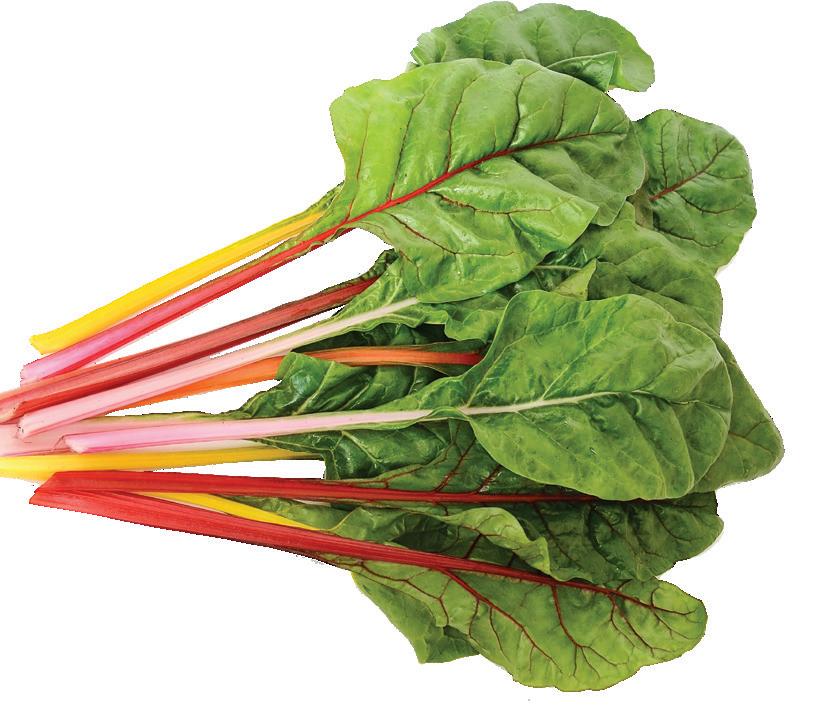
(OP) 60 days. Plug into the health benefits of Swiss chard with this electrifying 220 volt blend of intense colors. As exciting growing and viewing in the garden as gracing your dinner table. Our exclusive mix includes the neon range of 3-phase red, fuse-melt pink, hot-stick yellow, and glare-burst orange.

SW857C ELECTRIC NEON
(OP) 60 days. Picturesque and delicious, this Australian heirloom boasts a day-glow mix of red, orange, yellow, pink and white. Uniform, sturdy plants grow upright providing clean, unblemished harvests of thick, juicy, tender stalks and succulent leaves. This blend of 5 varieties is stunning both in the garden and at the table.
SW861G
(F1) 23‒35 days. This fast-growing, uniform chard is absolutely our favorite for tender, baby leaf production. Fire Fresh sports attractive oval, medium-dark green leaves with appealing contrast to ruby stems and veins. Upright plants show good disease resistance.
SW860C FIRE FRESH
Betavulgaris, Cicla Group
Days to maturity are calculated from date of direct seeding.
Culture
l Swiss chard grows best in cool weather and overwinters in mild climates
l Apply 1 cup of TSC's Complete fertilizer per 5 row feet, and 1 inch of compost
l Cover beds with row cover if temperatures are cool
Direct Sowing
l Sow July‒early-August
l Thin when plants reach a height of 3 inches
Transplanting
l Start June‒July for transplanting July‒August
Insects & Diseases
l Common insects: aphids, leaf miners, flea beetles, and leaf hoppers
l Insect control: pick off affected leaves and check for eggs—spray with Pyrethrin, use silver mulch
l Common diseases: leaf spot
l Disease prevention: 3–4 year crop rotation, remove debris
Harvest & Storage
l Harvest leaves from the outside, taking care not to damage the growing point
l Store at 36°F and 95% relative humidity
(OP) 53‒63 days. Standing alone as the only two-toned Swiss chard, Peppermint's clean white stems sport blazing fuchsia streaks, making it not only one of our most eye-catching varieties, but its coloration also reveals a potent antioxidant content. Topped off with wide, rumpled, lustrous, green leaves, Peppermint provides ample harvests of wholesome fresh greens for both warm and cool weather plantings.
SW856C PEPPERMINT
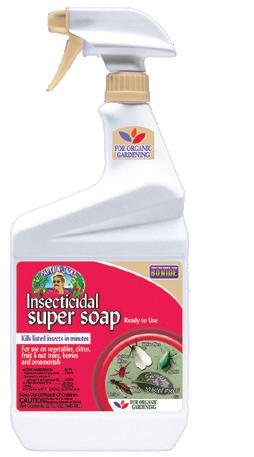
Treating insect infestations on plants with soap applications is an effective and non-toxic solution for both indoor and outdoor plants. Insecticidal soap works mechanically by coating the insects with a layer of fatty acid (soap) and smothering the pest. Approved for organic gardening by the USDA’s National Organic Program (NOP). See TerritorialSeed.com for full description. ZIN545* 1 quart $15.95
SHIPPING WEIGHT 4 POUNDS
‘Plant’ these mats in your garden and watch the color unfold as spring turns to summer. Easier than making a bed, lay one of these convenient sheets out, cover with a light layer of sifted compost or soil, water, and you'll have the perfect garden in no time!

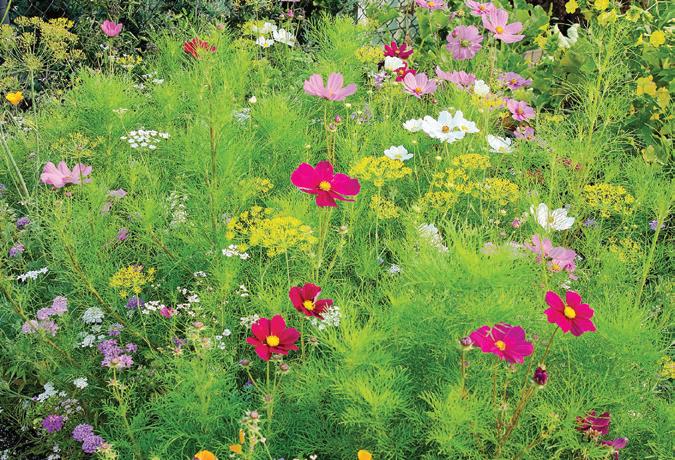
BENEFICIAL BUG MIX
(A & P) Let nature help keep the bad bugs in your garden controlled! This incredible 18 species mix will attract and keep lady beetles, lacewings, trichogramma wasps and more to your garden where they can prey on the bad bugs in and around your home environment.
SM201C BENEFICIAL BUG MIX
18" x 10' 18" x 25'
$22.95 $40.95
BEE FEED MIX
(A & P) Keep the bees fed with this colorful blend of 20 types of flowers specially selected for their nectar and pollen producing ability. Bees cannot resist this premium mix.


(OP/F1) A salad-lover’s dream come true! Enjoy a colorful blend of loose-leaf lettuces, mixed mustards, arugula, spinach, red radish and salad turnips.
SM205C SALAD LOVER'S
We’ve selected a collection of our favorite herb varieties and put them into handy, easy to plant, biodegradable disks. Each 10 cm disk is sized just right to conveniently plant in a 4 inch pot. For windowsill, patio and even herb garden planting, lay the disk on the surface of the moistened planting medium and cover lightly. Water and watch your herbs grow. These disks are a great gift or a perfect child's gardening project. See our website for more seed disk options.
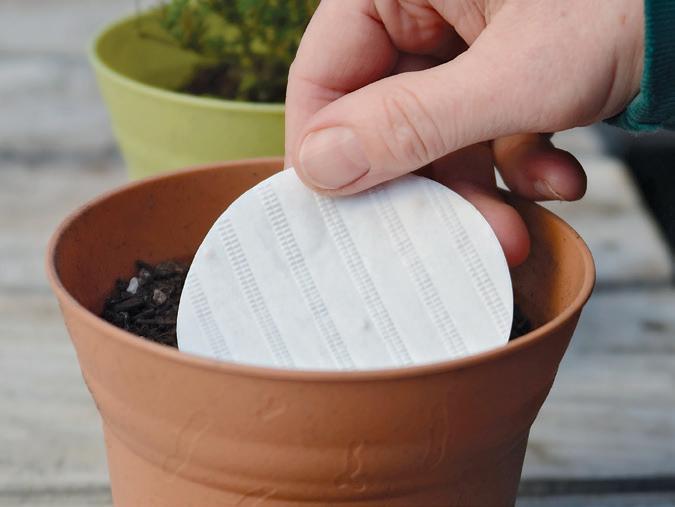
A high yielding variety with dark green leaves and a sturdy, upright habit.
HR1110SD CHIVES
An excellent, uniform, vigorous cilantro with dark green leaves. Slow to bolt.
HR0020SD CORIANDER
disks
Perfectly straight rows of precisely spaced crops are at your fingertips with seed tape. No more having to thin seedlings! This biodegradable tape will plant a row 5 meters (16 feet, 5 inches) long. Simply lay it in a furrow and cover with a light layer of sifted compost or soil, water and wait. Save yourself a heap of planting time with these popular vegetable and herb staples. See our website for more seed tape options and the key to our disease resistances.
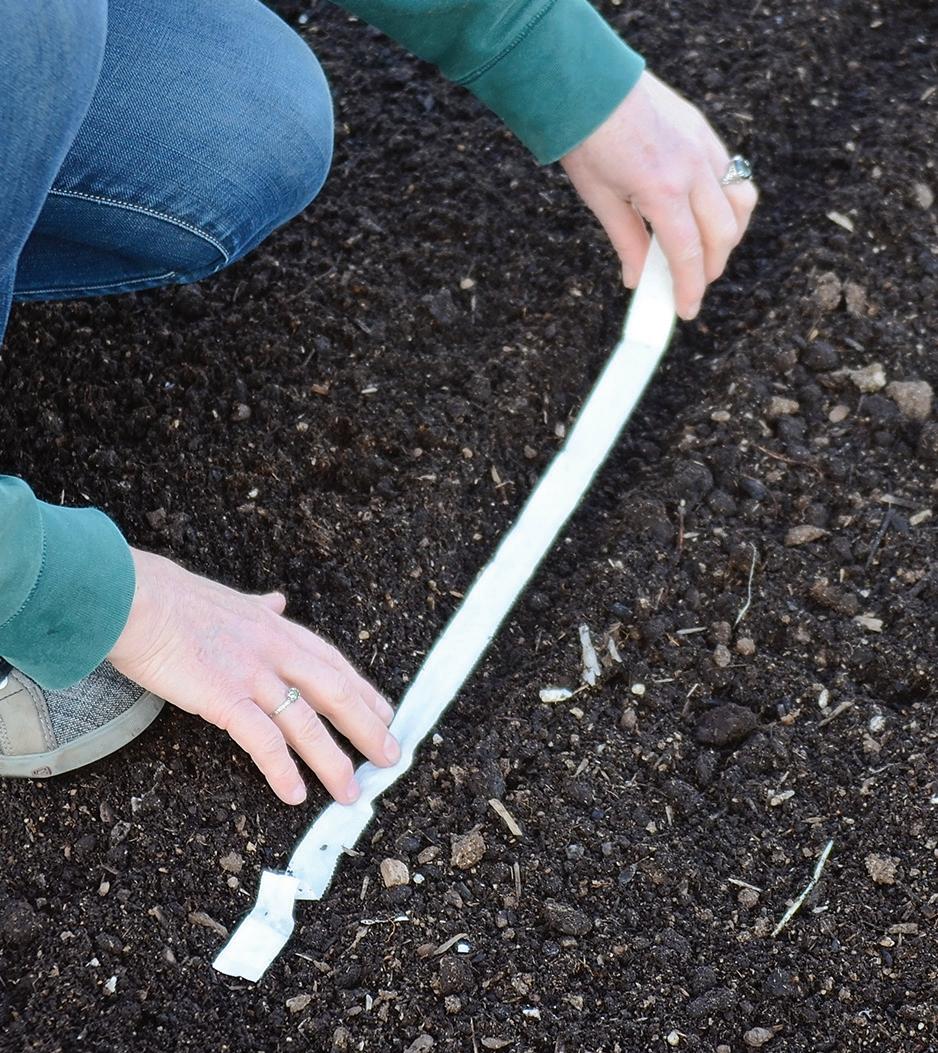
(OP) 50 days. A luscious butterhead with medium green leaves and heavy heads. Resists bolting. HR: DM 1–17, 19, 21, 23, Nr. IR: LMV.
LT010ST SYLVESTA LETTUCE
1 tape 3 tapes
$6.95 $15.95
(OP) 60 days. A versatile salad onion with long white stems and bright green tops. Sow every 2 weeks from March through autumn for a continual harvest. Can also be overwintered.
ON549ST WHITE LISBON ONION 1 tape 3 tapes
$6.95 $15.95

disks
(OP) 30 days. A gourmet combination of flavors, textures, and colors for fresh, delicious salads. Includes kale, 3 leaf lettuces, corn salad and mizuna mustard.
A collection of all six of our herb disks: arugula, Sweet basil, chives, coriander, parsley, and German/Winter thyme.
GUMBALL RADISH BLEND
(OP) 28 days. Produce a blend of purple, yellow and white-skinned radishes with this unique seed tape. Contains white-fleshed radishes including Zlata, a yellow-skinned variety and Viola, one of our favorite purple-skinned type.
RD030ST GUMBALL RADISH BLEND
1 tape 3 tapes
$7.95 $16.95
Gumball Radish BlendSome like it hot, some not. That goes for flowers, and those that prefer cooler temperatures will benefit from getting a good start in chilly weather. Hardy annuals fit in this category and can be sown in either late summer/early fall or early spring while the threat of frost is still present. Allowing these plants to germinate and establish when the temperatures are low give them a strong start, and often times they’ll reward you with fresh flowers earlier than spring-sown—a true gift when spring fever hits! We grow our late-summer sowings of flowers in an unheated high tunnel and enjoy a variety of blooms throughout the winter and into spring. For gardeners in zones 7 and warmer, sowing your seed in late summer/early fall will allow the seed to germinate and grow slowly over the winter. Once the days lengthen, those plants will be ready to take off! In cooler regions, a coldframe helps protect overwintered flowers, or simply sow the seed 6-8 weeks prior to your final frost date in the spring. Allow the seedlings to harden off for several days before transplanting, and watch their show!
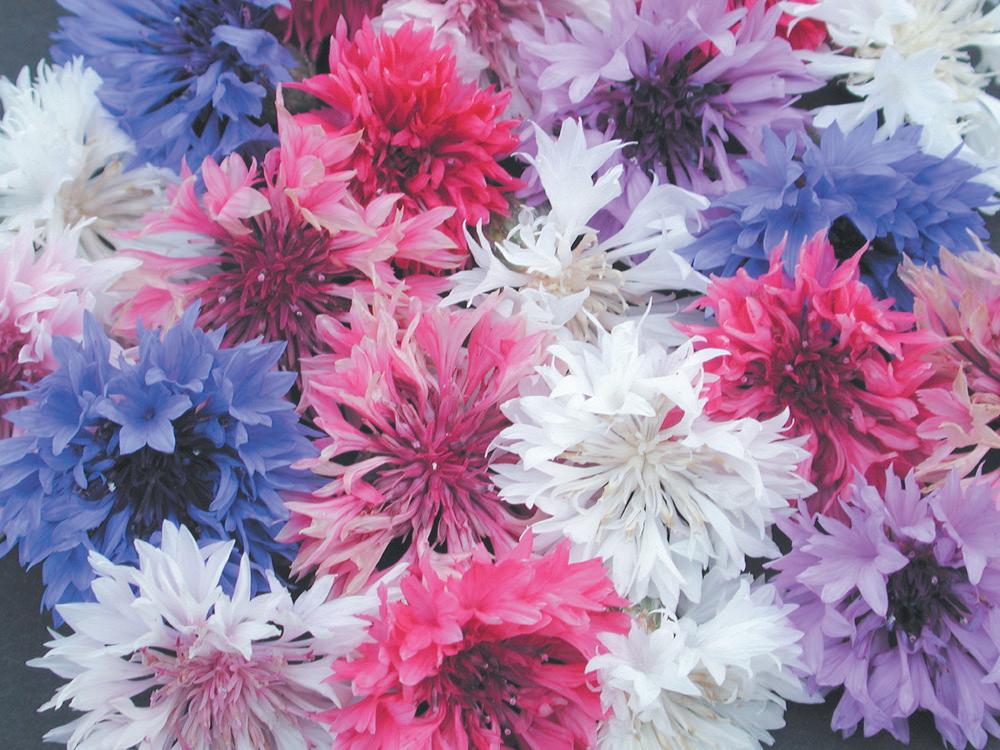




(A) Centaureacyanus The most care-free of cool-weather flowers! This delightful mix of blue, pink, wine-red and white blooms on 2‒3 foot stems are exceptional early color and cut flowers. Plant with California poppies for showstopping displays. Approximately 200 seeds per gram. Germination code: (4)
FL2199C BACHELOR BUTTON MIX

(A) Calendula officinalis For a fail-safe flower, there’s nothing better than a calendula. A throw-and-grow type, these bigseeded flowers can go directly in the ground from late summer until early spring and provide a beautiful blend of sunny colors in spring and summer. Big, double blooms in a blend of creamy ivory, lemon and apricot shades will brighten the landscape and vase. Deadhead for more prolific flowers, but allow some blooms to go to seed. A wonderful naturalizer, Cantaloupe will readily re-seed. Here in our zone 8 gardens, it’s not unusual to find sporadic flowers throughout the winter. Approximately 100 seeds per gram. Germination code: (1) or (4)
FL2260C CANTALOUPE

(A) Calendula officinalis Neon is a true showstopper in our flower trials. The ultra-double flowers glow with a brilliant orange, edged in burgundy. The 25–27 inch tall plants boast 1 ½–2 inch blooms and provide non-stop color from spring through the first light frosts. Approximately 150 seeds per gram. Germination code: (1) or (4)
FL2256C


(A) Papaversomniferum
Here’s one for the records! Our overwintered poppy trials were indisputably overshadowed by Amorpha. At over 6 feet tall, these plants put on a stupendous display topped with colossal single flowers in ivory with shredded pink edges. Typically short lived, the blooms make a dramatic show, lifting their bowed heads, cracking open, unfurling into full splendor, and dropping petals to produce enormous, long-lasting rattlepods. A sight to behold! Spring-sown plants typically reach 2–3 feet tall. Approximately 2,500 seeds per gram. Germination code: (4)
FL3068G AMORPHA ORGANIC

(A) Papaversomniferum
We get shivers down our backs from this haunting bloom. Huge, silky flowers in burgundy-black are ravishing in the garden and vase. For cut flowers, harvest when the petals are half open and sear the end with a flame immediately after cutting. Left on the plant, After Midnight produces 2 inch rattlepods that last indefinitely in dried arrangements, or break them open to enjoy the delicious breadseeds inside. Approximately 2,500 seeds per gram. Germination code: (4)
FL3069G AFTER MIDNIGHT ORGANIC

(A) Eschscholzia californica By far one of the brightest, most irresistible of the California poppies that we’ve grown. Absolutely bursting with vibrant, sugary colors. Sweet and tempting semi-double blooms have splashes of bubble gum pink, lemon yellow and raspberry red against feathery, silver-blue foliage. Height: 8–12 inches. Approximately 600 seeds per gram. Germination code: (4)
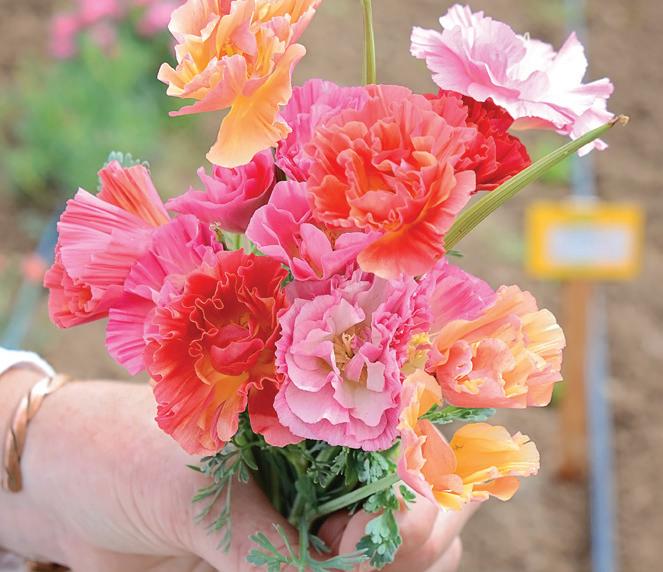 Cantaloupe
Cantaloupe

(A) Eschscholzia californica This mix is the fanciest of the California poppies. The flowers are semi-double with fluted petals and a silky, chiffon-like texture. The finely divided, gray-green foliage sets off a summer-long display of shimmering, 3-inch, jewel-tone blooms. The vivid colors range from sunny yellows and tangerines to magenta. Height: 10–14 inches. Approximately 600 seeds per gram. Germination code: (4)

(A) Lathyrusodoratus These heavenly scented, colorful flowers are a must for the garden. Twining vines scramble up fences, trellises and arbors for a sweetly fragranced display in the cooler months. Big flowers in a blend of crimson, lavender, salmon, deep rose, blue and pinks grace the plants and perfume the home. Plant your sweet pea seed at the same time as garden peas, and enjoy multiple flushes of these fragrant blooms. Here in the Pacific Northwest, we plant them both in late summer for a September crop, fall for an early spring crop, and February for an early summer crop. Approximately 12 seeds per gram. Germination code: (4)
FL3320C MAMMOTH
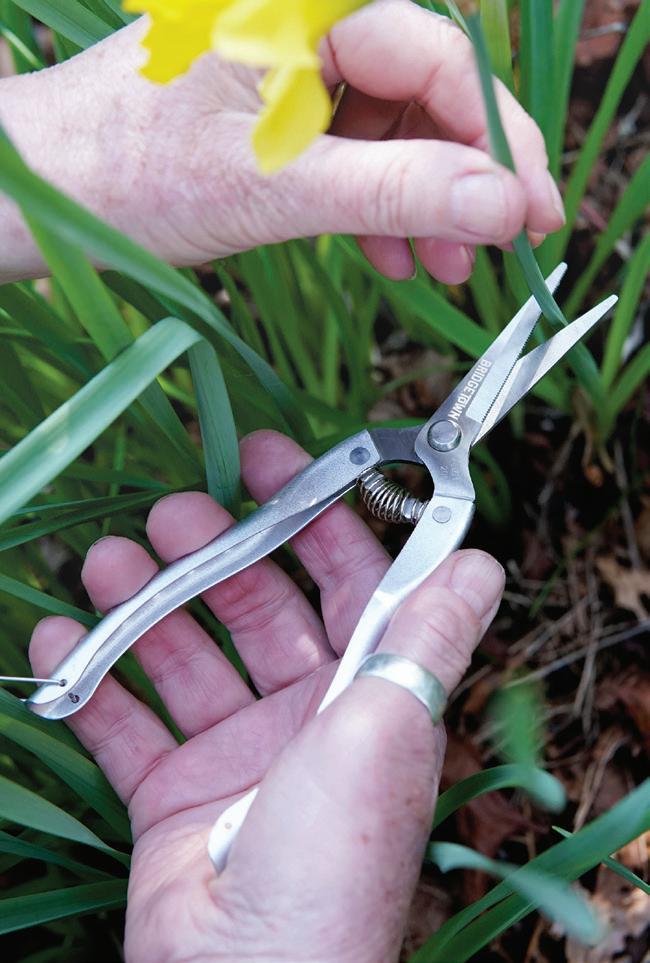
Stainless Steel Snips
Ourfavoritesnipforthegarden. Don’t let the lightweight design fool you, these sturdy, sharp snips are a beast when it comes to harvesting and trimming. The corrosion-resistant, 2 inch, straight, stainless steel blades glide through flower stems, veggie leaves and small branches. Comfortable to use, the spring-action handles nestle in your hands for hours of pain-free use. Overall length: 7 ½ inches. Comes complete with a spare spring. ZTO901 $16.95

(A) Lathyrusodoratus This heirloom collection is a blend of heat resistant varieties with very fragrant flowers. Old Spice Mix is a climbing blend that should be trellised. It boasts colors in shades of white, cream, pink, rose, scarlet, and purple. The best sweet pea for warmer climates. Approximately 12 seeds per gram. Germination code: (4)
FL3316C OLD SPICE MIX

(A) Lathyrusodoratus These strongstemmed vigorous plants produce multitudes of fragrant blooms especially suited for cut flowers. Beautiful hues of red, pink, white, rose, purple, and blue. Approximately 12 seeds per gram. Germination code: (4)
FL3321C LATE SPENCER CHOICE MIX

(P) Viola x wittrockiana Adorn your plantings with a tapestry of the warmest, richest palettes imaginable. These glorious violas produce beautiful blends of mauve, cherry, cream and coral on very tidy and floriferous, 6–10 inch tall plants. The well-adapted plants tolerate both hot and cold conditions for a continuous show of color. Germination code: (1)

(P) Viola cornuta The old-fashioned viola has gotten a makeover! You get tons of texture with Frizzle Sizzle Mini Mix thanks to its frilly, ruffled petals and vibrant colors. Small-statured plants form compact mounds 6–8 inches tall and wide with a mix of yellow, purples, and bicolors. A superior selection for cool weather, although Frizzle Sizzle Mini performs like a champ in our warm, dry Oregon summers. In zones 6 and warmer, these tough little beauties can bloom all winter long with heaviest ruffling in cooler temperatures. Germination code: (1)
FL3025C FRIZZLE SIZZLE MINI MIX



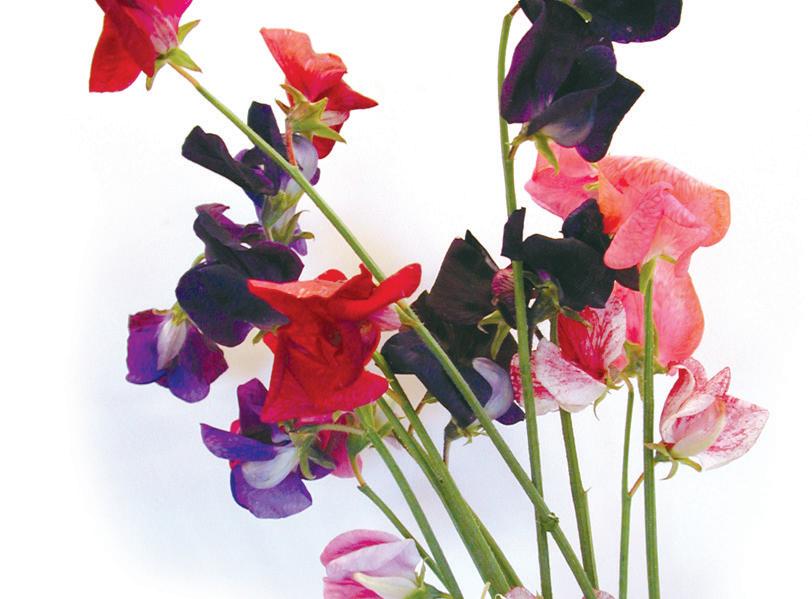




(A) Boragoofficinalis var. ‘Alba’ The beautiful and rare ivory version of blue-flowered borage. The plants are easy to grow and perform identically with the sole distinction of the flower color. Use the tasty blooms as garnishes on everything from beverages to desserts, and add the foliage to salads. Bees, hummingbirds and other pollinators adore the flowers making borage an excellent garden companion plant. Approximately 50 seeds per gram. Germination code: (1)
HR1089C ALBA
(A) BoragoofficinalisThe star-like flowers can be frozen in ice for summer drinks, and the flowers and cucumber-flavored leaves are tasty in salads. Borage stays attractive and green long into the fall and readily self-sows for the next season. A favorite of the bees! Approximately 50 seeds per gram. Germination code: (1)
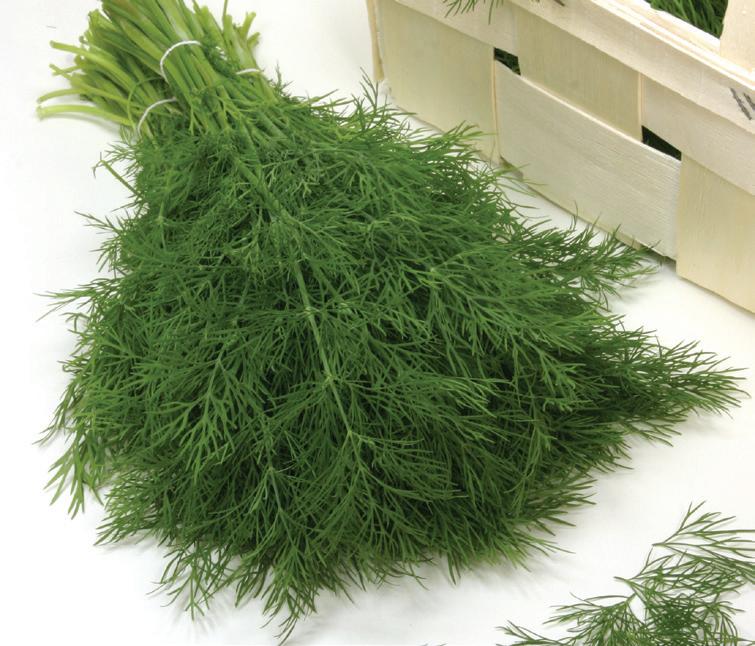

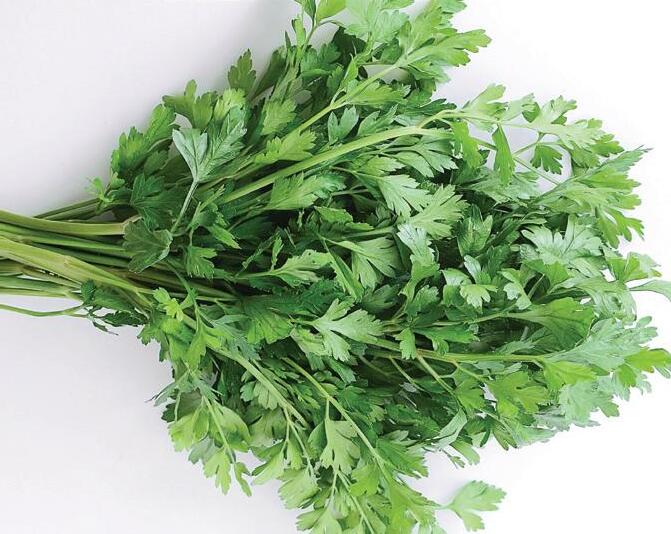
HR1086C BORAGE
(A) Anethumgraveolens An exceptional selection for dill weed, Hera produces masses of feathery, blue-green foliage with exceptional aroma and flavor. Plants are reluctant to flower, so you’ll have a long season of leaf production before they go to seed. Approximately 550 seeds per gram. Germination code: (1)
HR1153G HERA ORGANIC
$3.95
(P) Thymusvulgaris A very popular culinary herb. Thyme is used as a salt and pepper substitute. This evergreen landscape plant with pale pink flowers is a popular bee plant. Reaches 10–12 inches. Approximately 3400 seeds per gram. Germination code: (1)
HR1355C GERMAN/WINTER
HR1355G GERMAN/WINTER

DARK GREEN ITALIAN PLAIN PARSLEY (OP) (A) Petroselinumcrispum 80 days. Flat and deeply cut leaves on very tall, stocky stems. These sturdy plants tolerate light frosts for fresh, aromatic harvests with minimal protection throughout the cool weather months. Harvest prior to killing frosts and dry the leaves for future use. Approximately 350 seeds per gram.
PL641C DARK GREEN ITALIAN PLAIN
PL641G DARK GREEN ITALIAN PLAIN ORGANIC
WEGA PARSLEY (OP) (A) Petroselinumcrispum 75 days. One of the most stunning dark green, deeply curled parsley varieties we’ve grown. Wega’s leaves are bright and clean tasting with sturdy stems. The uniform plants form upright mounds of foliage that are so beautiful they’d fit comfortably in an ornamental setting to add an intricate textural appeal. Once Wega reaches its full size, it patiently waits for harvest without bolting, turning bitter or becoming stringy. Approximately 350 seeds per gram.
PL644C WEGA 2 grams 1

Harvest Bag
Styleinthegardenandbeyond!
Our new, durable, waxed canvas bag has more uses than we can list. This will be your go-to bag to gather produce from the garden, carry tools around the yard, pack groceries from the farmers market and much more. At 22 inches long, 12 inches wide and 6 inches deep, there’s plenty of room for everything you haul wherever you roam. The forest green canvas coordinates with any outfit, and shoulder straps reinforced with leather keeps it securely on your back. Detailed with a twill liner, zippered leather pocket for valuables and a clip to lock in the contents of the bag. ZHG350
$79.95
One of the easiest and most economical ways to improve your soil is to plant green manures, commonly called cover crops. Most garden soils can be maintained at their highest level of productivity by sound soil management practices that involve a combination of soil tillage, crop rotation, and most importantly, the addition of organic matter through green manures.
Organic matter is the “food” component of soil. Soil-dwelling fungi and bacteria work to break down organic matter. When these soil microorganisms eat organic matter, nutrients are released back into the soil in a form that is usable by plants. This process is called nutrient cycling. Nutrient cycling affects both the physical and chemical properties of the soil. The addition of organic matter builds soil structure, which increases water absorption and nutrient-holding capacity, buffers the soil pH, and improves aeration. Cover crops choke out weeds by restricting sunlight to the soil, stabilize the soil surface, and through their deep-reaching roots, help to break up hardpan and bring minerals to the surface for other plants to utilize. As part of a longterm rotation plan, cover crops can provide a stable habitat within your garden for beneficial insects and microorganisms.
Green manures can be grown in the same year as a vegetable crop, such as a cover crop of white clover planted around a cole crop. They can also be grown as a perennial in orchards and vineyards. In mild climates (zones 6 and above), cover crops can be fall planted and tilled in the following spring just before planting. In harsher climates, cover crops can be grown in rows between the crops or as a component of rotation in your garden. Green manure crops are a superior source of organic matter when they are cut and turned under. In addition to this benefit, legume green manures (peas, beans, clovers, favas and vetch) act as a host for the bacteria that fix and make nitrogen available for your vegetable or fruit crops. (A) Annual (B) Biennial (P) Perennial

LACY
(OP) Phacelia tanacetifolia (A) The list of benefits that cover crops can offer a garden is extensive, and Lacy Phacelia is unique in that its predominant contribution is its pollinatorattracting power. On our farm, stands of Lacy Phacelia are a constant buzz of bee activity like no other plant with the exception, perhaps, of buckwheat in full bloom. This fast-growing annual wildflower produces very attractive, ferny foliage growing 2‒3 feet tall and topped with fascinating blue flowers that unfurl in a fiddlehead shape. As a cover crop, Lacy Phacelia aggressively out-competes weeds, and will absorb excess nitrates and calcium in the ground. At our farm, we have found that this crop conditions the top few inches of soil better than almost any other cover crop we've grown. Lacy Phacelia will germinate in soil temperatures greater than 37°F, with the optimal range being 60‒70°F. Will readily re-seed if not dead-headed, and winter kills at 20°F. Recommended seeding rate: 3 ounces per 1,000 square feet or 7 pounds per acre.
WW4456C

NEW ECOEASE MICROCLOVER AND FESCUE LAWN MIX

TSC’S FALL MIX
(OP) (A) Take the guess work out of which cover crop to choose with this multipurpose blend that is perfect for fall sowing. Our mix will help control weeds and erosion while adding valuable nitrogen and organic matter. A balanced blend of Austrian Field Peas, Crimson Clover, Hairy Vetch, Annual and Winter Rye. Recommended seeding rate: 2–3 pounds per 1000 square feet; 100 pounds per acre.
WW4422C TSC’S FALL MIX
(OP) Avenasativa,HordeumvulgareL,Triticum sp (A) This mix of oats, barley, and spring wheat produces a high-protein grain blend, rich nutritious feed for livestock, along with excellent quality bedding straw. Relatively fast-growing, it’s a great selection for the self-sustaining poultry farmer, as chickens love it! A warm weather crop, Succotash should be sown in spring to summer for grain production, as it will winter kill. Recommended seeding rate: 80–100 pounds per acre.
WW4449G SUCCOTASH ORGANIC
(OP) Festucarubra,Festucatrachyphylla, Trifoliumrepens,Festucaovina (P) Whether establishing a new lawn or rejuvenating an existing one, this versatile mix offers a hassle-free solution! Featuring a blend of three fescue varieties and microclover, it creates a thick ground covering that can withstand regular foot traffic and requires minimal mowing —only needing the occasional trim. However, if allowed to blossom the clover will attract pollinators! Unlike traditional lawns, this mix demands less water, thrives in lessthan-ideal soil conditions, and can even flourish in partially shaded areas. Its dense clover growth naturally inhibits weed growth and the clover enriches the surrounding grass with nitrogen, eliminating the need for additional fertilization. Microclover exhibits resistance to pet damage, making it perfect for households with pets. This lush blend greens up earlier than conventional lawns and maintains its appearance until the first frost, or even throughout winter in warmer regions. Recommended seeding rate: 36 ounces per 1,000 square feet; 136 pounds per acre.
WW4409C ECOEASE MICROCLOVER/FESCUE MIX
(OP) Pisum sativum and Avena sativa (A)
Our go-to overwintering cover crop at London Spring Farms, this blend improves the soil and saves time with its quick break-down, allowing for earlier planting than other grain-legume mixes. This 60% peas and 40% oats mix offers a combination of nitrogen-fixing peas and a mineral-mining, nurse crop of oats. The peas produce rapid and heavy plant mass and oats yield dense, high-quality leafy growth and a soft structure for minimal effort to terminate and rapid decomposition. Planted in late summer/ early fall, this crop will overwinter in mild areas and winter kill if temperatures drop below about 10°F. Early spring planting is also a great option in colder regions. Recommended seeding rate: 3–5 lbs per 1000 square feet; 75–100 pounds per acre. WW4460G
Cereal grains and grasses grow very quickly and provide quick ground cover, even in cool weather. They can provide a tremendous amount of biomass that not only smothers weeds and prevents soil erosion but also puts huge amounts of green matter, or green manure, back into the soil, which improves the soil’s tilth. These cover crops are nature’s great nutrient recyclers. The plant’s extensive root system pulls nitrogen and other minerals from deep within the soil, and stores these elements within its roots and leaf structure. Upon turning under the crop, nitrogen and other elements are released or recycled back just underneath the soil surface, so the next crop can utilize the nutrients that once was beyond reach and leaching away. Growing grains as a cover crop provides other options such as forage for animals or food for people. We strive to offer varieties that give gardeners flexibility on how to best utilize the crop: for food, forage, or green manure.

(OP) Secale cereale (A) Rye is a cereal grain that should not be confused with ryegrass, which is for pasture, hay, lawns, and cover crop. Winter Rye is planted in the fall and can germinate and grow very quickly in cool soils. The fast growth of Winter Rye suppresses even the most noxious of weeds, and will do better than other grains in poor soils. It’s the most cold-hardy of the grains able to withstand -30°F! Its long root structure will hold soils in place and prevent soil compaction and erosion, plus quietly siphon available nitrogen from the ground for recycling. In the spring you can decide how to best utilize this unique crop: use it as a green manure and return the biomass and recycled nitrogen back into the soil for the next crop; use it for animal forage; or just before seed set you could cut and use it for a very clean mulch to be used around other crops such as strawberries. Of course, you could let it fully mature and use the grain for making flour, rye bread, rye beer, or animal fodder. Sow seed late August-early September. Recommended seeding rate: 4–5 pounds per 1000 square feet; 75‒150 pounds per acre. WW4430C
$7.55
(OP) Lolium multiflorum (A) Sow seed September through November. Nicely adapted to slightly acid to neutral soils. Slow initial growth, but forms a thick stand in the spring. Approximately 18–30 inches tall. Well adapted to late fall sowing. Has excellent root mass, and makes a good forage grass. Recommended seeding rate: 1 pound per 1000 square feet; 20–30 pounds per acre.
WW4420C
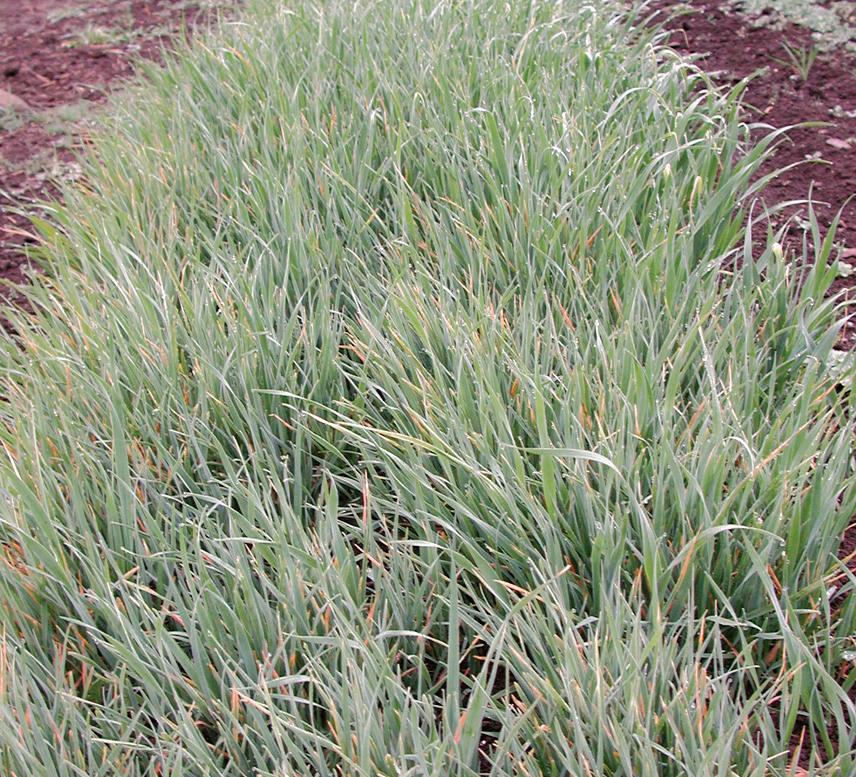
(OP) Avena sativa (A) This valuable cover crop has many uses. Oats’ fast spring growth makes it ideal for erosion control and adds quick organic matter to the soil. As a fast germinating nurse crop, it will shade and keep the soil cooler for slower germinating legumes. Sow spring through summer. Although it will winter kill, oats can be planted in the fall and the residual plant material can be worked under in the spring to form a soft mellow seedbed. Oats will form seed heads the first year. You can mow it high to remove immature seed heads, or cut it for oat hay. Recommended seeding rate: 1–2 pounds per 1000 square feet; 50 pounds per acre.
WW4414C OATS
1
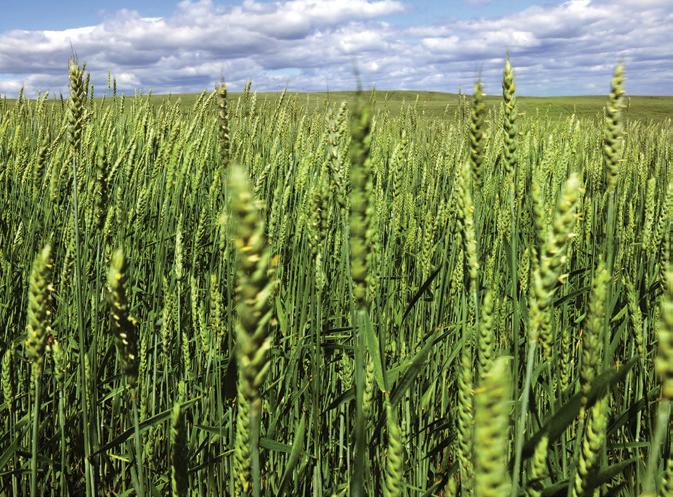
(F1) x Triticosecale (A) This cross of cereal rye and durum wheat produces a high-protein, winter-hardy crop for forage or grain production. Multi-tillered plants produce rapid early-season growth enabling them to fill in and cover the ground quickly for superior weed suppression. Its aggressive root system builds biomass while scavenging nitrogen. Recommended seeding rate: 50–120 pounds per acre with the lower end for forage and higher for grain production.
WW4457C
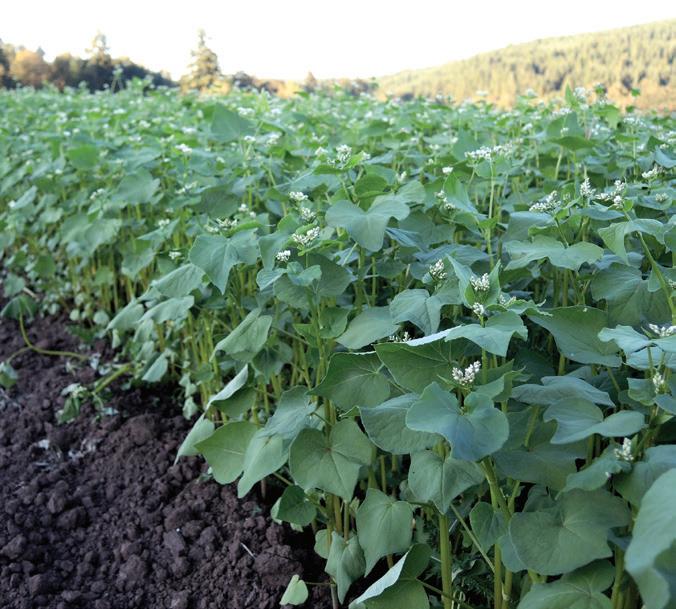
(OP) Fagopyrumesculentum (A) Grows quickly to 24 inches in ordinary garden soil and has minimal nutritional needs. Should be tilled in when flowering begins (5–6 weeks after germination). The brittle plants are easy to chop up with a hoe, making it an easy cover crop to work with. Because of its dense growth, buckwheat can smother out the most tenacious weeds, even thistle! An excellent attractant for beneficial insects as well as a good thrip trap crop. Also works as an accumulator of insoluble phosphorus that is released back into the soil when tilled in. Sow spring to summer. Recommended seeding rate: 1 pound per 500 square feet; 50 pounds per acre.
 Winter Rye Grain
Buckwheat
Triticale Oats
Winter Rye Grain
Buckwheat
Triticale Oats

Based on the wisdomofpreColumbianpeople who made biochar over6000yearsago and established the fertile areas of Terra Preta in the Amazon. Biochar is an exceptional, high-carbon, low ash soil amendment that works in conjunction with water and fertilizers to hold and slowly release moisture and nutrients as the plants demand. Our biochar’s enormous surface area makes it an ideal material for hosting beneficial microbial life in the soil. When incorporated into the soil, biochar offsets greenhouse gasses created during the natural decomposition of organic materials, improves the texture and tilth of both clay and sandy soils, reduces the need for irrigation, and tempers pH of acidic soil. This is the highest quality biochar available, made from sustainably managed wood that’s thermally decomposed under carefully controlled, oxygen-starved conditions. Requiring only a one-time application, 1 cubic foot bag will cover approximately 12–24 square feet for vegetable plantings. Organic Materials Review Institute (OMRI) listed.
ZFE275* 1 cubic foot $34.95
* SHIPPING WEIGHT 12 POUNDS
Intelligent Gardener by Steve Solomon. Most gardeners rank the health benefits from a diet of fresh, homegrown produce as a major impetus to cultivating their own vegetables. What if the soil that’s producing the vegetables is weakened from years of poor management among other factors? That is, unfortunately, the case far too frequently, and Mr. Solomon casts a critical eye on the practices that contribute to depleting the vitality of our soil. Steve offers indispensable tools to help rebuild the nutrients in your garden soil, reverse the effects of past mismanagement, and start growing food that’s truly nutritious. Paperback, 336 pages.
ZBK150

More and more organic growers and gardeners are discovering the long list of benefits that growing fall-planted brassicas such as oilseed radish, mustards, and forage turnips can provide. The rapid fall growth of brassicas supplies a thick ground cover that protects the soil from erosion and helps suppress weeds with a dense amount of biomass. Some brassicas have a large taproot that can break through plow or rototiller pans, thus aerating the soil. The roots also scavenge nutrients from deep in the soil and bring them back to the surface where they can be utilized by your next food crop plantings. Other brassica species release chemical compounds that may be toxic to soil borne pathogens and pests such as nematodes, symphylans, and even some weeds. And if left to flower, brassicas are especially popular with beneficial insects.
(OP) Raphanussativusvar. niger(A) 60 days. Daikon in Japanese means large root. There are perhaps hundreds of varieties of daikon radishes bred for different purposes: from the very mild carrot-shaped types for fresh eating and pickling, to the tillage types we sell here. This strain of daikon is referred to as a biodrill or tillage radish. Tillage radishes are specifically bred to form huge soil-busting roots, with a tap root that can reach far into the soil to reclaim nitrogen. The roots also leave large holes in the ground allowing water infiltration and soil aeration. They can even suppress weeds with their quick canopy cover, especially from August sowings. Once planted in late summer, the radishes are not harvested or turned under, but left to die off in the winter and decay to contribute a nitrogen store for spring planting. The extra long, 10–20 inch roots of Groundhog allows it to drill down and pull huge amounts of nutrients from deep within the soil, which the following crop can utilize. In just 6–8 weeks, Groundhog can capture 150–200 pounds of nitrogen per acre before winter killing. Plant in late summer. Recommended seeding rate: ½ pound per 1000 square feet; 10–12 pounds per acre.
WW4429C GROUNDHOG DAIKON

$24.95
Japanese stainless steel is held in the highest regard, and this hand sickle’s comfortable dimensions make its sharp, serrated blade perfect for tasks from harvesting cereal grains and pruning cane berries to simple hand weeding. We found its gentle curve especially useful for select as paragus harvests, cutting stalks an inch below the soil surface without disturbing the surrounding crop. A well-finished wood handle holds the 6 ½ inch blade securely, for a total length of 14 inches. ZTO978

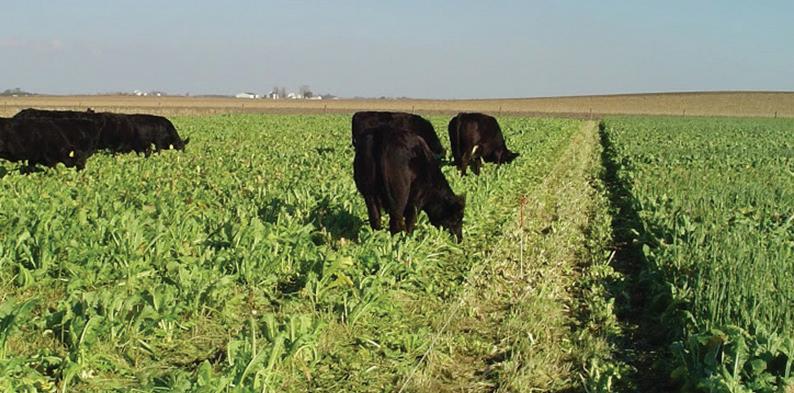
Brassicarapa (A) 50–70 days. A cross between a forage turnip and a forage rape. Fall sown turnips do an excellent job of suppressing weeds and are efficient miners and recyclers of existing nutrients in the soil. When turned under, they decompose very quickly. Livestock and deer can survive quite nicely all winter long dining on this high protein forage source. Pacer was bred for fast, vigorous establishment and quick maturity. It also has more leaf structure than most other forage turnips, and is multi-crowned for improved re-growth potential even after aggressive animal foraging. The high leaf-to-bulb ratio results in a very leafy crop with high digestibility your livestock will love. Sow spring to late summer. Recommended seeding rate: ¼ pound per 1000 square feet; 5–7 pounds per acre.
WW4428C PACER FORAGE TURNIP
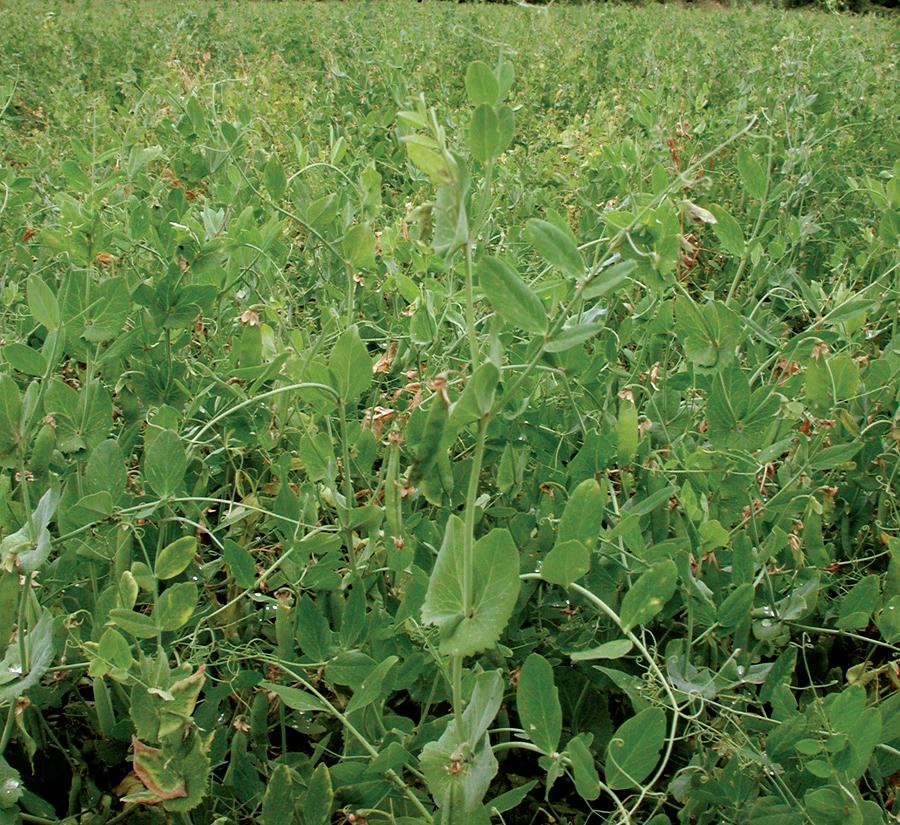

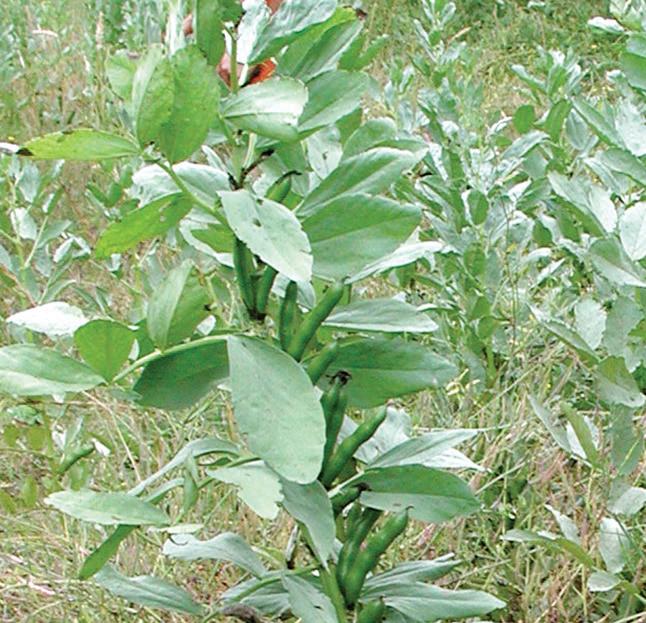
Winter season legume cover crops are an essential component of good soil management. Growing legumes overwinter and incorporating them back into the soil in the spring increases the organic carbon content and improves the fertility and water-holding capacity of the soil. Legumes obtain their nitrogen from nitrogen fixing bacteria, and can provide as much nitrogen for your next crop as fertilizer, containing 100–150 pounds of nitrogen per acre. For maximum nitrogen yields, legumes should be incorporated into the soil at peak bloom.
(OP) Lathyrushirsutus (A) This cold-hardy overwintering pea is an excellent choice for cooler, poorly drained soils that may not be conducive to other legumes. Fixes 70–120 pounds per acre of nitrogen. Sow in the fall or as soon as possible in the spring. Can be worked in late April or early May. Recommended seeding rate: 2–4 pounds per 1000 square feet; 75‒100 pounds per acre.
WW4407C AUSTRIAN FIELD PEAS
(OP) Medicagosativa (A) Released in 1953, Vernal remains a very winter-hardy variety even in the most northern climates. At maturity alfalfa can produce a huge amount of green biomass capable of putting back up to 10 tons per acre into the soil at plowdown. Generates 150–250 pounds of nitrogen per acre and also serves as a great forage crop for animals. Thrives in well-drained soils with a pH above 6.0. In gardens, prepare as you would a lawn with a fine and firm seed bed. The seed prefers good soil contact; sow about ¼–½ inch. Roll with a lawn roller. Can be spring or late summer sown. You must plant 6–8 weeks before the first killing frost in the late summer to allow good establishment going into winter. Great for sowing between crop rotations as a high nitrogen producing cover crop. Recommended seeding rate: ½ pound per 1000 square feet; 15–20 pounds per acre. Pre-inoculated.
WW4425C VERNAL SUMMER ALFALFA
(OP) Vicia faba (A) In zones 7 and above, plant 3 weeks prior to your first killing frost. When fall sown, magnificent stands of impenetrable vegetation reach 6 feet by late May. Tolerant of temporarily waterlogged soils in winter. Winter hardy to at least 10°F. Spring sow in colder regions. Best stands obtained by planting 3 inches deep, but can also be broadcast at ½–¾ pound per 100 square feet; 5 pounds per 1000 square feet, or 200 pounds per acre.
WW4403C SMALL
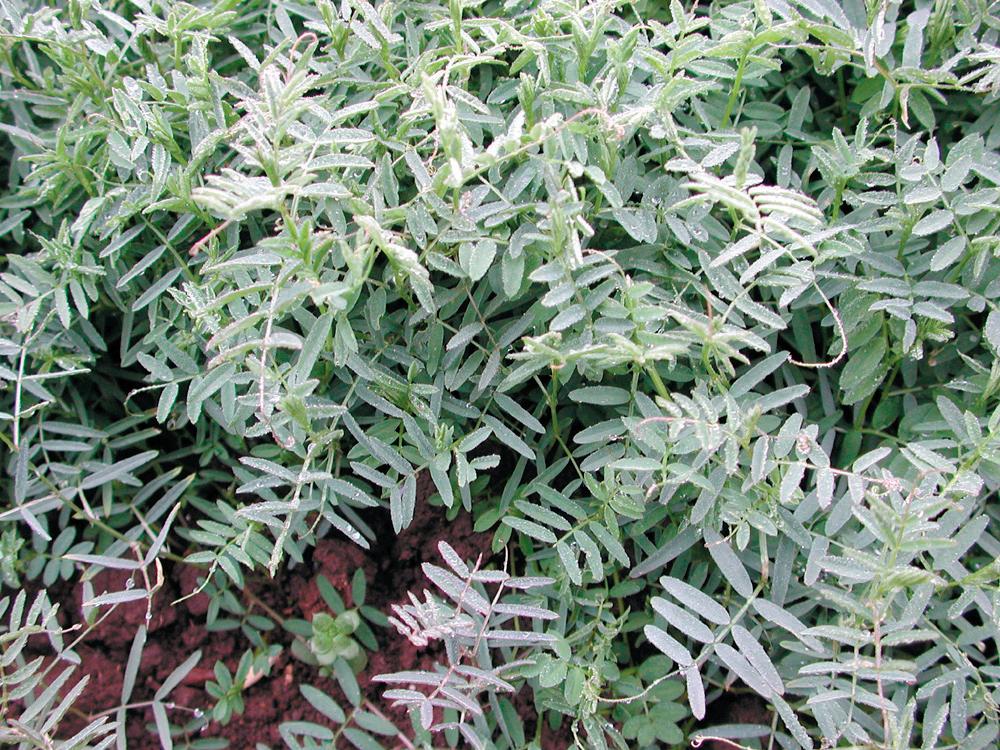
(OP) Vicia villosa (A) Sow seed late August to mid-October. One of the more popular and aggressive legumes and a good companion crop for the cereal grasses. Hairy Vetch can enrich the soil with 60–120 pounds of nitrogen per acre. Tolerant of acid soils, shade, and low temperatures. Hardy down to 10°F if planted early so that it is well established before winter sets in. If planted by itself, it can reach a height of 12–20 inches. It can be tilled under in the spring as with other green manures, or you can simply cut or mow to the ground (and keep cut) and plant your tomatoes and peppers. To avoid re-seeding, turn the crop under at or before flowering. Recommended seeding rate: 1 pound per 1000 square feet; 25–40 pounds per acre.
WW4410C
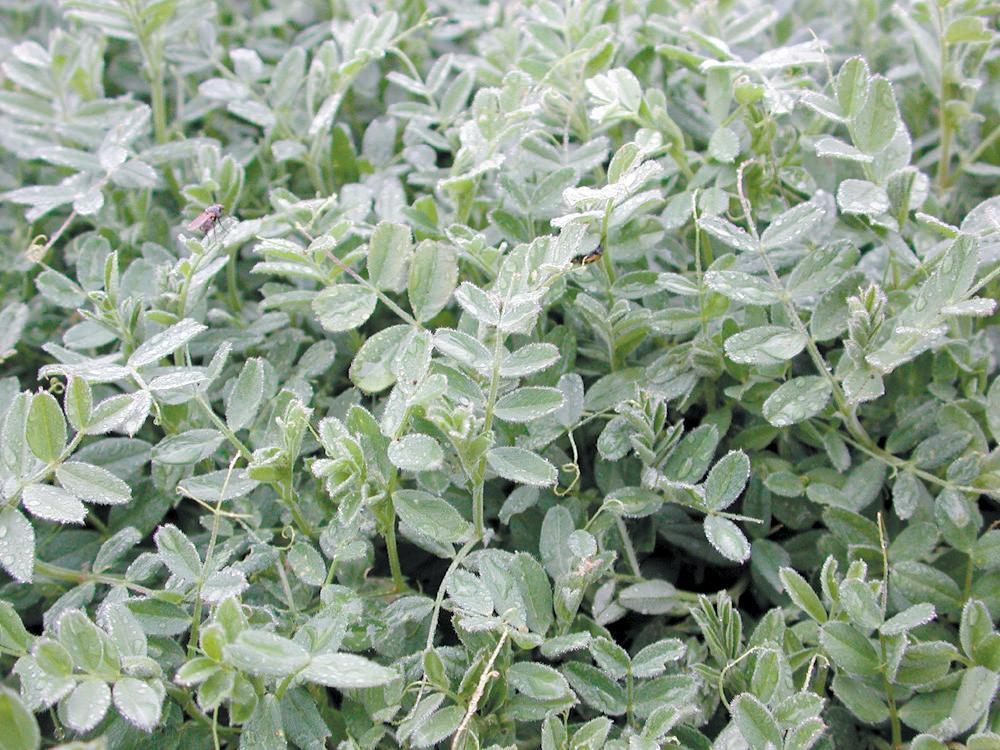
(OP) Viciaangustifolia (A) Similar to Hairy Vetch but grows much larger and has few tendrils making tilling somewhat easier. This is the most vigorous of the vetches with excellent green-matter production early in the season, which is a valuable forage crop and beneficial insect attractant. Produces 2–3 tons of dry matter per acre when grown alone and fixes 50–110 pounds of nitrogen per acre. If supported by a companion plant, it can reach 3–5 feet, otherwise expect growth to 22 inches. It tolerates light mowing or grazing. Seed early in the fall or spring/summer. Recommended seeding rate: 1 pound per 1000 square feet; 25–40 pounds per acre.
WW4411C COMMON VETCH

MAMMOTH RED CLOVER
(OP) Trifoliumpratense var. sativum (B) An excellent fast-growing cover crop that can be planted almost any time of the year. More vigorous and tolerant of acidic soils than other clovers, Mammoth Red breaks up clay soils and can add as much as 200 pounds of nitrogen per acre. Reaching up to 3 feet in height at maturity, Mammoth Red Clover can provide enormous amounts of organic matter and tilth to your soil. Recommended seeding rate: ½ pound per 1000 square feet or at 20 pounds per acre. Pre-inoculated.
WW4434G MAMMOTH RED CLOVER ORGANIC
1
$11.95 $52.70 $99.25
$230.90 $399.95

FIXATION BALANSA CLOVER
(OP) Trifolium michelianum Savi (A) This newly released clover is a next-level cover crop. The most cold tolerant of annual clovers, FIXatioN Balansa can survive down to -14°F while producing huge amounts of biomass and fixing over 250 pounds of nitrogen per acre. A very vigorous grower, it will reach about 3 feet tall while branching out and spreading laterally with rangy stems up to 10 feet long. Underground its branching taproots can penetrate up to 18 inches in a mere 45 days to break up hard clay and greatly improve drainage. The crop can be grazed or mown for hay, and its flowers are powerfully attractive to pollinators. This exceptionally resilient variety is tolerant of drought, heat, cold, shade, acidic soils, and wet soil (including short durations of flooding). Recommended seeding rate: 5‒8 pounds per acre. Pre-inoculated.
WW4455C
(OP) Trifoliumrepens (P) Our shortest clover cover crop, Microclover® is an outstanding, durable, multi-purpose plant. It has naturally dense growth that provides excellent weed suppression. It fills in quickly but is not overly aggressive like some other perennial clovers, and its dwarf foliage creates a solid mass of durable, deep green, uniform leaves. The resilient, cold-hardy plants tolerate shade, both wet and drought conditions, foot traffic and very low mowing. Microclover® is an outstanding, low maintenance lawn companion to mix with grass. Left unmown, it will only reach 3–6 inches tall, but periodic mowing keeps it shorter and very lush. Seeding it in with a lawn, its nitrogen-fixing ability helps feed the lawn for a naturally sustainable planting. Deep roots break up clay and reach farther for water, keeping it green when more shallow-rooted plants suffer. Pre-inoculated. Recommended seeding rate: 1 pound per 1000 square feet.
WW4462P MICROCLOVER® PELLETED
(OP) Trifolium incarnatum (A) A reliably winter-hardy annual variety that does not multiply with runners (like perennial Red Clover does) and is easy to eliminate by tillage. Planted September through October, Crimson Clover forms a dense green carpet by mid-winter, fixing 125 pounds of nitrogen per acre and producing tons of humus. Does not perform well in waterlogged or acidic soils. Matures in June with crimson flowers on 18 inch plants. Shade tolerant and a great summer beneficial insect attractant. Sow ¼–½ inch deep in spring, summer, or fall. Recommended seeding rate: 1–2 pounds per 1000 square feet; 30–40 pounds per acre. Please note: only the conventional offering is pre-inoculated.
WW4408C
(OP) Trifoliumrepens (P) Growing to only 8 inches, this low perennial clover has a growth habit similar to White Dutch Clover but will stand drought conditions better, is more vigorous, and tolerates a wide range of soils. Used for both a spring and fall cover crop, New Zealand White Clover can be sown between row plantings or as a solid seeded cover. A terrific green manure as it fixes up to 170 pounds of nitrogen per acre and attracts beneficial insects. Recommended seeding rate: ¼ pound per 1000 square feet; 6–10 pounds per acre. Pre-inoculated.
WW4412C


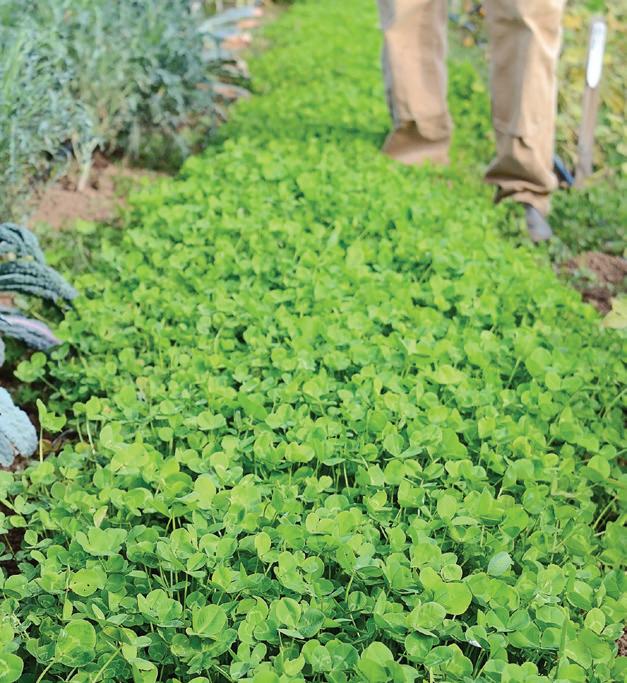
(OP) Trifoliumalexandrinum(A) One of the best nitrogen fixers, making 200–300 pounds per acre available. Extremely productive, it is an excellent forage as well as a green manure. An annual with ivory blossoms, Berseem will tolerate a wide range of soils and temperatures down to 15°F. Plant late summer to get the best winter cover; sow ½ inch deep. Height: 18–30 inches. Recommended seeding rate: 1 pound per 1000 square feet; 15–20 pounds per acre. Pre-inoculated.
WW4405C


Asimpleandeffectivesolutiontoirrigation. Save time, energy and water with these subterranean irrigation pots. Made of unglazed, low-temperature fired terra cotta and designed to be buried neck deep in the soil with crops planted around them. Fill the olla with water and the moisture is drawn out through the olla’s porous walls as the plants require it. Ollas virtually eliminate wasteful runoff and evaporation that are inherent in surface irrigation, as well as weed growth. Each olla includes a protective lid.
Medium Olla: 1.5 quart/1.6 liter capacity, for 22–24 inch diameter planting area or container.
Large Olla: 2.9 gallon/10.98 liter capacity, for a 36–48 inch diameter planting circle.
ZSU867/1* Medium $34.95
ZSU867/4** 4-pack Medium $129.95
ZSU869*** Large $59.95
* SHIPPING WEIGHT 4 POUNDS
** SHIPPING WEIGHT 12 POUNDS
*** SHIPPING WEIGHT 20 POUNDS
The Hose Nozzle is perfect for chores from garden watering to truck washing, and turns a garden hose into a multi-function spray tool. It features 5 spray patterns ranging from a gentle soaker spray to a forceful, powerful stream. Constructed of high-grade stainless steel, fiberglassreinforced nylon, and non-corroding brass to resist breaks and leaks. Designed without washers that notoriously cause leaking, you’ll never have to deal with water dripping down your arm again. In fact, the Hose Nozzle is so well made that the manufacturer guarantees it for life! Please note: color may vary depending on availability.


Three Shelf Greenhouse Agreenhousetailoredtofiteventhesmallest spaces!
Just right for the urban, patio, or small-space gardener, this portable greenhouse combines the sturdiness and security of larger models in a space-saving, lightweight, easy-to-manage unit. Get a jump start on your planting with over 10 square feet of shelf space. Great for early-season seedlings or protecting established potted plants at summer’s end. Extra-simple, tool-free assembly takes minutes. Measures 50 inches high, 27 ½ inches wide, 19 ½ inches deep.
ZGR329* $99.95
* SHIPPING WEIGHT 11 POUNDS
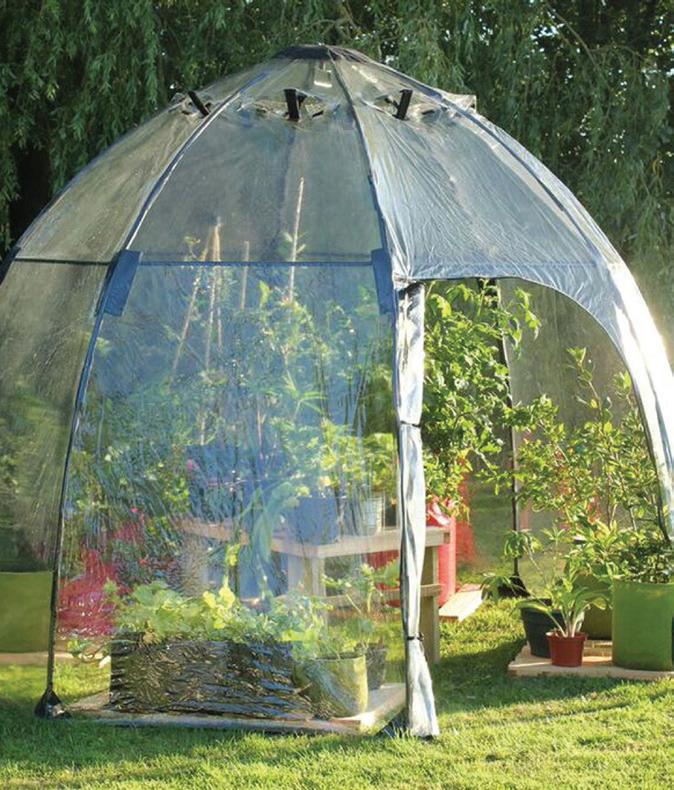

Sunbubbles
Finally!Astylish,portableplantconservatoryto fityourbudget.
ZSU873 $35.95
1000 Water Breaker®
Soften the flow!
This micro-fine hose nozzle is the one we use in our greenhouses. It shatters the water flow into an ultra-soft, aerated shower that won’t displace seeds and soil or damage delicate plants. With 1,000 holes in the 2 inch head, the water flow is very gentle but with a volume high enough to irrigate quickly and efficiently. Threads onto standard ¾ inch hose fittings. Handle not included. Made in the USA with a limited lifetime guarantee.
ZSU907


Victorian Bell Cloches help keep small plants, seedlings, and cuttings safe from frost, wind, storms, birds, rabbits, and other pests. They are terrific for extending your growing season or overwintering tender perennials. Acting like a miniature cold frame, they capture maximum sunlight from all angles. Vented, too! Unlike glass cloches, these 12 inch wide and 10 ½ inch tall bells made of high-impact, UV-stabilized plastic are lightweight and won’t easily break. May be secured with 4 Ground Pegs (ZGR314—available on our website).
$26.95
ZGR313 pkg of 3 $35.95
These dome-shaped greenhouses are roomy enough for large and climbing plants. Great for season extending or overwintering tender cultivars. The patented design allows the unique curved surface to always align at 90° to the sun's rays for optimum light penetration regardless of the time of day. The UV stabilized PVC cover features a rugged, zippered door and adjustable top vents for air circulation. Our easiest greenhouses to set-up and take down, the durable fiberglass rods are pre-set into the cover and make assembling the structure a quick, one-person task. Our versatile Sunbubbles can double as a play shelter or dining tent in rainy weather. Comes complete with a sturdy storage bag.
Sunbubble (A)
Measures 9 feet 2 inches in diameter, 6 feet 7 inches tall at the center.
ZGR337* $299.95
* SHIPPING WEIGHT 35 POUNDS
Giant Sunbubble (B)
Measures 11 feet 6 inches in diameter, 7 feet 2 ½ inches tall at the center.
ZGR338** $419.95
** SHIPPING WEIGHT 47 POUNDS
Tufflite IV - Cold Frame & Greenhouse Plastic Amustforyear–roundgardening.
Tufflite provides shelter from excessive rain, wind, and frost, plus it resists cracking and yellowing for up to 4 seasons. Made of extra tough 6 mil copolymer that withstands high winds or heavy snows. We recommend using Tufflite over a frame. The framing you choose can be wood, plastic, or metal. We use a tunnel frame made from ½ or ¾ inch PVC or black poly pipe. Cut ends of pipe at an angle with a hacksaw for easy soil penetration. Tufflite can be held securely to the frame with the “Garden Clip System” described on this page. The sizes of Tufflite offered are for making different sized tunnels.
ZRC806* 6’ x 16’ $40.95
ZRC807** 10’ x 16’ $55.95
ZRC808*** 20’ x 16’ $90.95
* SHIPPING WEIGHT 4 POUNDS
** SHIPPING WEIGHT 6 POUNDS
*** SHIPPING WEIGHT 11 POUNDS
Thesimplestandmosteffectiveplantprotectionsystem.
Cover an entire 10 foot row of crops and protect them from cold, insect pests, and marauding animals. This fully-integrated wire hoop and fleece row cover tunnel assembly utilizes 7 wire hoops sewn directly into the cover. Secure the tunnel in seconds by pushing the hoop ends into the garden soil. Ends of the tunnel are drawstring-close for extra security, or fold back the ends to allow flow-through ventilation. Tunnel is 1 ½ feet wide, 1 foot tall and 10 feet long. Simple installation; no assembly required!
ZRC749* $24.95
* SHIPPING WEIGHT 3 POUNDS
Heat-lovingplantsrejoice!
Designed to warm up the growing environment for heat-loving crops like melons, eggplants, peppers, etc. Especially good in northern gardens and for very early plantings. Gardeners can expect daytime temperatures under this film to be almost 10 degrees higher than under Reemay. Gro-Therm is better than floating row covers for crops that need high light intensity and warmth. Gro-Therm’s evenly spaced holes allow for consistent growing conditions. The 1 mil film has 300 holes per square yard for ventilation, eliminating the need to remove the cover on a hot day.
ZRC799 6’ x 20’ $17.95
ZRC800 6’ x 50’ $22.95
Eleven curved pieces of galvanized 9 gauge wire, each 46 inches long and 30 inches across at the base.
ZRC748* 11 hoops
* SHIPPING WEIGHT 5 POUNDS
$33.95
These handy 6 x 1 inch staples are great for holding down most garden fabrics. Made from sturdy 11 gauge metal.
ZRC746 30 staples $14.95
These nifty garden clip fasteners secure greenhouse film, row covers, shade cloth, or even bird netting securely to a pipe frame and hold well in high winds. The benefits of the Garden Clip System are: start your seedlings earlier, add extra warmth for heat-loving plants, provide temporary shade in hot months, extend your harvest well into fall or even garden yearround, and keep birds from your berries.
BuildyourownGardenClipgreenhousetofityourneeds. Fit the exact size and shape you want using your own pipe and sheeting. Visit our website for guidance when designing a tunnel.
Garden Clips: The medium size clip fits ½ inch pipe and the large size fits ¾ inch pipe. You will need approximately 1 Garden Clip for every 2 square feet you wish to cover or for every 1 square foot in windy conditions.
Hoops: Use ½ or ¾ inch poly pipe cut to 5–12 foot lengths. Slip longer lengths over ½ inch rebar stakes driven into the ground. Complete instructions included.


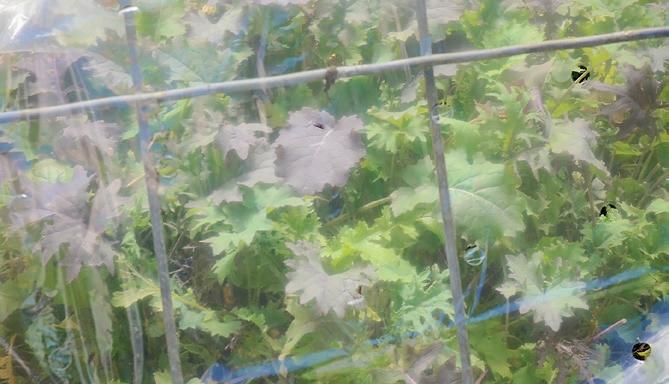



Protect your crops from harsh winter temperatures and precipitation, as well as insect and animal pests, with floating row covers. These lightweight fabrics are gently placed directly on the plants or over direct seeded rows, being careful to leave slack to allow for growth expansion as the crop develops. They hold warmth and can insulate from frost, so more tender crops will survive longer than unprotected plants. Row covers freely pass air and water, requiring no special ventilation or watering. As an insect screen, floating covers work well on flying insects, however, we suggest using the Insect Barrier for this purpose. Anchor with a light sprinkling of soil around the edges, or use Fabric Staples. No hoops or supports needed, it just floats on top of plants. Defeats carrot rust fly, cabbage fly, leaf miners, aphids and flea beetles. Lasts 1–4 seasons depending on its accumulated exposure to the sun.



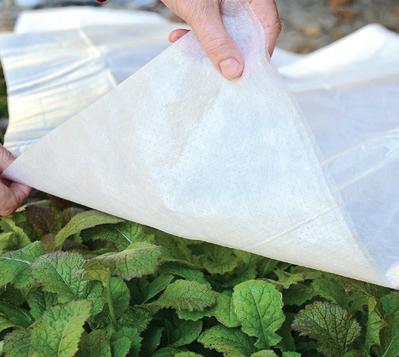

At 0.6 ounce per square yard, Grow Guard 20 is less abrasive to young plants than Reemay. This polypropylene fabric allows 85% light transmission. A single layer provides frost protection down to 27°F if there is no breeze.
ZRC823 6’ x 20’ $26.95
ZRC824 6’ x 50’ $32.95
ZRC825* 6’ x 250’ $99.95
* SHIPPING WEIGHT 8 POUNDS
Keepunwantedinsectsout.
This lightweight fabric provides an effective screen to reduce damage from flea beetles, thrips, aphids, whiteflies, striped cucumber beetles, and other insects that are virus vectors. Porous to both air and water. It allows 90–93% light transmission without heat build up and is UV stabilized so it won’t deteriorate quickly. At 0.4 ounce per square yard, it’s lighter, softer, and more flexible than Reemay.
ZRC818 6’ x 20’ $19.95
ZRC819 6’ x 50’ $24.95
Micromesh
Workslikeawarmwintercoat,protectingplantsdownto24–26°F. Cover plants before the frost comes, and uncover during the day when temperatures rise above 32°F. This hefty polypropylene fabric is three times the thickness of Reemay and weighs 1.5 ounces per square yard. Allows 50% light transmission. Durable enough for multiple-season use. Porous to air and water and UV stabilized so it won’t deteriorate quickly in sunlight.
ZRC830 6’ x 20’ $34.95
ZRC831* 6’ x 50’ $59.95
* SHIPPING WEIGHT 5 POUNDS
We have sold Reemay for decades, and its reputation and name recognition are well known to home gardeners. Weighing in at a very light 0.6 ounce per square yard, this polyester fabric allows 75% light transmission. Provides frost protection down to 30°F.
ZRC811
ZRC812
67” x 20’ $25.95
67”
* SHIPPING WEIGHT 6 POUNDS
Ultra fine, 0.6 millimeter, UV stabilized floating row cover keeps out the smallest of insects. The greenish-yellow tint provides shade and retains moisture, while allowing sunlight, direct watering, and easy access to crops. Can easily be cut to fit.
ZRC833 67” x 16’ $27.85
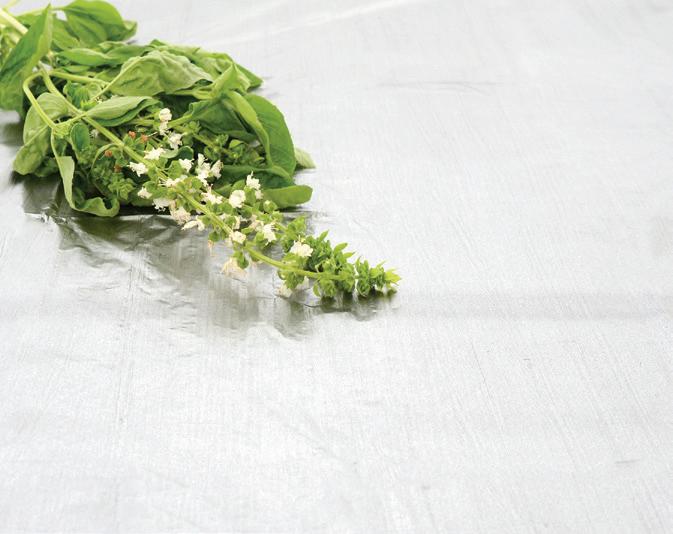
Silver Mulch Drivesbugsaway!
This amazing plastic mulch repels hungry, disease-carrying insects. The shimmering silver, high-density polyethylene plastic causes insects such as thrips, aphids, and white flies to avoid the area near your plants. Good for all types of plants. We use it regularly on all brassica crops. It’s the best defense mustard plants have against flea beetles. A must in the organic garden.
ZRC796 4’ x 20’ $17.95
ZRC797 4’ x 50’ $22.95
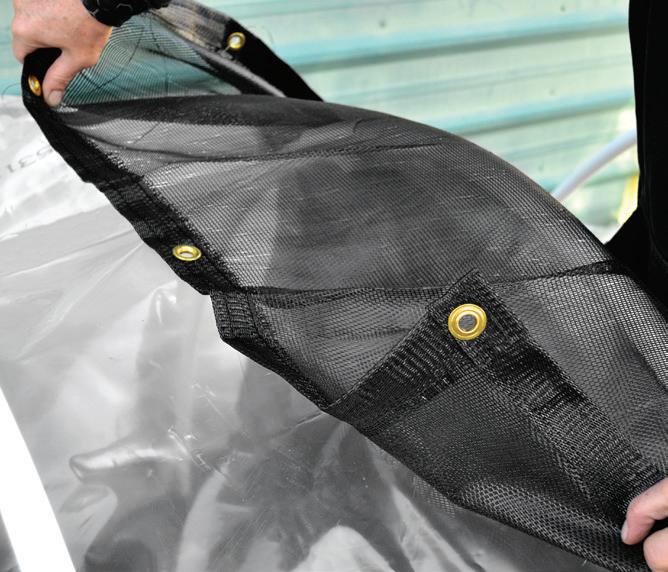
Whether protecting your greenhouse, hoop row covers, or shading a patio area, shade cloth is a very useful product. Ours blocks 65% of the light, perfect for greenhouse and general plant protection. The edges finished securely and fitted with metal grommets in each corner and every 12 inches. UV stabilized material lasts up to 10 years.
ZRC760* 6’ x 10’ $79.95
* SHIPPING WEIGHT 3 POUNDS

Universal Mobile Phone Microscope 60x
Turnyourmobilephoneanditscameraintoa high-poweredmicroscope.
This very simple to use tool clips onto your smartphone, aligning with the camera lens, and instantly brings tiny subjects into crystal clear focus. A 60x magnification and integrated UV and LED lights allow you to meticulously examine your plants, insects and anything else. Record your observations with your phone’s camera, or remove the clip to use the microscope without the phone. Complete with storage cover and batteries.
ZTO918
$13.95

A planting mix/soil amendment that’s based on proven Biodynamic principles for building your garden ecosystem health from the soil up. With healthy, vital, balanced soil, your crops and the resulting harvests are stronger and have more flavor. We are proud to offer you SeaCoast Compost, an incredibly rich mix that’s loaded with micro and macro nutrients. It's alive with the beneficial microbial life that will help re-build the health of your soil and help you produce abundant, tasty and nutritious crops. Crafted here in Oregon with the highest quality, responsibly sourced ingredients and carefully aged for 2 years. Certified Biodynamic by Demeter USA, and tested for pathogens, contaminates and heavy metals.
ZFE271* 1 cubic ft $29.95
* SHIPPING WEIGHT 38 POUNDS

Nowapplythesamefertilizerthatweuseat LondonSpringFarms.
7–7–2 An all-natural fish fertilizer that provides all the nutrients required by plants in the proper ratio while building soil humus. Improves soil quality by loosening clay soils to promote deep root growth and allow better penetration of water and nutrients. In sandy soil, it improves nutrient content and moisture retention by adding humus. Organic Materials Review Institute (OMRI) listed.
ZFE235* 5 lbs $19.95
ZFE236** 25 lbs $59.95
ZFE237*** 50 lbs $109.95
* SHIPPING WEIGHT 6 POUNDS
** SHIPPING WEIGHT 26 POUNDS
*** SHIPPING WEIGHT 51 POUNDS
BiocharmeetsMycorrhizae!
Both biochar and mycorrhizae are enjoying a spotlight in sustainable agriculture. Our Big Foot products bring these two valuable components together along with supportive ingredients to assist your plants' growth and improve the soil. Biochar's structure provides the ideal housing for mycorrhizae, and worm castings, kelp, micronutrients and trace minerals feed your crops while helping the mycorrhizae become established. The mycorrhizae form a symbiotic relationship with the roots of plants, protecting them and encouraging their growth. You'll see improved root growth, reduced transplant shock, reduced stress from drought, and increased yields along with better water retention, soil fertility and beneficial microbe populations in the soil. Organic Materials Review Institute (OMRI) listed.
A natural microbial alternative to fertilizer!
Root Boost’s active ingredient is a powerful nitrogen-fixing bacterium called Azospirillum brasilense. With that in your soil, your plants will enjoy elevated nitrogen availability for enhanced growth, better root production and reduced stress. Our Root Boost is a super concentrated form of Azospirillum and is easy to apply to cuttings, transplants and established plants. Give your plants what they need, and watch them thrive! Great for indoor and outdoor plants, lawns, gardens, ornamentals, fruits, trees, shrubs and more! Mix 1 teaspoon into a gallon of water and water into established plants. Each 2 ounce package contains approximately 12 teaspoons of product.
ZFE272 2 oz $11.95
Spread this easy-to-handle granular formula in the bottom of the planting hole when transplanting for maximum root contact. Inoculate soil mixes by combining 3 tablespoons of granular in one cubic foot of soil. Each 4 ounce package contains approximately 10.75 tablespoons of product.
ZFE273 4 oz
$13.50
Mix a teaspoon of this fine powder formula into a gallon of water for a root drench. Re-apply every 2–3 weeks, and use on established plants that have been treated with the granular formula at transplant. Each 8 ounce package contains approximately 50 teaspoons of product.
ZFE274 8 oz
$29.95
0–12–0 Provide your plants with a rich source of phosphorus to aid in blossom and fruit development. For tomatoes, the naturally occurring calcium in Liquid Bone Meal helps ward off blossom end rot. Best of all, every bit of the nourishment goes directly to the plants, as this product does not entice animals normally attracted to powdered bone meal. One gallon concentrate makes 72 gallons.
ZFE263* 1 gal $55.95
* SHIPPING WEIGHT 11 POUNDS
Easytouse,high-powered,pump-actionpressurizedsprayer.

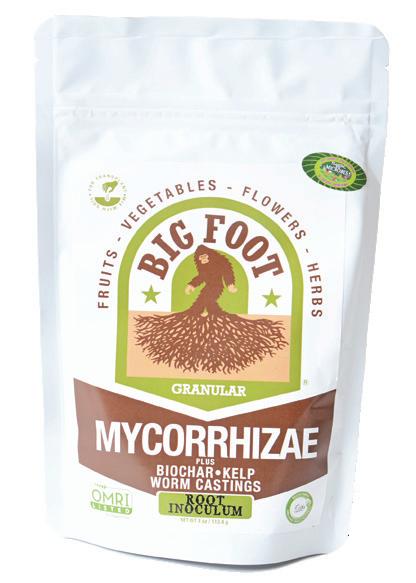


This versatile, durable applicator handles just about any job from misting seedlings, applying pesticides, dispensing compost tea, spraying cleaners and more. The heavy-duty, poly, 2 liter tank generously holds plenty of liquid, and a few quick pumps pressurizes the tank, and you’re ready to spray. With just a twist of the nozzle, adjust the spray from an atomized mist for fine coverage to a laser-straight stream for accuracy. The comfortable handle, thumb-operated trigger, and convenient trigger lock all make this industrial-quality tool a pleasure to use.
ZHG389
$32.95



A real game-changer for hungry houseplants! The results from just one use of this product are remarkable and nearly instantaneous. Plants responded with notably glossier leaves, deeper color, and robust growth. Made from recycled food, this natural plant nutrient surprised us with a pleasant, herby scent (we’re used to pretty stinky, natural fertilizers). Treat your houseplants right with this superior food, and your nose will thank you, too!
ZFE201 16 oz $29.95
A unique formulation of over 20 natural compounds that protect against insect pests both above and below the soil surface. Effective against chewing and sucking insects along with caterpillar pests. Not available for sale in ME.
ZIN201 16 oz $29.95
Additional Arber products available on TerritorialSeed.com
2–3–1 This rich, balanced blend of fish and seaweed gives your plants the nutrients they need for strong, healthy growth, abundant blooms, and flavorful harvests. Produced using a unique cold process that protects the vitamins, amino acids and enzymes for a truly vital source of nutrition. We use Fish & Seaweed at our farm and love the results. A highly concentrated blend requiring only 1 ounce per gallon of water. Can be used as a foliar feed, soil drench or compost activator. Organic Materials Review Institute (OMRI) listed.
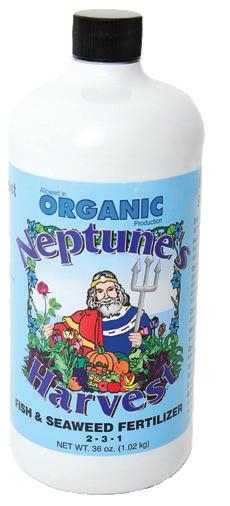
ZFE269* 1 qt $24.95
* SHIPPING WEIGHT 4 POUNDS
Getyourgardenstartedright!
Ideal for strong seedling development. Screened Canadian sphagnum peat moss, plug-grade perlite, and vermiculite are blended to provide the optimum environment for seed germination. Each 8 quart bag fills two and a half 50 Cell Insert trays; the 16 quart bag fills five 50 Cell Insert Trays. Organic Materials Review Institute (OMRI) listed.
ZPT698/8QT* 8 qt bag $11.95
ZPT698/16QT** 16 qt bag
* SHIPPING WEIGHT 5 POUNDS
** SHIPPING WEIGHT 7 POUNDS
$20.95
6–5–3 Increases yields and production in your garden! Our blend is an all-natural product that provides all essential elements for a truly superior plant fertilizer. Great for all your vegetables, herbs, and flowers. Contains fish bone meal, blood meal, feather meal, cottonseed meal, langbeinite, soft rock phosphate, and kelp meal.

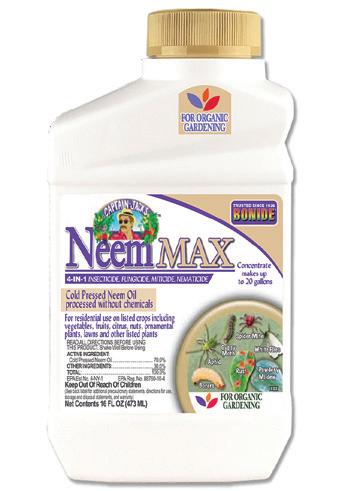
ZFE250* 5 lbs $15.95
ZFE252**
ZFE253*** 50
* SHIPPING WEIGHT 6 POUNDS
** SHIPPING WEIGHT 26 POUNDS
*** SHIPPING WEIGHT 51 POUNDS
$80.95


These all-natural, fast-acting formulations are two of our favorite liquid fertilizers. Use the Grow formula for promoting leafy, green growth and overcoming stress. The Bloom formula encourages early bud formation, fruit set and increases germination rates. Both of these well-balanced, odorless concentrates are great complements to our complete fertilizer. One quart makes up to 32 gallons.
Age Old Grow 12-6-6
ZFE255/1QT* 1 qt $22.95
* SHIPPING WEIGHT 4 POUNDS
Age Old Bloom 5-10-5
ZFE256/1QT* 1 qt $22.95
* SHIPPING WEIGHT 4 POUNDS
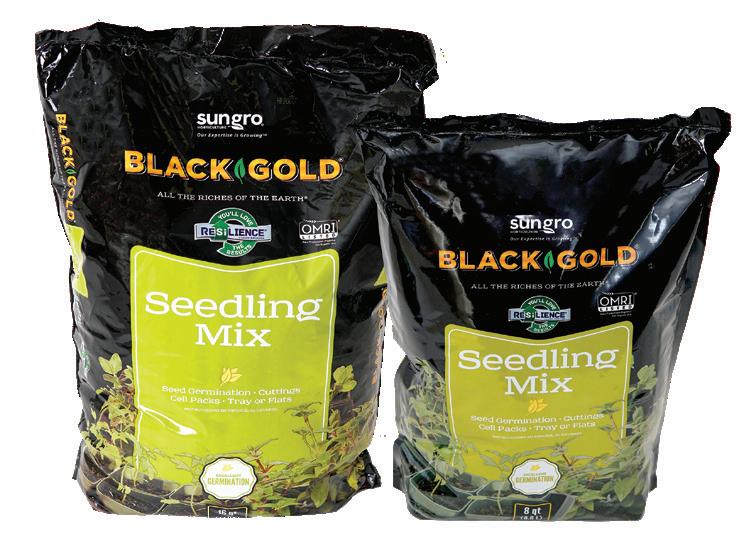
Apowerhouseofpest and disease control! Neem Max is a concentrated, 70% cold-pressed neem oil solution. Mixed with water, it functions as an insecticide, fungicide, miticide and nemacide, controlling all life stages of insects as well as fungal diseases. Processed without the use of toxic solvents or heat, Neem Max is an unadulterated neem extract that mixes easily with water. It retains its critical biologicals as well as Azadirachtin and other compounds that interfere with insect feeding, reproduction and their overall life cycles. Use as a foliar spray or soil drench. One pint makes up to 20 gallons. Approved for organic gardening by the USDA’s National Organic Program (NOP).
ZIN540 1 pint $34.95
Monterey B.t.
Tomato hornworms attacking your beautiful tomatoes? Fight back with Bacillusthuringiensis! This naturally soil-occurring bacterium paralyzes the digestive tract of insects including caterpillars, loopers, cabbage worms, and leafhoppers. Won’t harm beneficial insects, animals, or humans. One pint makes 24–32 gallons of finished spray. Treats up to 10,660 square feet. Organic Materials Review Institute (OMRI) listed. ZIN503 1 pint $24.95


Keepthievingbirdsout. Protects fruit trees, berry bushes, and vegetables from thieving birds and other garden pests. The ¾ inch durable polypropylene mesh provides total protection. Available in three convenient sizes. ZRC752 7’ x 20’ $17.95

PLEASE READ BEFORE ORDERING:
Anearlyfool-proof,chemical-freemethodof protectingfruittreesfrominsects,birds,and weather.
This ultralight, 1mm mesh is large enough to envelop an entire dwarf or semi-dwarf tree. Big but simple to use, you and a friend can cover a tree in just minutes to effectively block fruit flies, moths, wasps, birds and more from damaging your fruit tree crops. Place on trees in early spring, removing when blossoms begin to open to allow pollinators to do their job. Once the flowers drop their petals, the cover can be replaced to protect forming fruit. Durably constructed with reinforced seams, heavy-duty Velcro closing and toggled drawstring base. Soft green color blends with the landscape. Measures 9 feet, 8 inches square.
ZRC768*
* SHIPPING WEIGHT 11 POUNDS
$99.95

Beneficial insects will be shipped immediately when ordered unless prior arrangements have been made with our office. Delayed shipments are not always possible. Additional shipping charges may be applied to delayed shipments. Biological controls have been used for thousands of years and they should be a part of your pest control program. Beneficial insects work by attacking pest insects and thus reducing their numbers. It is important to note that total elimination of pests is not required to grow good crops; it is only necessary to reduce pests below the damage threshold for the crop being grown. When using beneficial insects, it is important to avoid disruptive chemicals. Complete instructions included with each order. We recommend releasing beneficial insects outdoors from April through September, based on your local weather conditions. They may be released in your greenhouse anytime. Available only within the contiguous US.
Worksonsoil-dwellingpests!
Steinernematid/Heterorhabditismix. Predatory nematodes attack soft-bodied, slow-moving insect pests. They do not affect earthworms or plants. They are the only biological control that works below the soil surface. Apply in a spray tank or fertilizer injection system when soil temperatures are above 55°F. One package of 1 million nematodes treats up to 3000 square feet. You may store the nematodes in a refrigerator for up to 1 month. Information sheet included in each package.
ZBG013
Green Lacewings
Eatsbothaphidsandwhiteflies!
$29.95

Chrysoparufilabris This is a voracious preda tor, attacking almost any soft-bodied insect that crosses its path. Best known for eating aphids and whiteflies (up to 60 per hour). Lacewings are shipped to you hatching or close to hatching by the time you receive them. When released they will lay eggs and provide several generations of predators. About 5,000–10,000 lacewings will cover the average yard. Complete instructions are included. Green lacewings are shipped express and should be released upon arrival.
Ourmostpopularsoiltestkitgoesdigital! Take the guesswork out of soil testing with this 4-in-1 kit. Measure N, P, K and pH quickly and simply. Mix soil (or a water/soil solution) in a test tube, add the contents of the appropriate capsule, mix and allow the color to develop, then slide the test chamber into the machine to read the results. Comes complete with colorcoded test tubes with a handy storage dock, batteries, instructions and reference guides, test capsules for 10 pH tests and 5 each N, P, K for a total of 25 capsules.
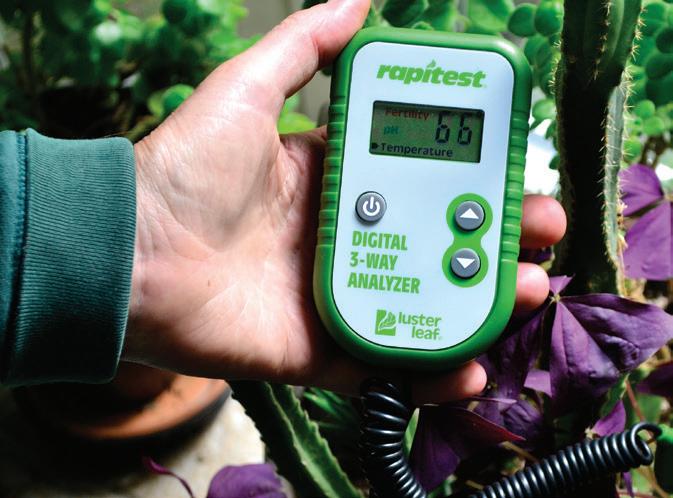
Combinesthemostimportantsoiltests. This digital analyzer provides quick and easy-toread soil testing for pH, temperature and fertility. The fertility function reads the combined levels of nitrogen, phosphorus and potash to determine the nutrient health of the soil. Batteries, guides and instructions included.
ZHG396
Just1toolaccurately measures 4 critical tests!

$39.95

All plants prefer certain growing conditions. With this multipurpose meter, you can easily measure soil pH and moisture, light intensity, and combined nitrogen, phosphorus and potash levels. You can then monitor and adjust the conditions to meet the needs of the plant. Included is a handy guide with recommendations on how to adjust conditions to meet the ideal plant preference.
ZHG398
$39.95
ZHG395 $41.95

Made to tackle any down-and-dirty weeding, digging, dividing, cutting, and planting job, our Hero Hori is built of hefty solid steel with a very handsome, inlaid Cocobolo wood handle. The 7 ½ inch blade is double sided—one is serrated for ripping through roots, and the other is just plain sharp. The blade features inch markings for a handy planting depth and spacing gauge and a twine cutter at the base that conveniently doubles as a bottle opener to help quench a hard-working gardener’s thirst. Comes complete with beautifully tooled leather holster and sharpening tool. Overall length: 12 ½ inches.
ZTO845

rabi and easily separates leaves and branches from the central core of lettuce, cauliflower and more with just a quick stab and twist. The comfortable, hi-vis, plastic handle is easy to spot in the garden and meets food safety requirements. The super sharp stainless steel blade and corer offer a lifetime of harvest use. Knife is 7 ¼ inches long and corer extends 3 inches from the handle.
ZTO946
$59.95

Keep all your cutting tools razor sharp with this handy, all-purpose sharpener. It handles pruners, shears, scissors, knives, axes, and more with 4 different sharpeners on one convenient, handheld, tungsten carbide tool. Durably built with a hand guard for extra safe use, non-slip grip, bright orange color for easy locating, and included machine oil and applicator that store in the handle for lubricating and protecting your blades.
ZTO860 $16.95
$29.95

This sharp, lightweight tool is designed for effortlessly slicing through soil and weeds. Built of sturdy stainless steel with a comfortable hard-
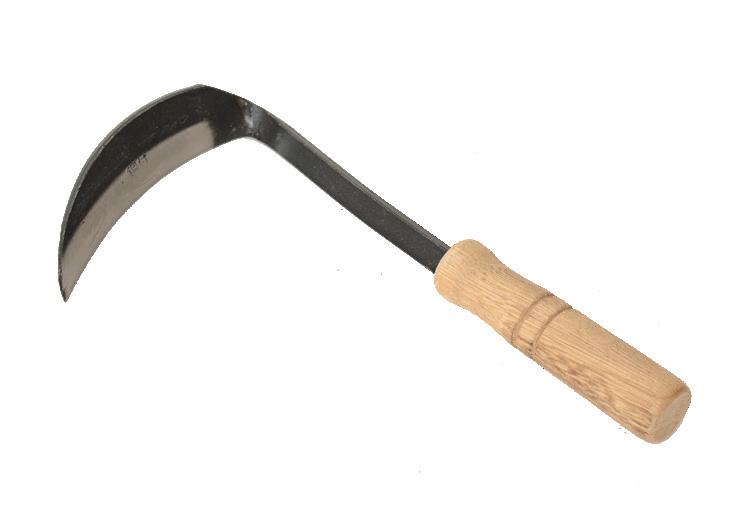

Don’t let the lightweight design fool you, these sturdy, sharp snips are a beast when it comes to harvesting and trimming. The corrosion-resistant, 2 inch, straight, stainless steel blades glide through flower stems, veggie leaves and small branches. Comfortable to use, the spring-action handles nestle in your hands for hours of painfree use. Overall length: 7 ½ inches. Comes complete with a spare spring.
ZTO901 $16.95
ens the soil, and cuts away tenacious weeds with a super sharp blade. Constructed of a single piece of hardened, solid steel with a hardwood handle. The Kana Hoe’s blade is 4 inches long, and the tool is 10 ½ inches long. Available only in right-handed.
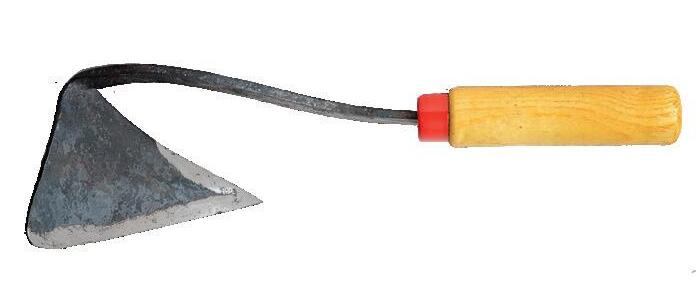
for loosening soil around plants and for weeding. Overall length is 12 inches, plow blade is 7 inches long. Well balanced and comfortable. Sorry, right handed only.
ZTO949
$16.95
The weed eraser!
The thin, high tensile stainless steel blade slices effortlessly through packed soil, cutting weed roots off underground. Great for any garden bed, it is especially handy for weeding tight spaces like planters, window boxes, raised beds, and between rows. The large opening leaves soil in place. The efficient design allows you to cultivate near existing plants without damaging their roots. Total length is 12 inches.
ZTO962
$19.95

This innovative hand seeder with oscillating disc action provides 4 different seed holes, easily changed without requiring disassembly. From small seeded brassicas and carrots to a variety of larger sizes, each hole is sized to provide easy seeding of pelleted or non-pelleted seed. Its UV-resistant body comes apart for easy cleaning; while a clear, windowed hopper cover allows monitoring and one-handed refills of your seed. Designed by market farmers and built in the USA.
ZSE841
$25.95

A durable pair of bypass pruners is a must for every gardener. We love this tool with its smooth operation and easy, squeeze-to-unlock action. Constructed for years of service, the SK5 steel holds an edge and handles anything from pruning branches and harvesting squash to cutting delicate flower stems. Ergonomic, non-slip grips and an included spare spring round out this indispensable tool.
ZTO851
$29.95
I would like to be added to Territorial Seed Company's email newsletter list to receive weekly gardening tips, sales, and special offers!
as Ordered By
No mail delivery at this address
Territorial does not rent its mailing list. However, we do on occasion exchange names with other responsible gardening companies. If you do not want to receive other gardening catalogs, check box below. Please do not exchange my name.
We may substitute a variety of equal or greater value if your choice is not available.
Orders are shipped by US Mail, FedEx, and UPS.
• Guaranteed Ground, add $4.75
• 3-day Express for seed packages less than ½ lb only, add $12.25
• 3-day Express for seed packages larger than ½ lb, or other items, please call for a quote.
• Standard Overnight and 2-day, please call for a quote.
Extra Shipping Charges For Heavy Gardening Accessories
Due to the weight or size of some products we have established a heavy weight shipping chart and weight symbol ( ) to help you calculate the extra shipping charges. Extrashippingcharges applytogardenaccessoriesthat areoversizedorweighmorethan 3pounds.The items affected will be noted with an asterisk and a heavy weight symbol, and will have the actual shipping weight listed below the catalog number.
Alaska, Hawaii, US Territories & Canada Customers
Items with a heavy weight symbol ( ) or seed over 10 lbs are not available to these locations.
Sales Tax Information
Exceptions include: Alabama, Arizona, Delaware, Florida, Mississippi, Montana, New Hampshire, New Mexico, Oklahoma, Oregon, South Carolina and Texas.
If you have a resellers certificate, or other agriculture exemption, please provide it with your order, as you are not subject to the sales tax.
Exemptions must be submitted prior to placing an order on our website.

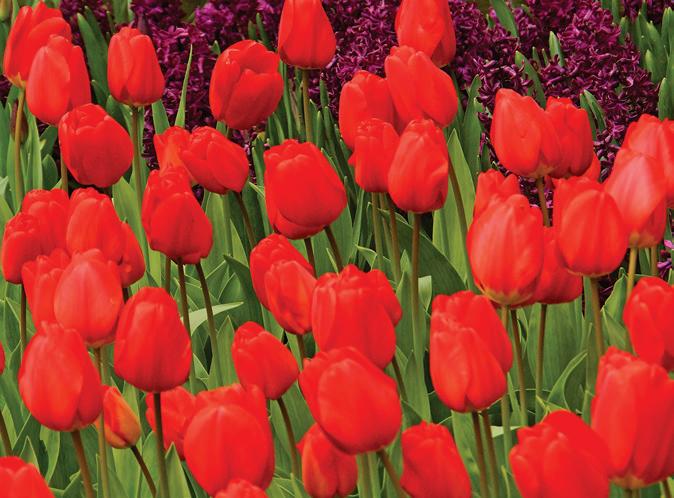
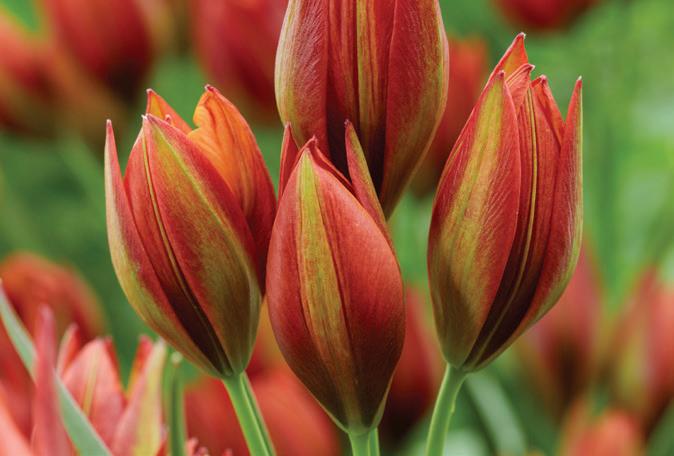


Winter gardening isn’t all about cabbage and cover crops. We see fall-planted bulbs as a gift to one's future self. The bulbs sit tight in the ground until spring, when they burst from the soil and start their show. Our selection of bulbs are cold hardy perennials and return to greet each spring.


Galanthus nivalis (P) Common snowdrop is very early blooming (mid-February through early March) forming naturalized clumps in woodland settings, or any shade garden bed. The 4–6 inch blooms are fairylike, evoking the first stirrings of spring often emerging in the snow and ice. A cold hardy, wild type that is a must have for any bulb lover! An established clump will last indefinitely. Hardy in zones 3–8.
XB102C SNOWDROP NIVALIS

Tulipa Darwin hybrid Oxford (P) A classic red tulip with petal edges softening to an orange glow. The 22–24 inch plants produce large, long-lasting flowers with a sweet fragrance. Enjoy the fiery display of hot colors early in the spring and cut to bring indoors for a stunning arrangement. Hardy in zones 3–8.
XB101C DARWIN OXFORD TULIP 15 bulbs $14.95 Ships

Tulipa Mara (P) Mara is a multi-flowering species tulip with small bulbs and large color. Its toned-down rusty red is streaked with chartreuse green. Plants reach 8–10 inches and produce an abundance of spear-shaped flowers on bluish-green stems. Known for naturalizing in any garden setting by multiplying year after year. Hardy in zones 3–8.
XB103C MARA TULIP
10 bulbs
$10.95 Ships September 20 bulbs $21.95
NEW FORMOSA TULIP

TulipaFormosa (P) This fresh, lemon lime viridiflora tulip is brushed with soft green markings, creating a unique color display along with its bright green foliage. Tall flowers splay open fully to display more contrasting colors and an unusual design. Plants grow to 20 inches tall and are naturalizing. Hardy in zones 3–8.
XB104C FORMOSA

NEW

Fritillariapersica (P) Tall, stately, dark and moody, this Persian Lily with its rich maroon to matte aubergine bell-shaped flowers open from bottom to top over a period of weeks. Blue-green lily leaves cover this tall, sturdy stalk, reaching up to 40 inches. Humus and shade loving. Naturalizing and hardy in zones 4–8.
XB108C PERSICA

Narcissus ‘Snowboard’ (P) Charming and classic! A large, cupped daffodil with outstanding growth habit and a long blooming time (March through April). This pure white, nearly iridescent petal is streaked with a light green veining turning chartreuse at the center, highlighting its yellow anthers. Elegantly shaped petals turn to a perfect point on tall 14–16 inch bright green stems. Spring blooming, naturalizing in any part of the yard or garden. Hardy in zones 3–8.
XB105C SNOWBOARD NARCISSUS 5

Narcissus ‘Pheasant’s Eye’ (P) A longtime favorite in our gardens, this small-cupped, fragrant beauty emerges in late spring with a flare of pure white petals punctuated with a brilliant central cup of yellow edged in contrasting vibrant red. Also known as the Poets’ Narcissus, it has been cultivated since ancient times. The 12–14 inch plants naturalize well. Hardy in zones 3–9.
XB082C PHEASANT'S EYE NARCISSUS 5 bulbs $16.95 Ships September 10 bulbs $25.95
Flower bulbs on pages 58‒59 ship in September. Order early for best availability. Detailed planting instructions are included with each order, and may be obtained on our website. Available only within the contiguous US.

Panaxquinquefolius (P) Wild specimens of American Ginseng, sometimes as old as a century or more, have been threatened by poaching and over harvesting. Increased cultivation has helped to preserve this traditional herb. Considered an adaptogen, ginseng is said to reduce the body's various stress responses; studies have found energizing, cognitive-enhancing, cancer fighting and overall immune boosting properties, among others. Known in Traditional Chinese Medicine as a tonic for Qi, the circulating energy of life, it is also said to have a more cooling, Yin tonic effect than Panax ginseng. Native to woodland understory habitats throughout the eastern and central United States, it grows best in 70–90% shade and is ready for harvest in 3–10 years, depending on the growing method. There is a market for select leaves and seeds in the interim. Fresh seeds can take two years to germinate, but ours come pre-stratified for fall sowing to emerge the following spring. Hardy in zones 3–8.
HR1175C
Ginseng seeds ship in September/October. Order early for best availability. Detailed planting instructions are included with each order, and may be obtained on our website.
Quercusrobur(EnglishOak); Tuber borchii (Bianchettotruffle) Truffles top the list of gourmet delicacies, and these elusive subterranean fungi are now within reach for the home gardener thanks to centuries of effort to domesticate them. Truffles live exclusively in the soil around the roots of a suitable host tree. In this case, we have the truffle mycorrhizae established on the roots of a common English oak tree. Suitable for growing in zones 6–9, the truffles may take 5–7 years to successfully establish themselves, but the resulting annual winter harvests can last for decades. Note: Bianchetto truffles require a soil pH between 6.0–8.3. If your soil is more acidic, we recommend preparing your planting area with lime to adjust the pH well in advance of receiving your trees.
The Bianchetto truffle is a highly prized Italian species. Its name indicates the whitish coloration in contrast to blackish truffles. Inside, the flesh is brown with white marbling, and the strong aroma is described as earthy, garlicy and cheesy. The hazelnut to golf ballsized truffles lend themselves to a vast array of recipes.
XF179C ENGLISH OAK TREES/BIANCHETTO TRUFFLES
1 plant shipped in December $65.95

Muscari Paradoxum (P) True blue is rare in the botanical world and these 19th century heirloom bulbs bloom in a cascade from bright robin’s egg blue to a deep indigo, into an electric violet. The 6–8 inch plants are easy to grow with a long bloom time from April through May. Extremely winter hardy (zones 3–8) and naturalizing into clusters.
XB107C
Inoculated, 1 year old Truffle Tree seedlings ship in early December. Order early for best availability. Detailed planting instructions are included with each order, and may be obtained on our website. Available only within the contiguous US.


Camassiaquamash (P) Electric blue to indigo star shape flowers create a dramatic backdrop to the bright yellow anthers. One to three inflorescences emerge on a single stalk and tall raceme is excellent for cutting. This unique meadow bulb tolerates wetland conditions and deep shade in the spring, preferring to dry out later in the summer. Endemic to western North America and naturalizing abundantly. This native species was an essential food source for Indiginous people, producing sweet, edible bulbs when roasted. Hardy in zones 3–8.
XB110C CAMAS
SAFFRON CROCUS
Crocus sativus (P) This authentic Saffron Crocus has been cultivated for valuable spice production since antiquity for the world trade. Each fall blooming flower produces three colorful red stigma which are hand plucked, imparting fragrance, flavor, and color to a variety of dishes. The flowers are lilac purple deepening to plum and reach 4-5 inches. Fall blooming and should be planted immediately upon arrival. Hardy in zones 6-9. Naturalizing in sunny, dry soil.
XB055C
Flower bulbs on pages 58‒59 ship in September. Order early for best availability. Detailed planting instructions are included with each order, and may be obtained on our website. Available only within the contiguous US.



